QP
NOVEMBER 2025

INTERVIEWS
SARAH DREW, JULIA FILIPPO, TAJANA
GUDENUS, & YASAMAN FASHION
SHOPPING
TRAVEL
DESTINATION
LAMU ISLAND, KENYA

NOVEMBER 2025

SARAH DREW, JULIA FILIPPO, TAJANA
GUDENUS, & YASAMAN FASHION
SHOPPING
LAMU ISLAND, KENYA
BY ROCKY BATCHELOR
FASHION COOL STYLE IN A COLD SEASON

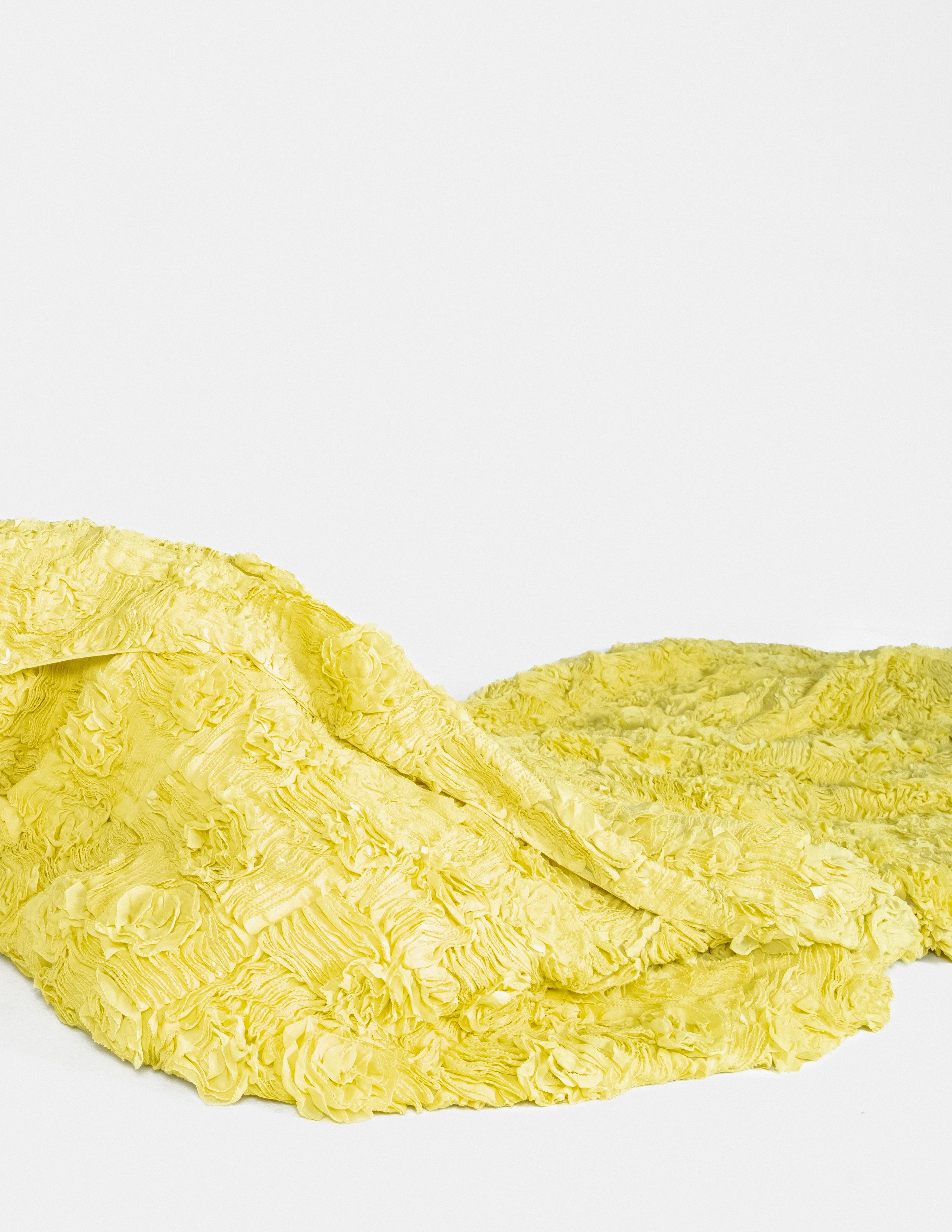

EDITOR-IN-CHIEF
EDITORIAL PRODUCERs
JOSE-MARIA JIMENEZ
YASMINE KATEB
YVES BRIGHT
MATTHEW SEIFNIA
KARINA DOBRA
KRYSTLE LINA
AREZOO JALALI
Dear Readers,
FASHION EDITOR
CONTENT CREATORS retoucher
GRAPHIC designer
JUANDA B. RUSTAM
CLAUDIA LOMBARDO
SHARON JANE
KUCHMA OKSANA
ANDRE FERNANDEZ
As the crisp air of November settles in, we’re embracing the beauty of change—both in the world around us and in the world of fashion. This month, we are thrilled to feature the stunning Australian model and influencer ZARA HEDGES on our cover, captured beautifully by the talented ROCKY BATCHELOR. ZARA embodies a fearless elegance that perfectly mirrors the spirit of this season: bold, confident, and effortlessly stylish.
Inside, we shine a spotlight on some remarkable individuals who are shaping culture and creativity in their own unique ways. TikTok sensation JULIA FILIPPO shares her journey in the ever-evolving world of social media, while actress, producer, and writer SARAH DREW opens up about her craft and the stories that inspire her. We also speak with marketing guru and entrepreneur TAJANA GUDENUS, whose insights offer invaluable lessons for anyone looking to thrive in today’s competitive landscape. And don’t miss our conversation with DIANA BABAYAN, the visionary Armenian founder of YASAMAN FASHION, whose designs merge tradition with modernity in the most inspiring ways.
For our travel lovers, this issue takes you to LAMU ISLAND, KENYA, a serene and culturally rich destination that invites you to slow down, soak in the sun, and explore its timeless charm.
As temperatures drop, our fashion pages warm you up with Cool Style in a Cold Season, offering inspiration to layer, mix textures, and play with statement pieces. Meanwhile, our shopping guide, Cozy and Chic: The Best Knitwear to Live In This Season, ensures that comfort never compromises style.
November is a time to celebrate transformation—the shift of seasons, the evolution of personal style, and the incredible people who inspire us to embrace our own journeys with courage and creativity. We hope this issue sparks your imagination, elevates your wardrobe, and invites you to explore the world with curiosity and flair.
With style and warmth, JOSE-MARIA JIMENEZ Editor-in-Chief // QPmag
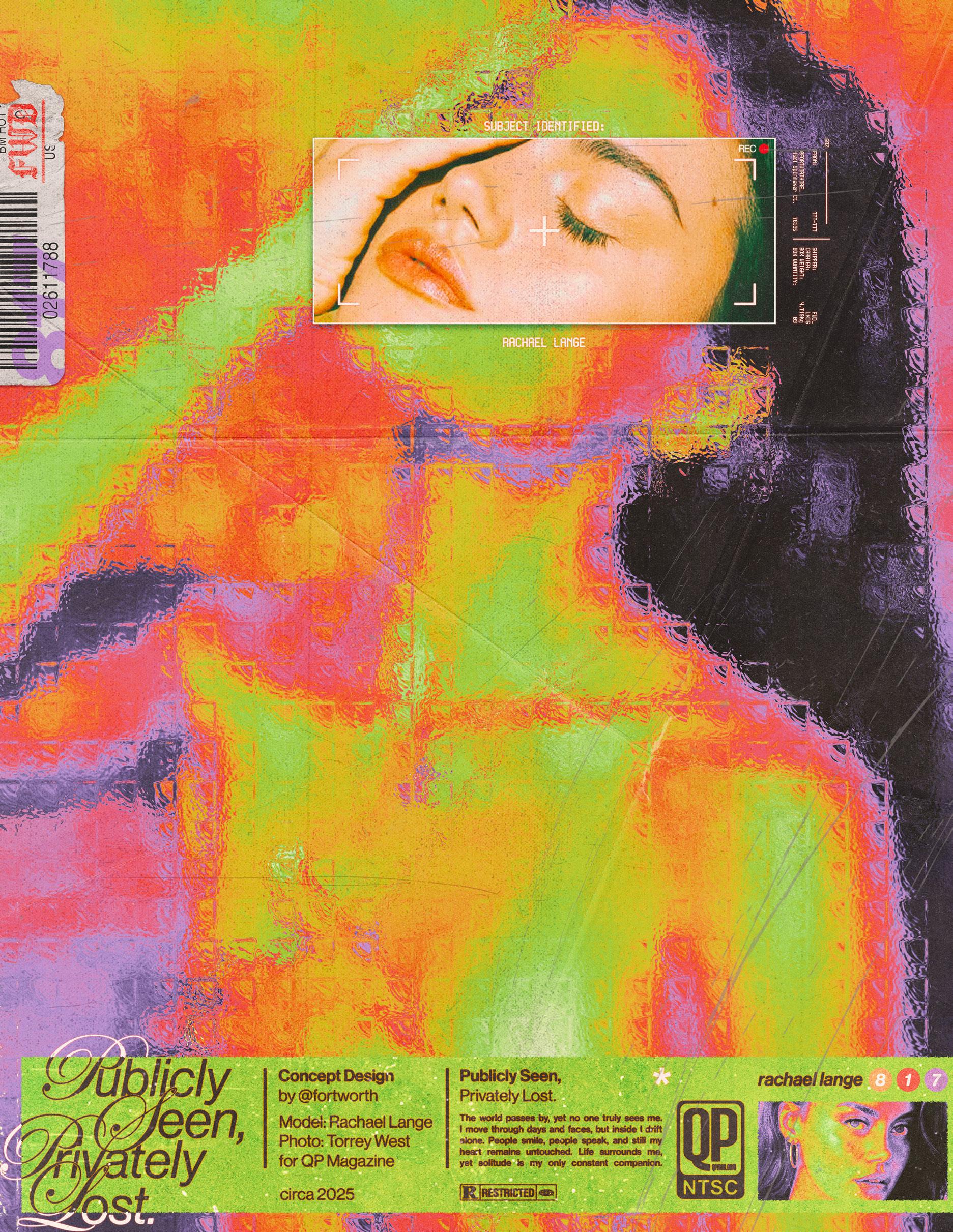
CONCEPT DESIGN: ANDRE
8-19| 20-29| 30-41| 42-49| 50-59| 60-67| 68-81| 82-91| 92-95| 96-103| 104-105| 106-113| 114-115| 116-121| 122-139|
EDITORIAL: STILL LOVERS
EDITORIAL: TIDES OF ELEGANCE
COVER: ZARA HEDGES
EDITORIAL: RADIANT POISE
INTERVIEW: JULIA FILIPPO
EDITORIAL: SUPER BLONDE
INTERVIEW: SARAH DREW
EDITORIAL: CONCRETE MUSE
TRAVEL: LAMU ISLAND, KENYA
INTERVIEW: TAJANA GUDENUS
FASHION: COOL STYLE IN A COLD SEASON
EDITORIAL: FRESH FACE
SHOPPING GUIDE: COZY BUT CHIC
INTERVIEW: YASAMAN FASHION
EDITORIAL: ALMOST PARADISE

CASSIDY: Jacket
PEOPLE LIKE US
Dress
OKERA BANKS
SHAYNE: Jacket
TELL THE TRUTH
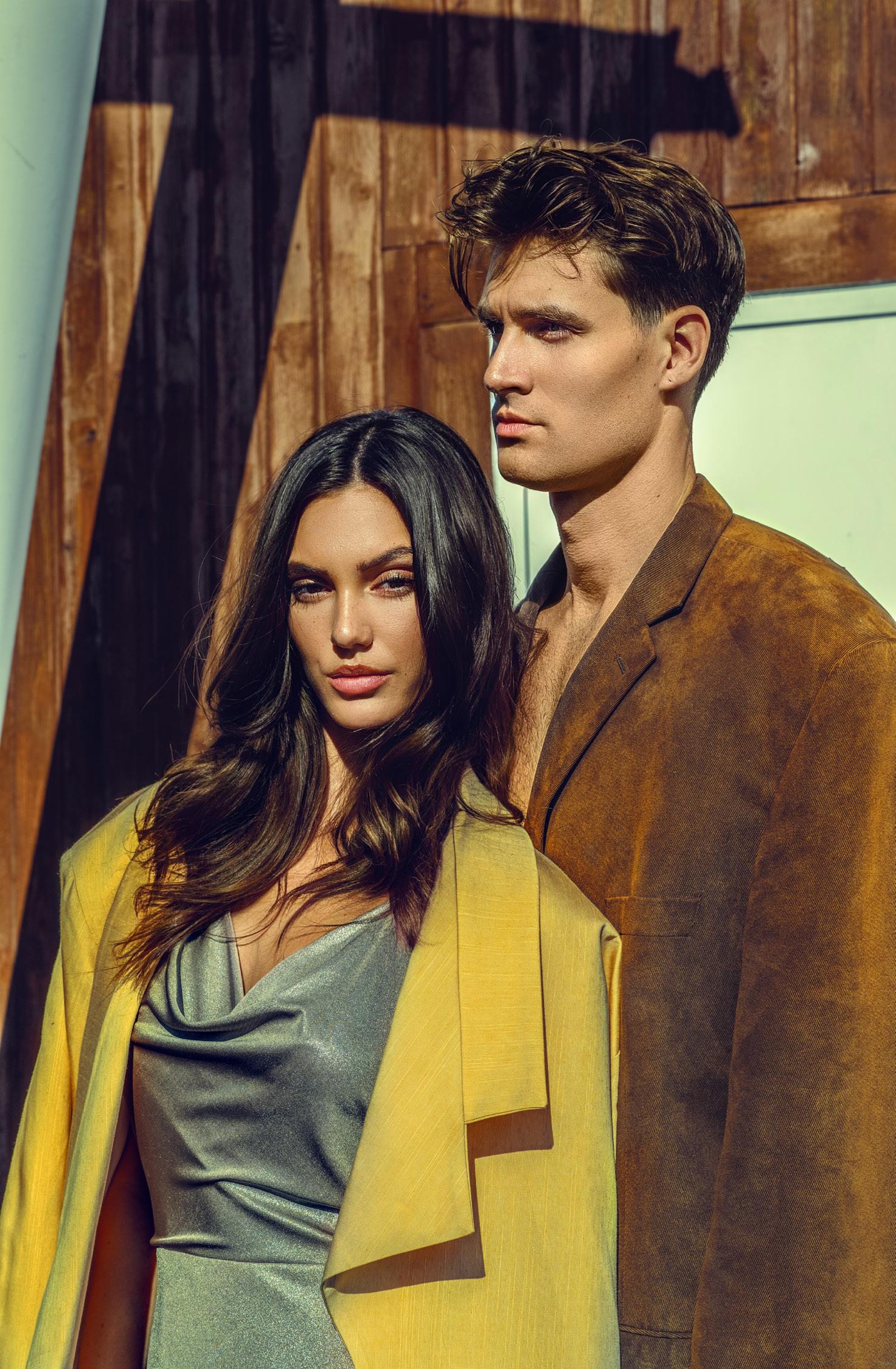
CASSIDY:
Jacket
PEOPLE LIKE US
Dress
OKERA BANKS
Shoes
CYNTHIA ROWLEY
Bag
QOFFAH
SHAYNE:
Jacket & pants
TELL THE TRUTH
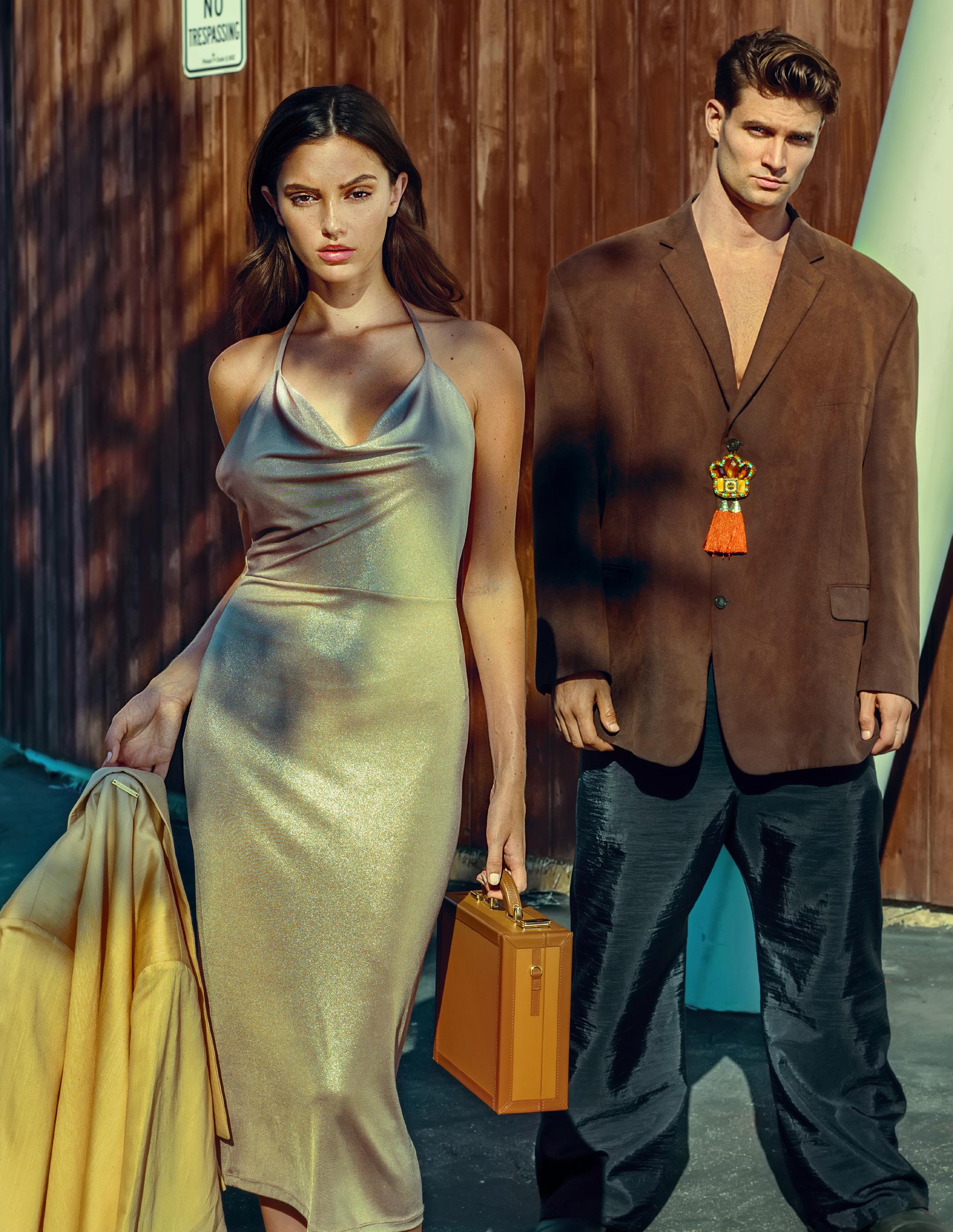
PHOTOGRAPHER/CREATIVE DIRECTOR: KARINA DOBRA @karinadrobraphoto modelS: CASSIDY SMITH @cassidysmith_ with THE INDUSTRY MODEL MGMT LA @theindustryla & SHAYNE DAVIS @thefakeshaynedavis
FASHION STYLIST: AMBIKA SANJANA @styledbyambika
WARDROBE PROVIDED BY MAISON PRIVÉE LOS ANGELES @maisonpriveepr_la PRODUCTION: BELLO MEDIA GROUP @bellomediagroup
PHOTO ASSISTANT: DAVID VENTURA @imdavidventura RETOUCHER: MARK SAPRYKIN @mark_s_retouch
SPECIAL THANKS TO FIERCE MANAGEMENT @fiercemanagement
CASSIDY:
Green Set SAMUEL GARTNER
Shirt MIZAN
Hat TOUKITSOU
Earrings ADIBA
Shoes NONAME
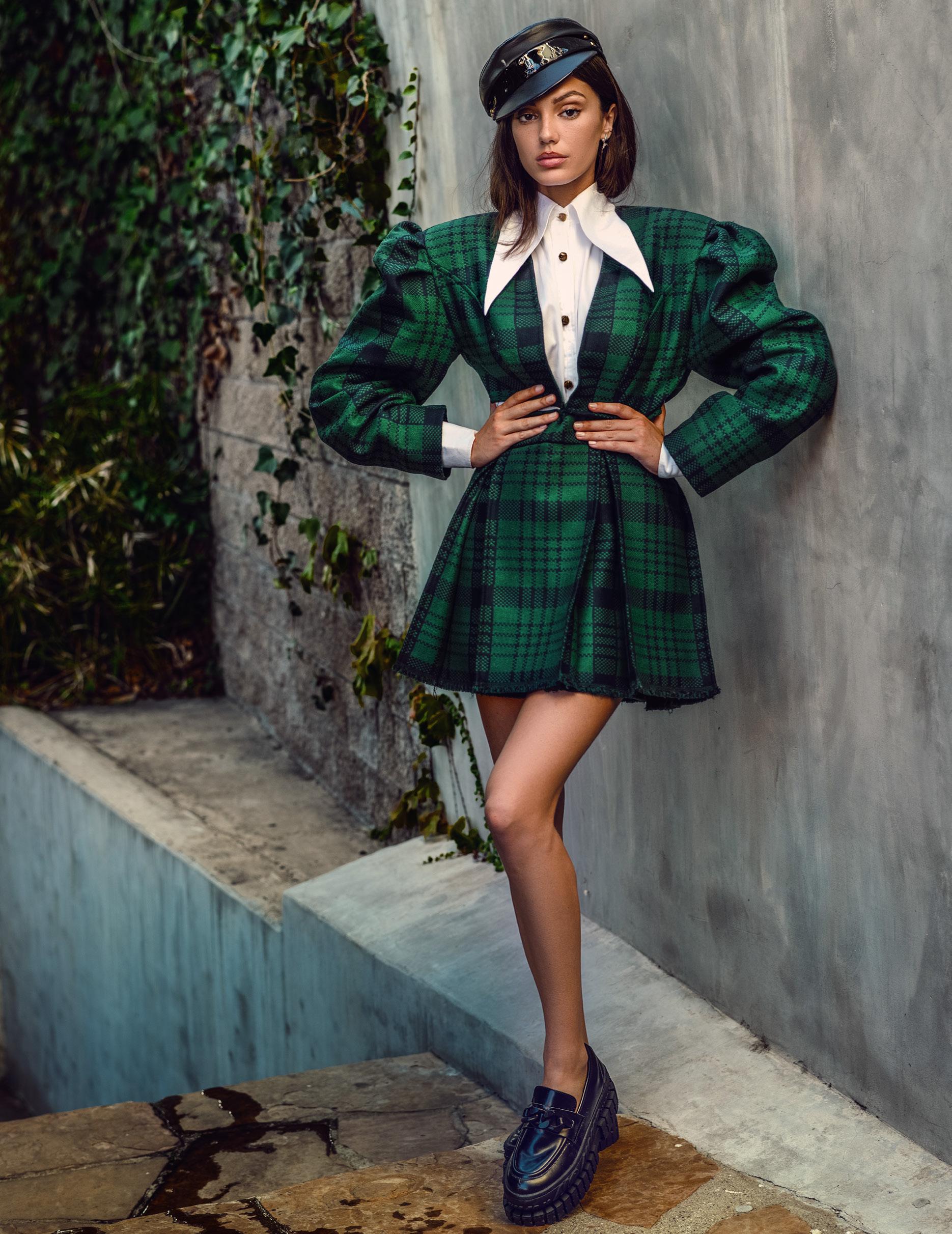

CASSIDY:
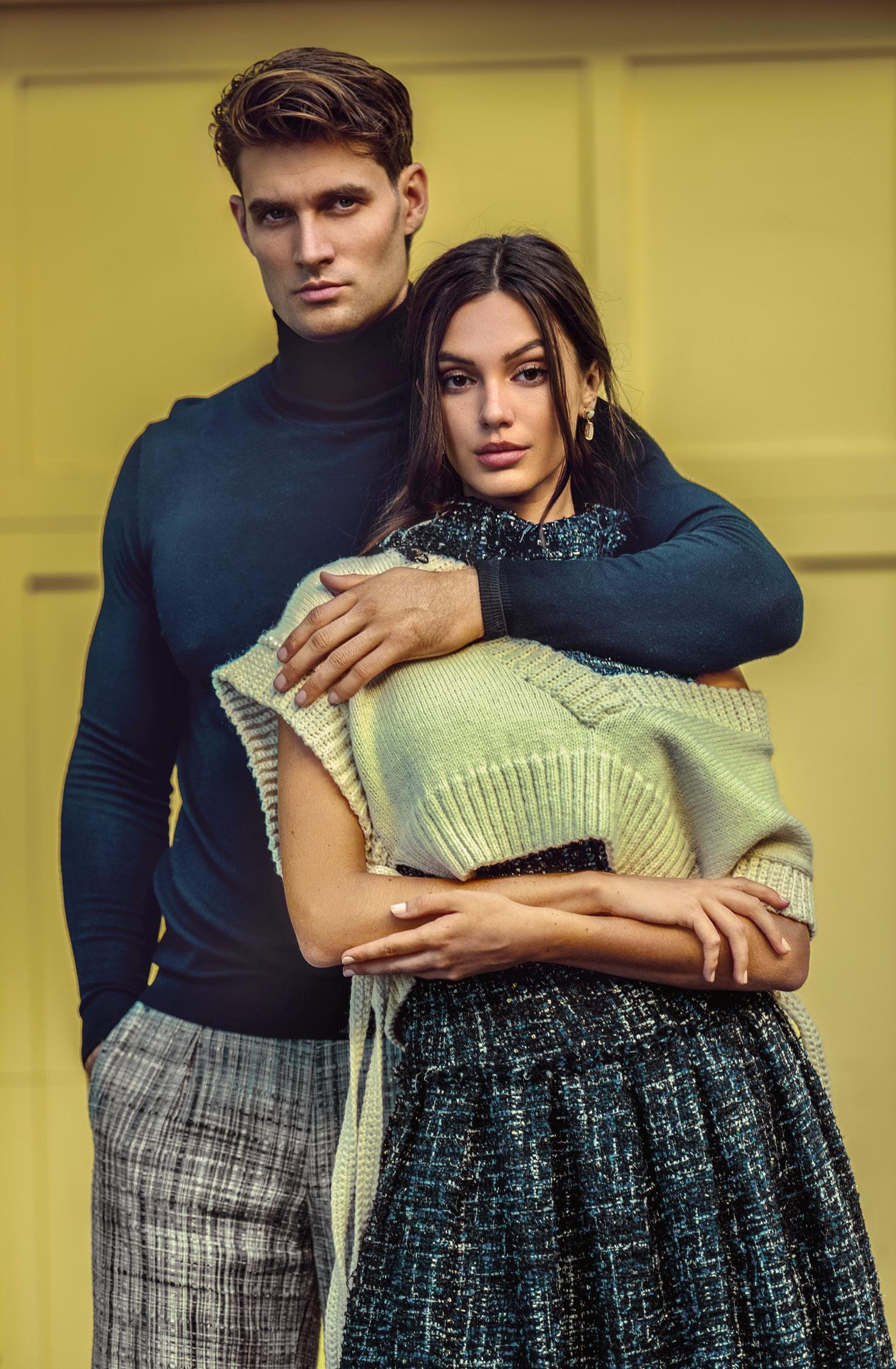
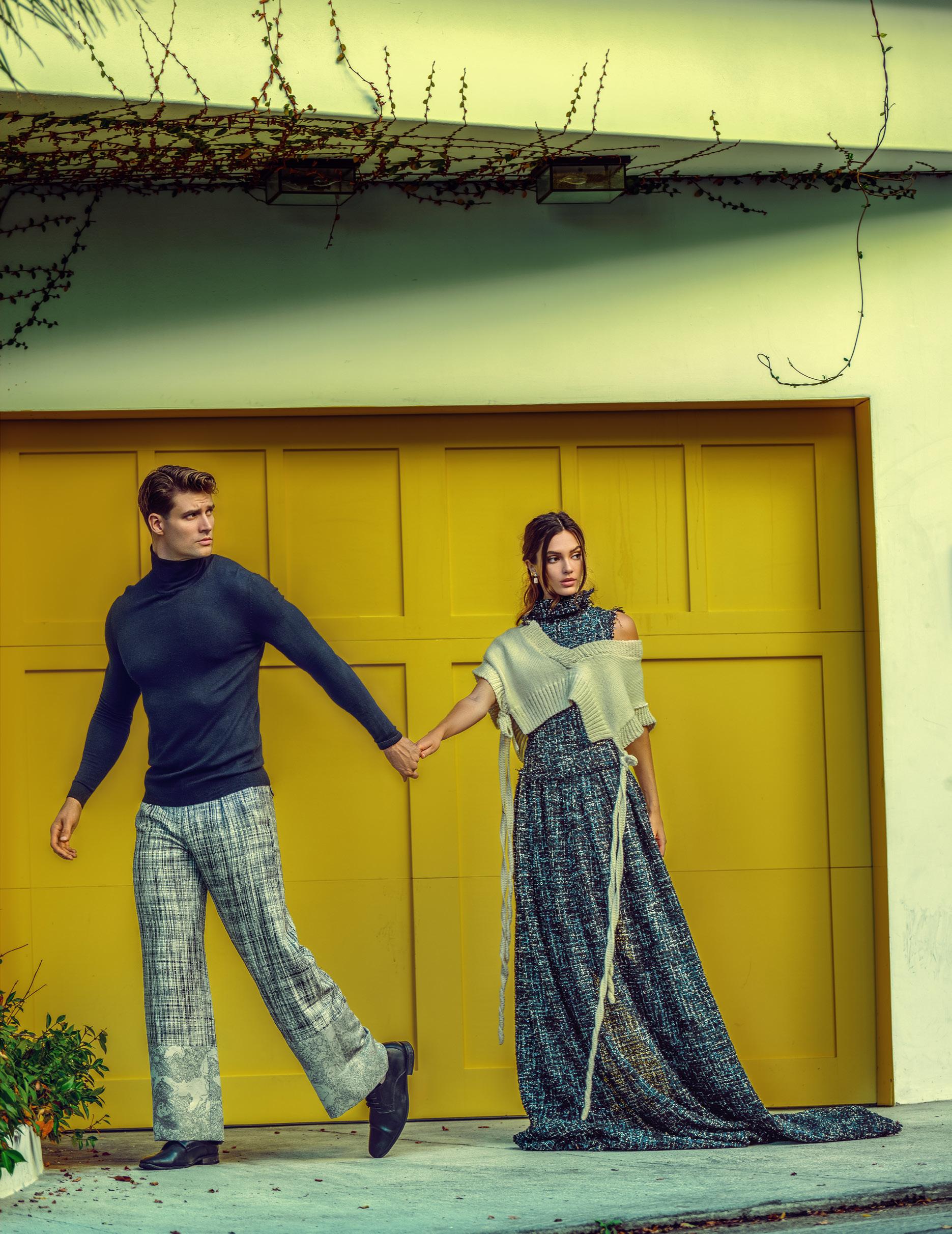
CASSIDY:
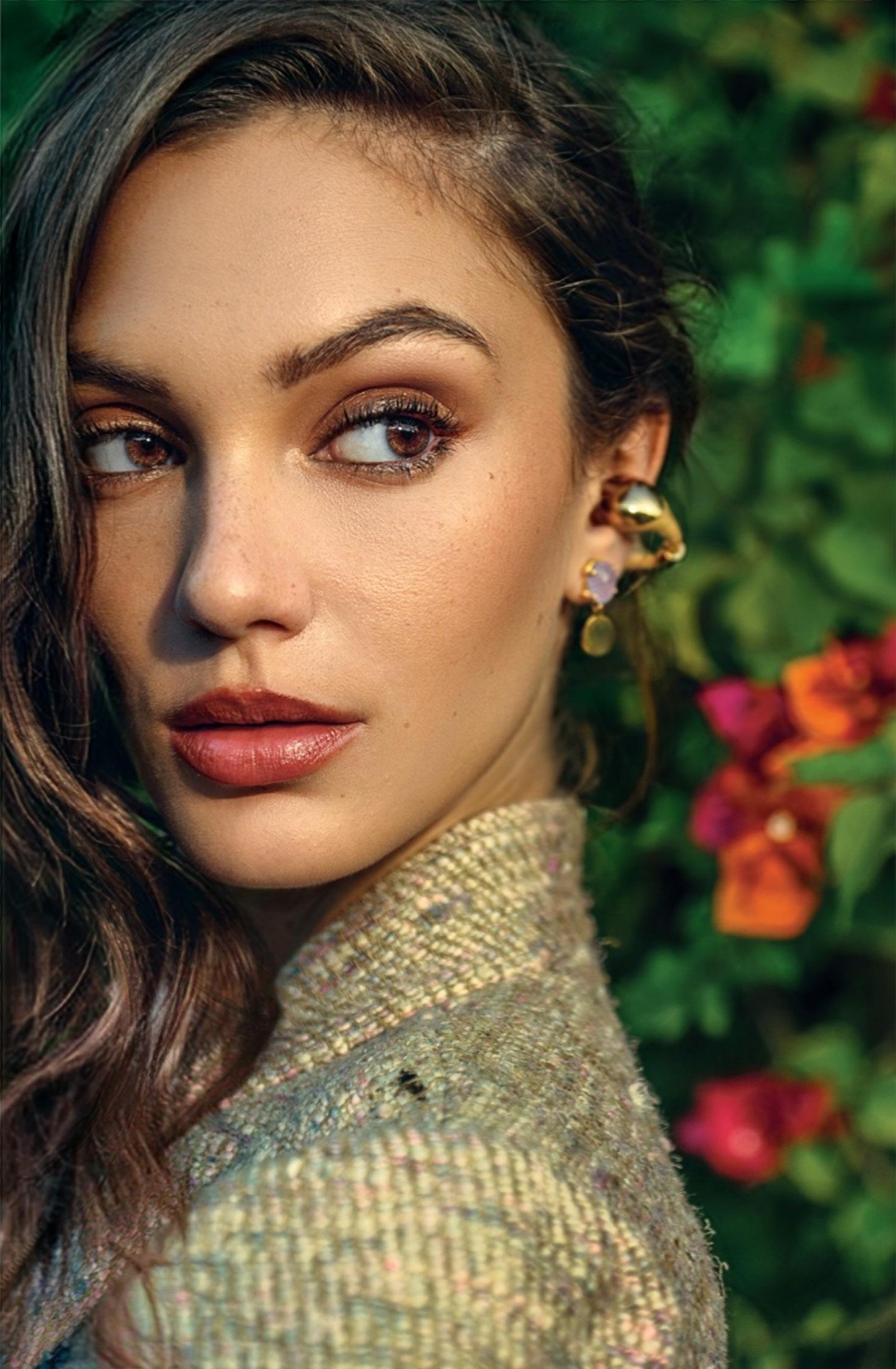
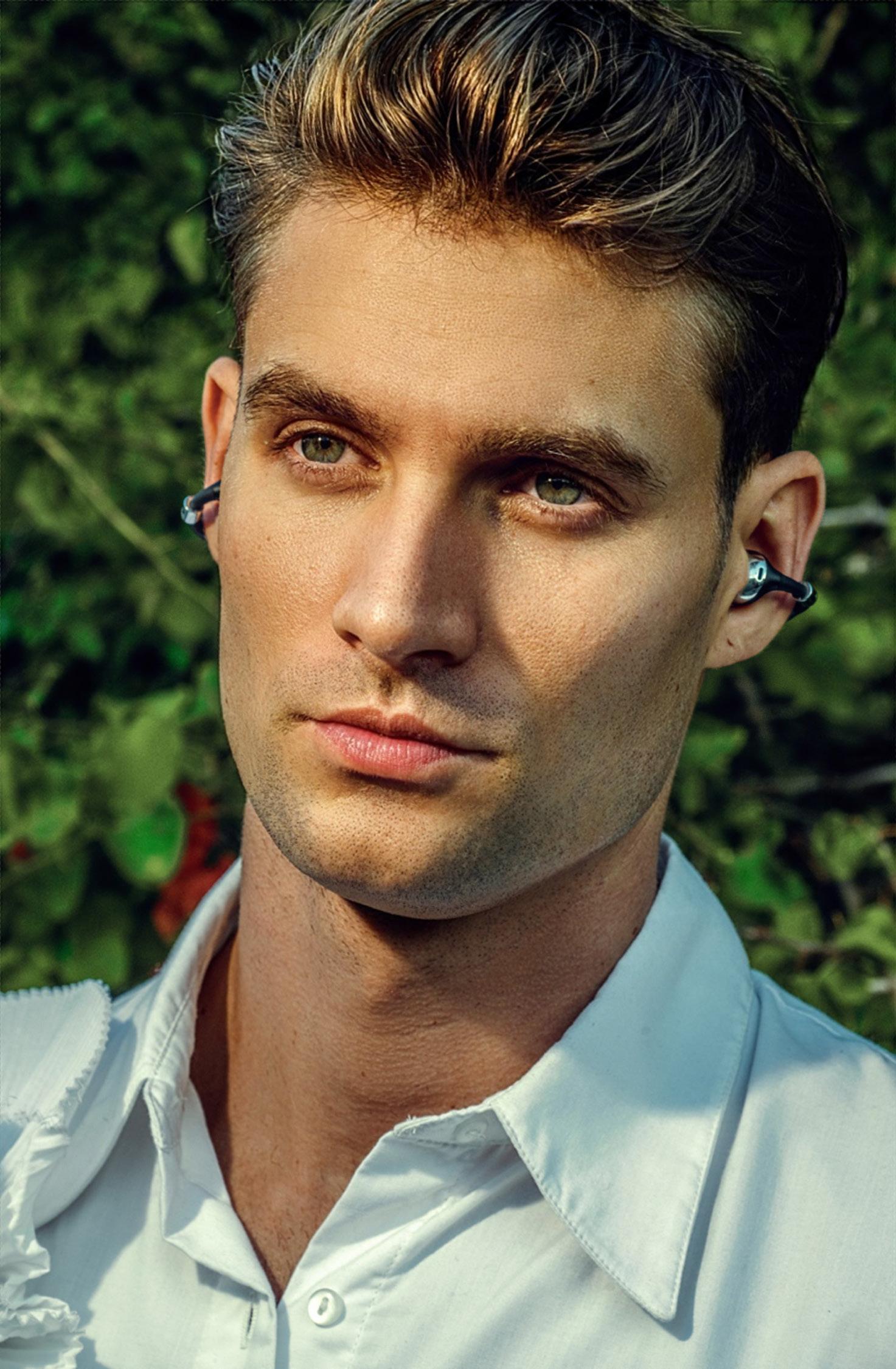


CASSIDY:
Jacket ADIBA
Dress APRIL AND ALEX
Earrings ADIBA
Gloves CHARLES AND RON

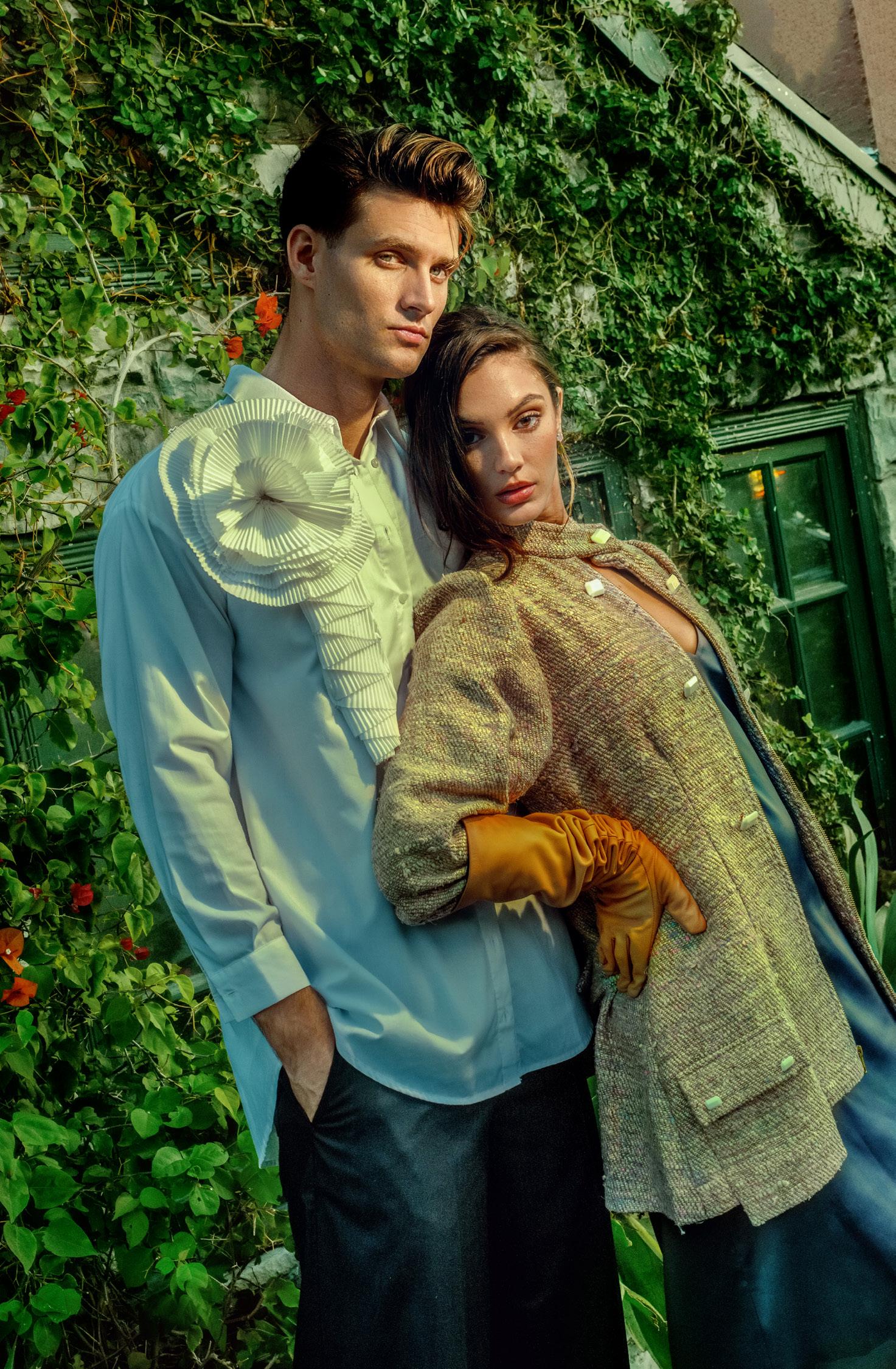
CASSIDY:
Jacket ADIBA
Dress APRIL AND ALEX
Earrings ADIBA
Gloves CHARLES AND RON
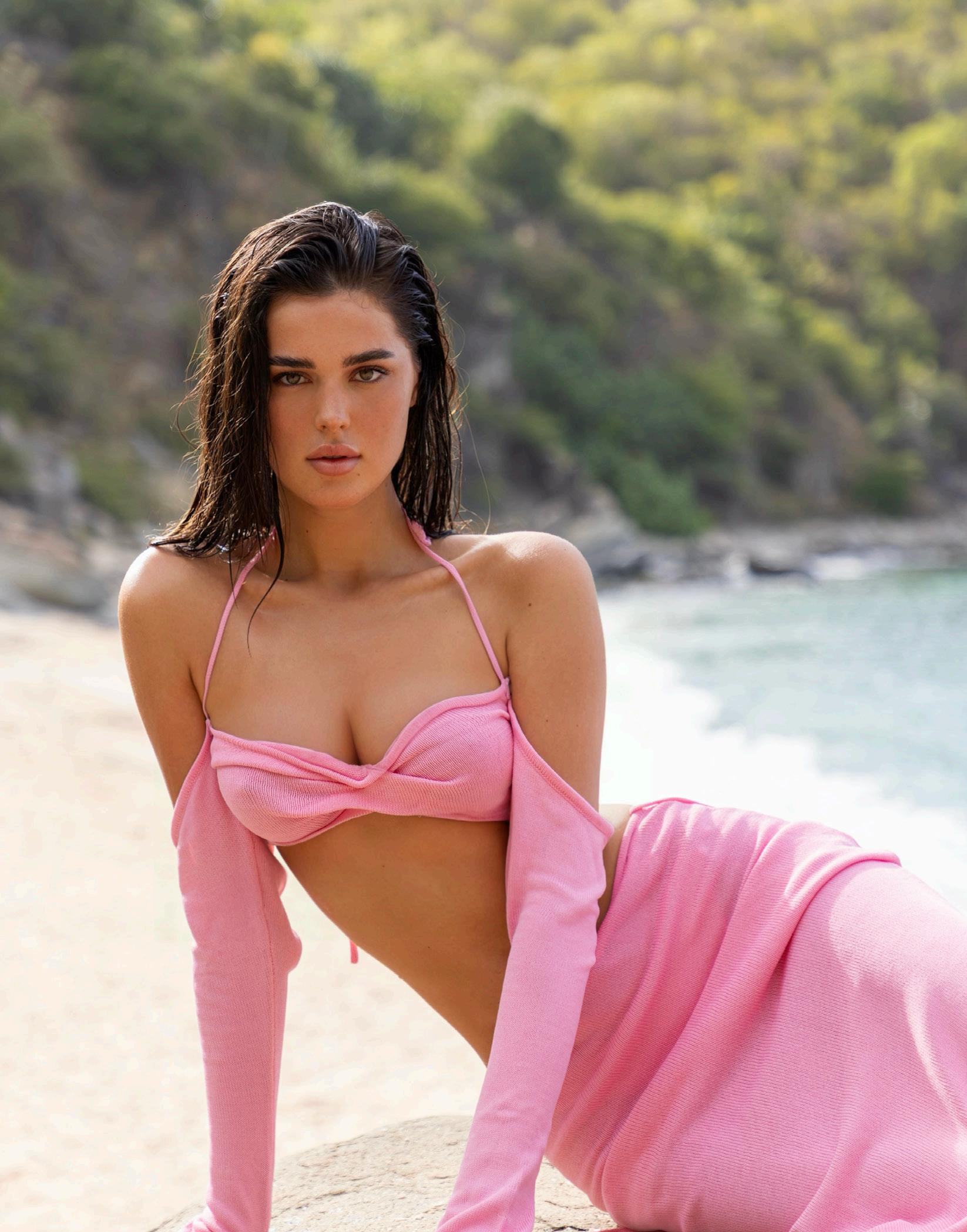

PHOTOGRAPHER: EMILY LAB @emilylab MODEL: GABRIELLA HADJIVU @gabriella.hadjivu AGENCY: REAL WOMAN AGENCY @real_woman_agency
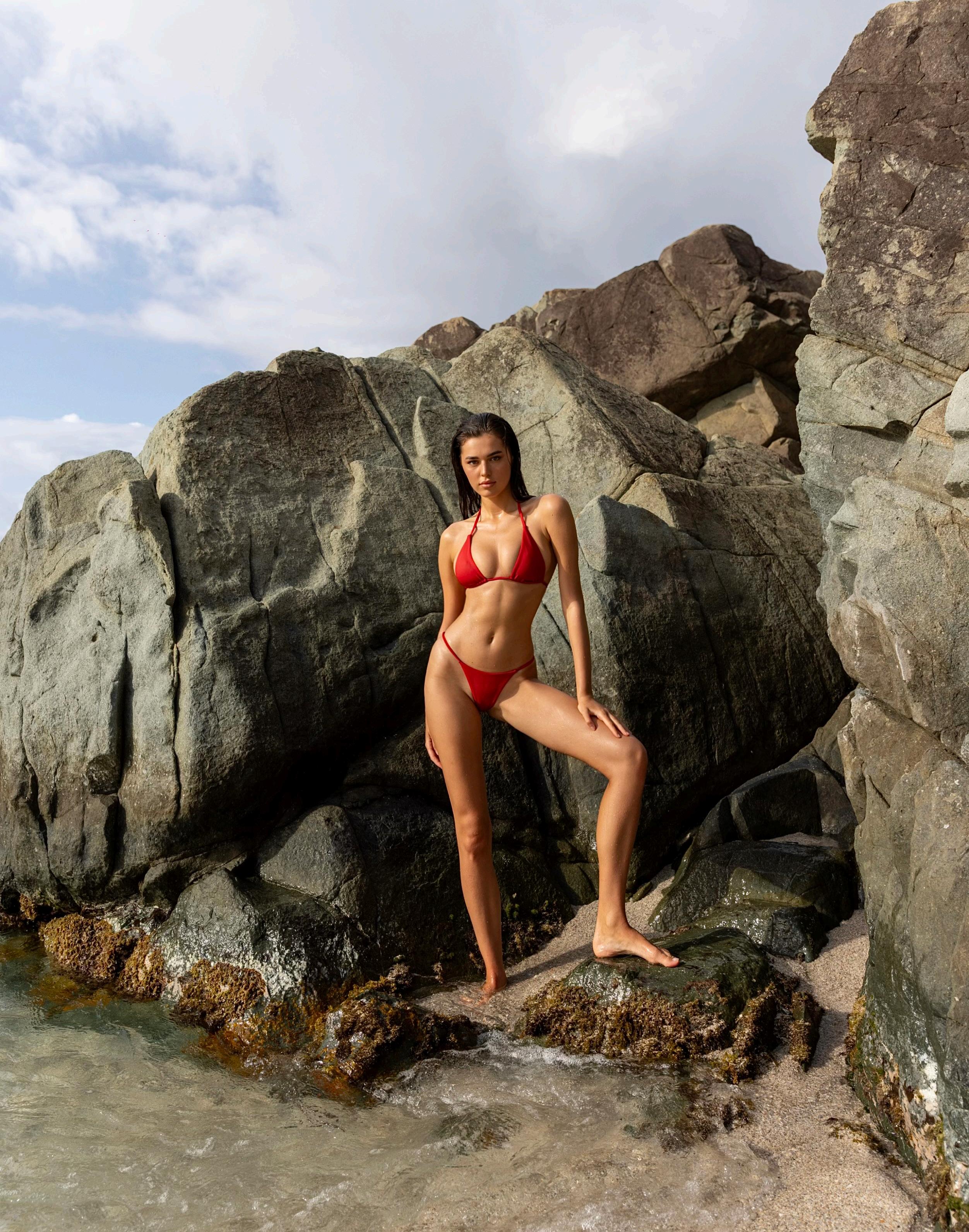
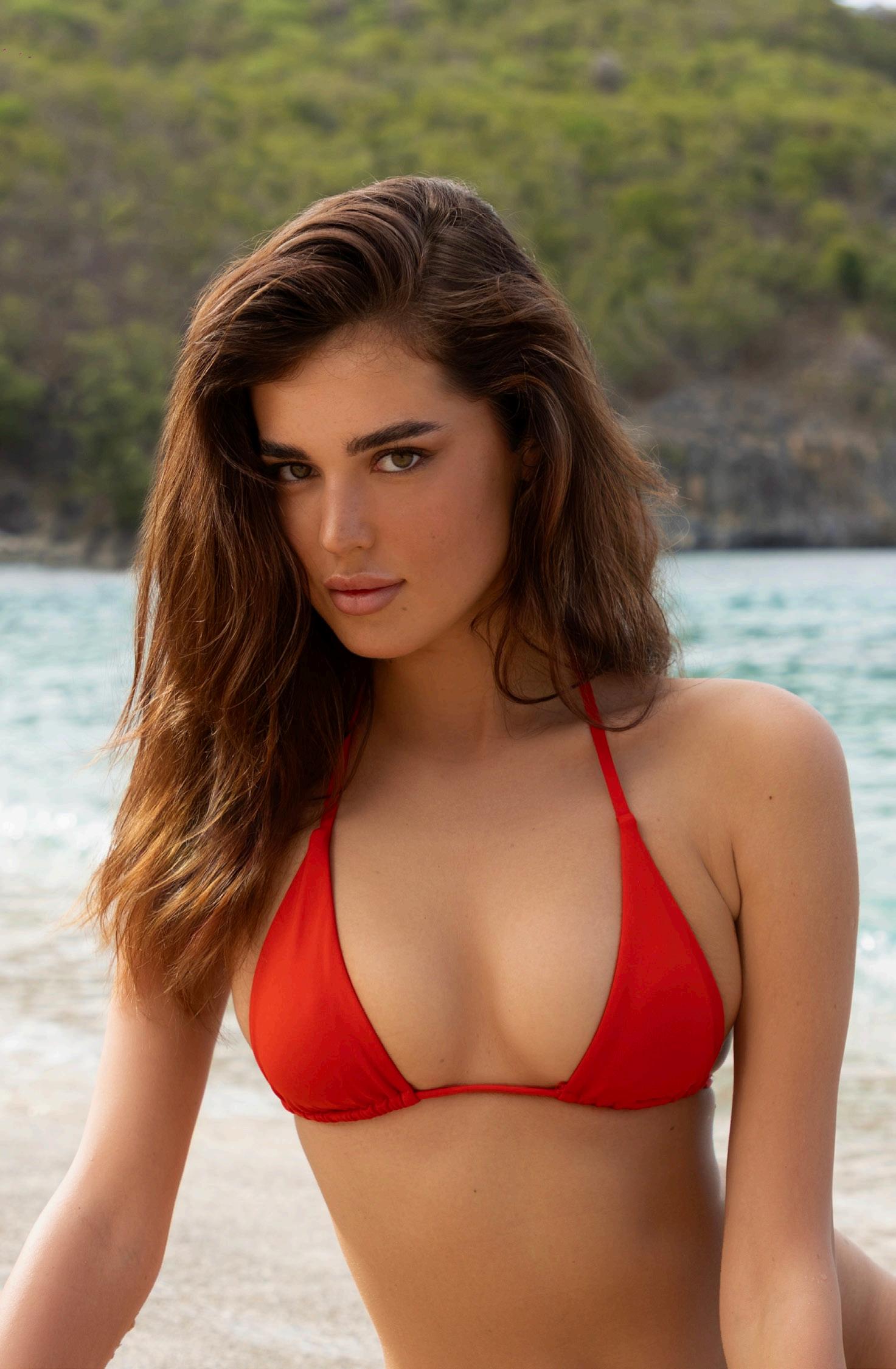
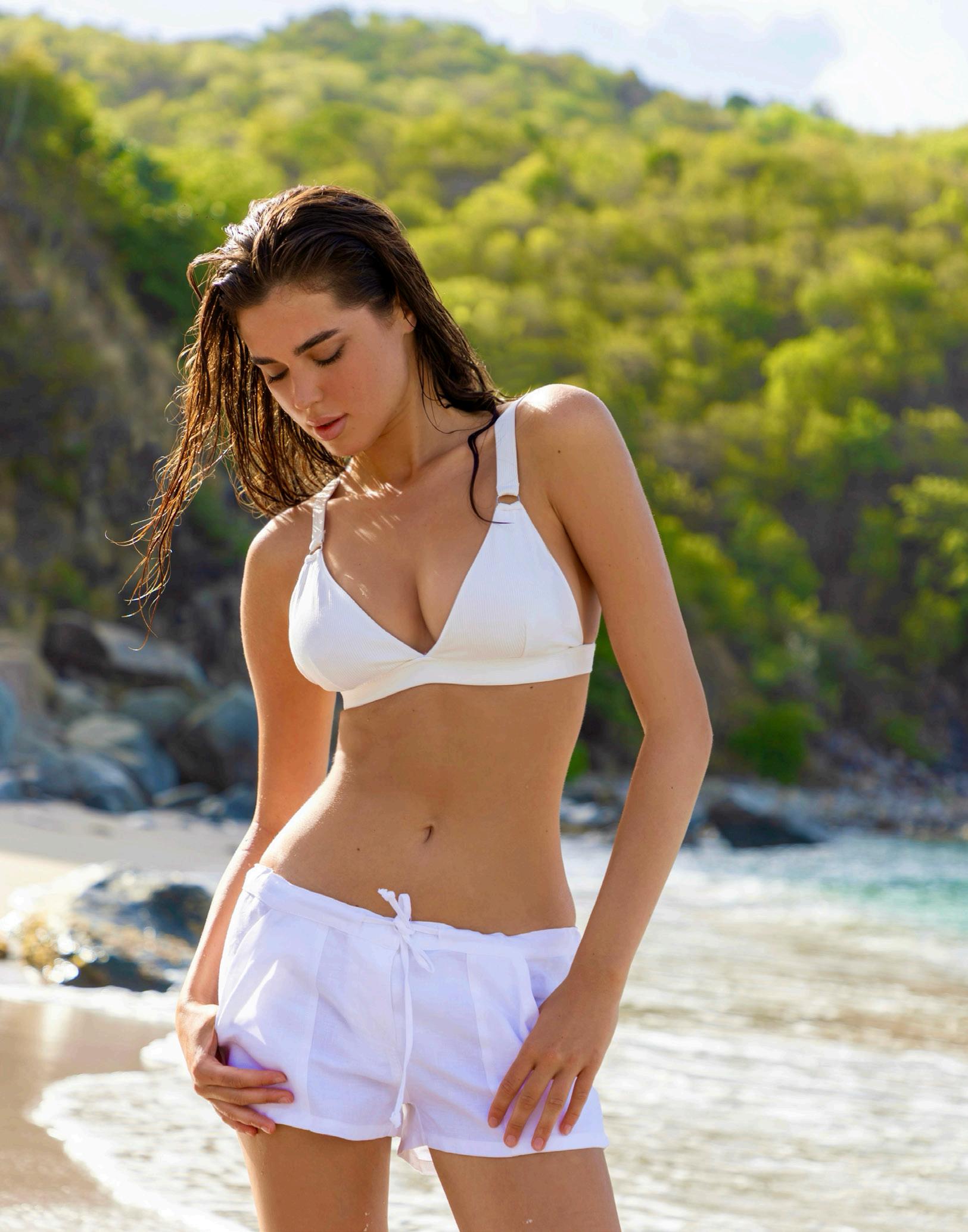
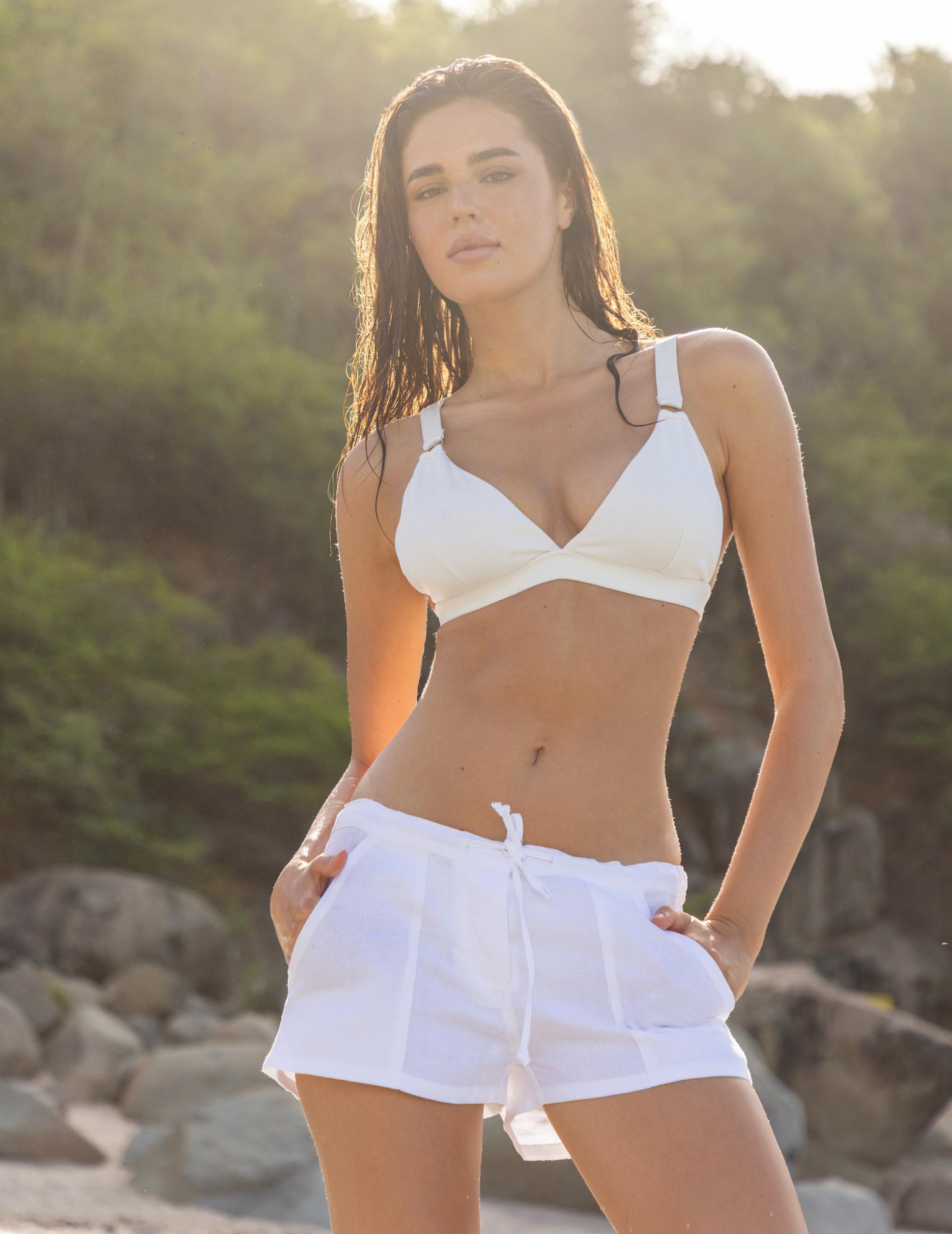
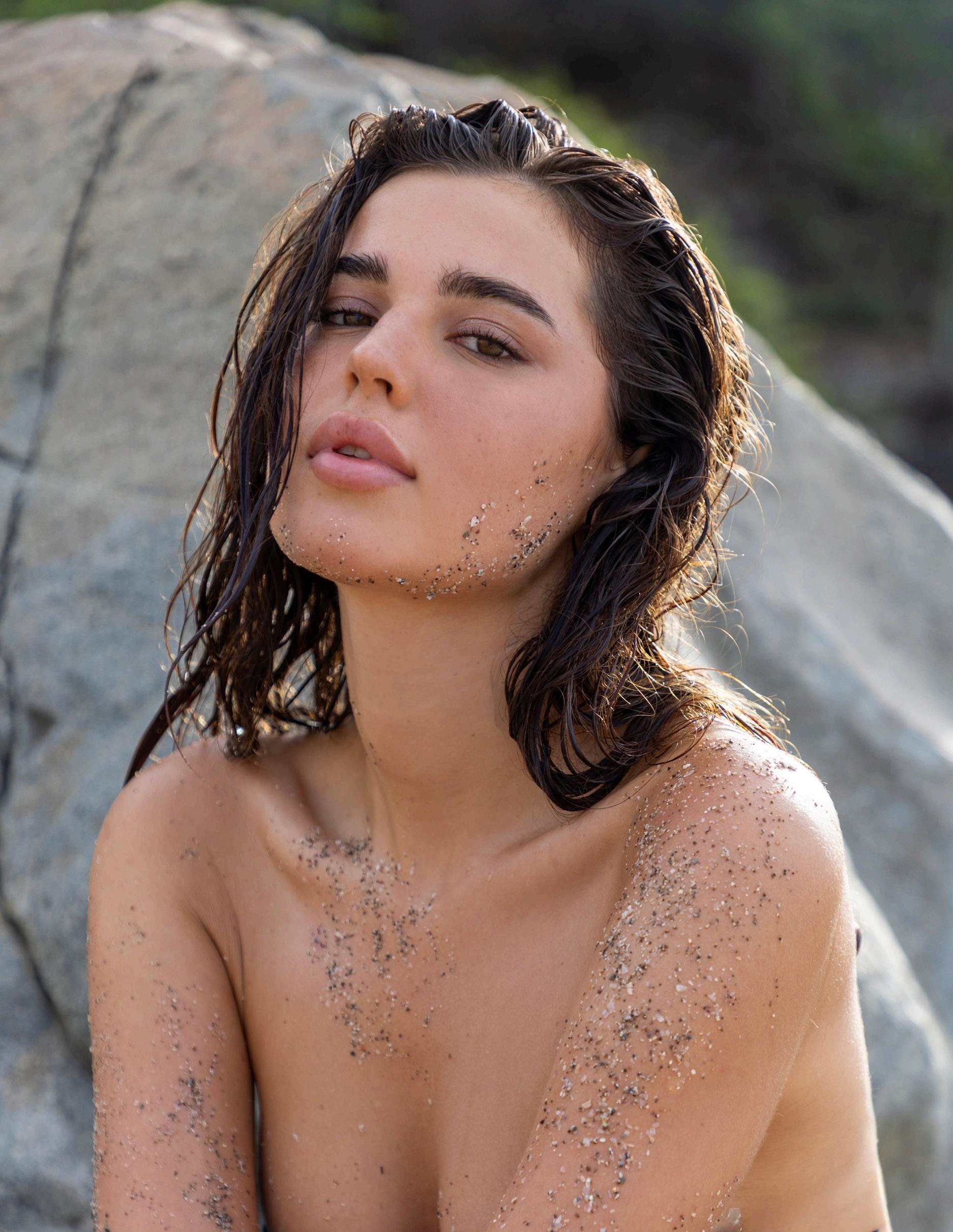

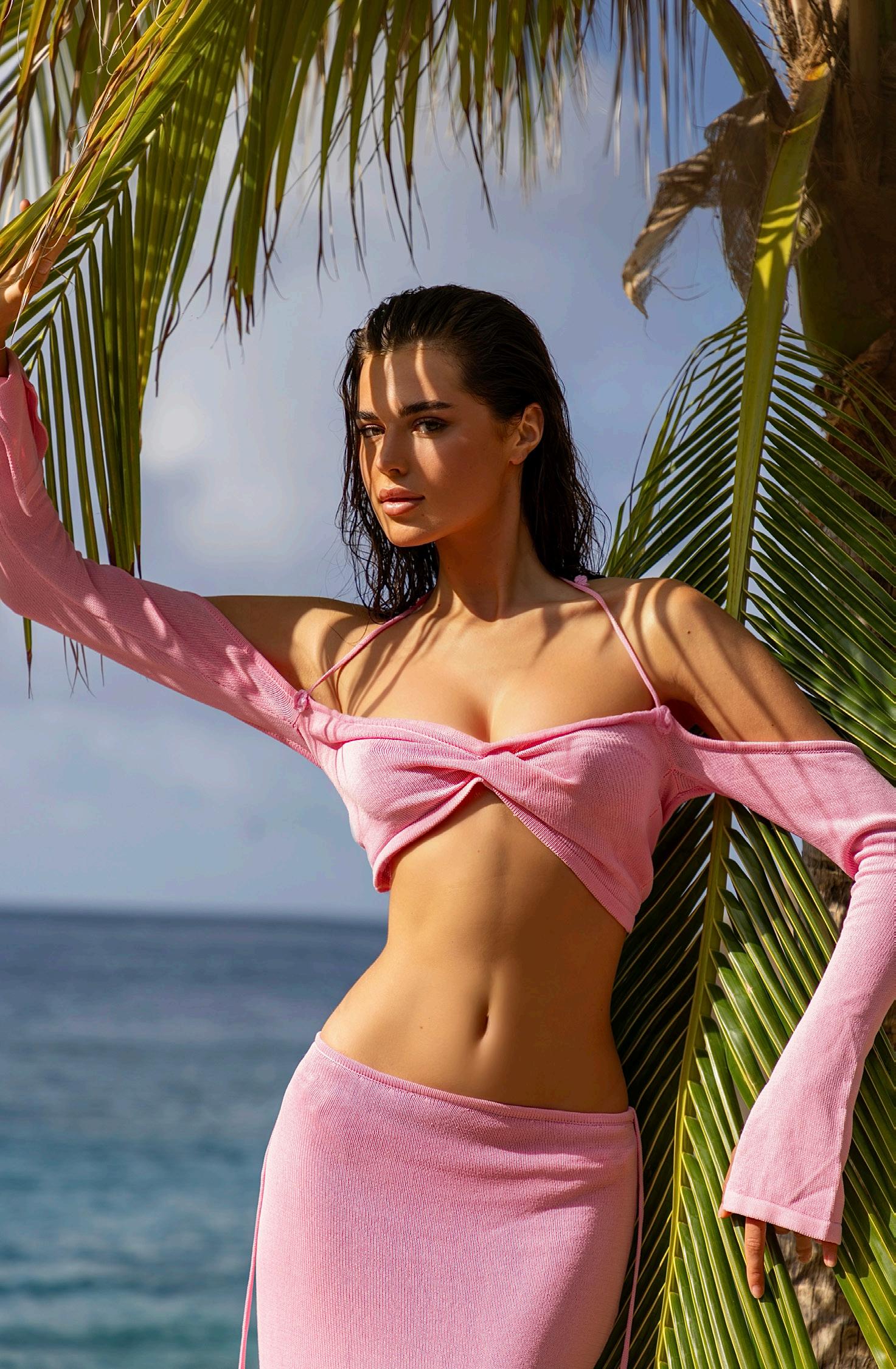

Interview by JOSE-MARIA JIMENEZ
With a radiant smile and an Instagram following of over 337,000, Australian model Zara Hedges has quickly become one of fashion’s most relatable faces. Balancing glamour with authenticity, Zara shares her journey from local brand shoots at 17 to international recognition, proving that confidence, consistency, and gratitude are the real keys to success in the industry. Beyond the camera, she embraces humor, self-awareness, and everyday moments—reminding her fans that even elegance has its playful side.
Zara ’s approach to modeling goes beyond aesthetics. She believes that staying true to yourself while enjoying the creative process is what keeps inspiration alive. From carefully curated Instagram content to mindful morning rituals before a photoshoot, Zara embodies a modern model who values both personal style and mental well-being. As she looks toward the future, her aspirations expand beyond the runway, with dreams of building her own brand and bringing her unique vision to life—cementing her place as a role model for aspiring models around the world.
MODEL: ZARA HEDGES @zarahedges
AGENCY: IKON MANAGEMENT @ikonmanagement
PHOTOGRAPHER: ROCKY BATCHELOR @rockybatchelor
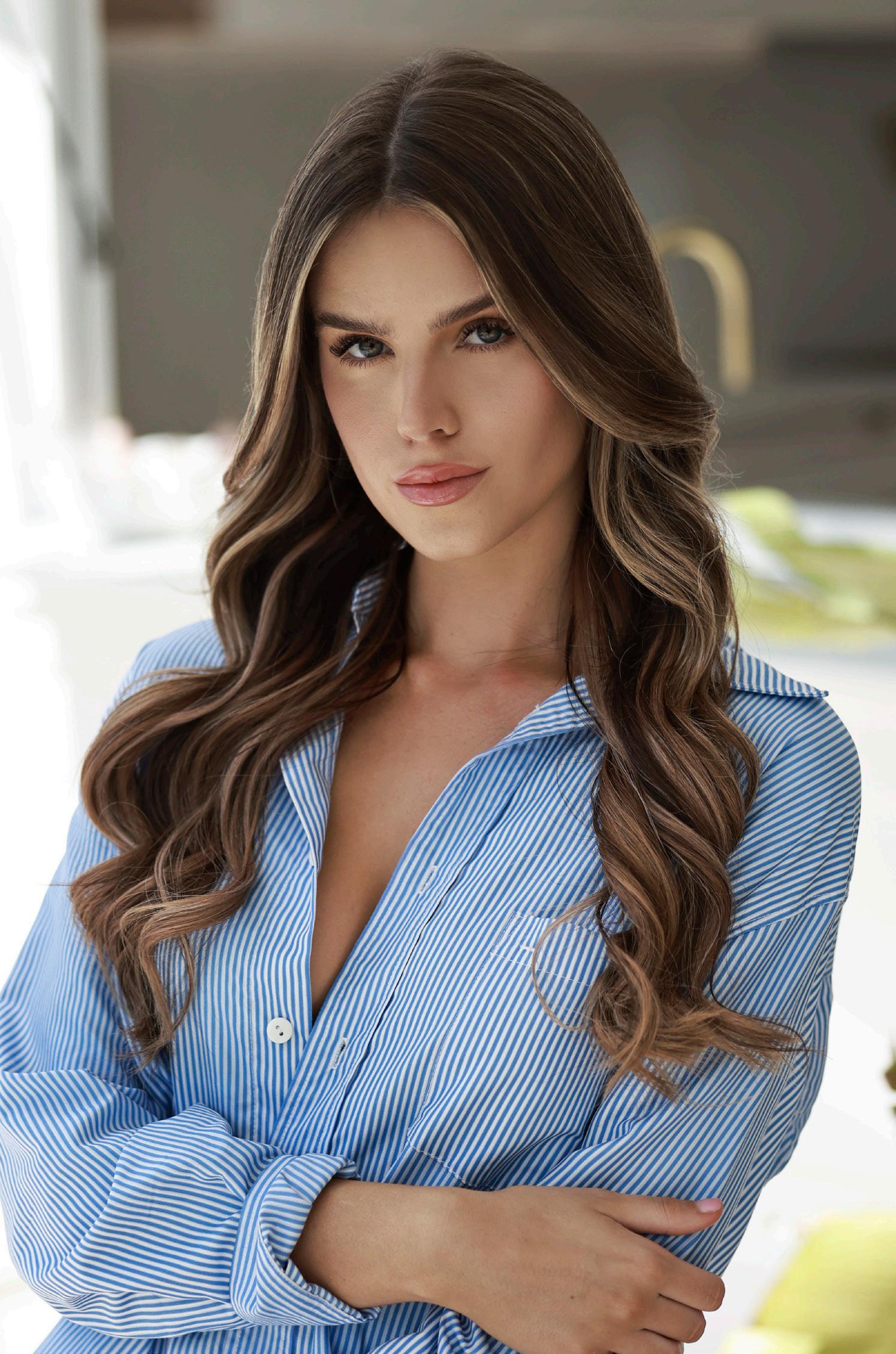
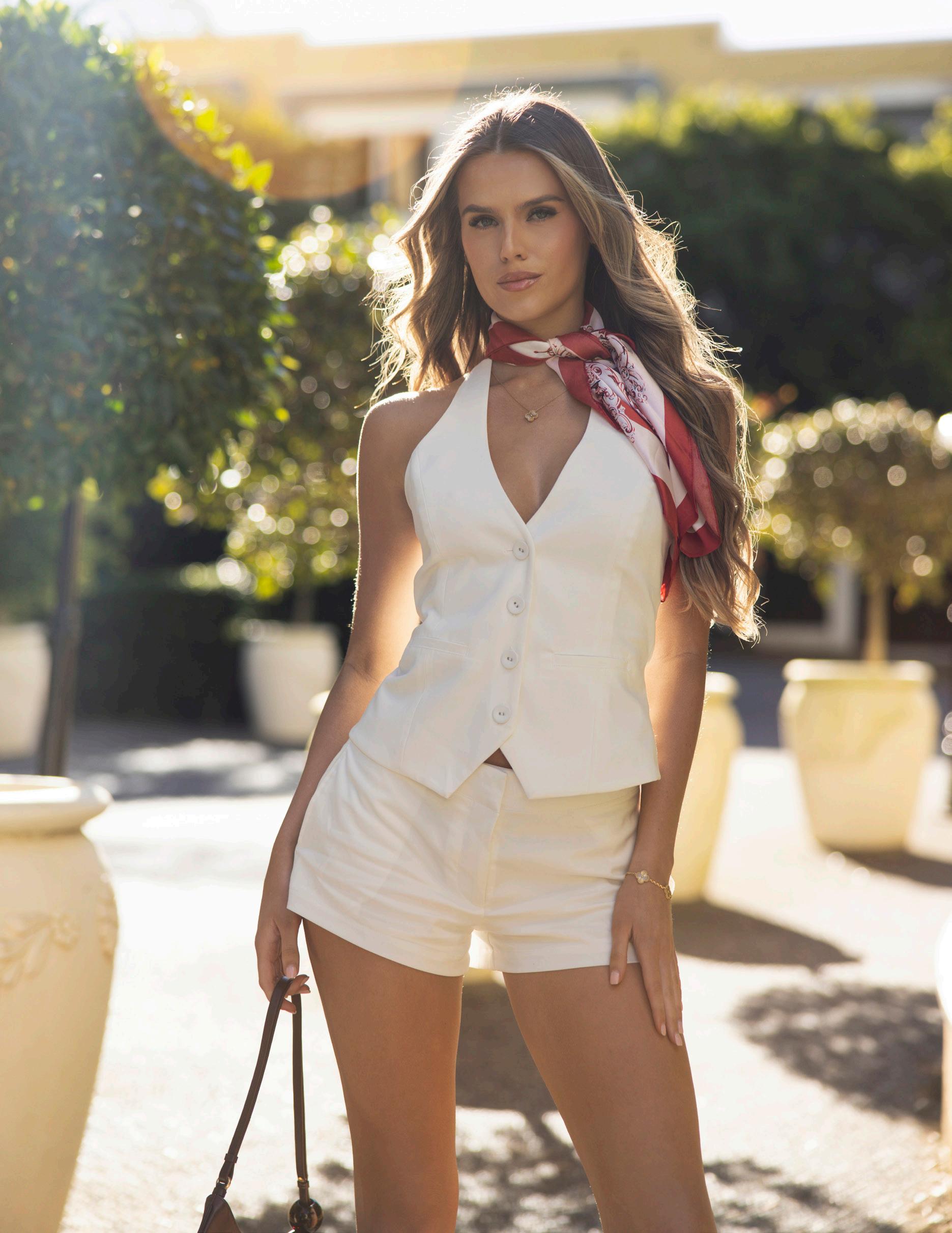
Zara, you’ve built an incredible following of over 337,000 fans on Instagram. What is your approach to connecting so strongly with your audience?
Thank you! I just share what feels authentic to me, I think staying genuine and able to laugh at yourself goes a long way.
How did your journey into modeling begin, and when did you realize you wanted to pursue it professionally?
I started modeling when I was 17, mostly through local brands. I think the moment I realised it could be a real career was when I started getting paid to do what I already loved doing for fun.
Your Instagram showcases a glamorous side of you. How often is Zara on Instagram the same as Zara in real life?
I’d love to say that’s me 24/7, but anyone who’s witnessed the outfits I wear to take my dog out in the morning would probably tell a different story. If you see me before 8 a.m., please pretend you didn’t. ( laughs )
Fashion modeling often requires confidence and consistency—what keeps you motivated and inspired to create new content?
What are some misconceptions people might have about being a model, and how do you address them?
I think a lot of girls still feel like they have to fit a really specific mold to model, but that’s not true anymore. The industry has evolved so much, and there’s space for everyone — it’s what makes modeling today feel more real and reflective of the world we live in.
Instagram and social media evolve constantly. How do you keep up with trends while still maintaining your personal style and identity?
I’ve had those moments where I wore something because it was trending and later thought, what was I thinking? Now I just wear what I feel good in — if I like a trend, I’ll have fun with it but I always go with what makes me feel the most confident.
“Staying in a mindset of gratitude is key for me.”
Gratitude is my biggest motivator. Every time I’m on set or creating something new, I have that little moment of “wow, this is actually my job.” That feeling never gets old and it keeps me inspired.
How do you balance glamour modeling with staying authentic to your followers?
I’m naturally quite private, so I’ve learned that the best way to stay authentic is to just share what feels right in the moment and keep the rest for my real life.
Being called a “Goddess from Australia” is quite a title—how does it feel to be seen that way by your fans and the fashion community?
It’s very flattering — and a little funny. The “goddess” eats chocolate in bed and still can’t parallel park to save her life. ( laughs )
With such a large following, you’re also a role model to many. What message would you like to share with young women and aspiring models?
I’d remind them to be kind to themselves. The voice in your head shapes everything, so make sure it’s a supportive one. Talk to yourself the same way you would talk to your best friend.
How do you prepare yourself mentally and physically before a photoshoot? Any rituals or routines?
I always love to start my morning with a moment for myself whether that’s a quick meditation or Havening Techniques ®, which is a technique that is amazing for calming your mind and resetting your mood. It’s such a beautiful way to begin the day feeling grounded and setting a positive intention.
How would you describe your signature style in 3 words?
Feminine, Clean, Confident.
What are your future goals in the modeling industry? Would you like to explore acting, fashion design, or another creative avenue?
I’d love to create a brand of my own one day. After working with such talented creative teams, you start to really appreciate the thought and detail
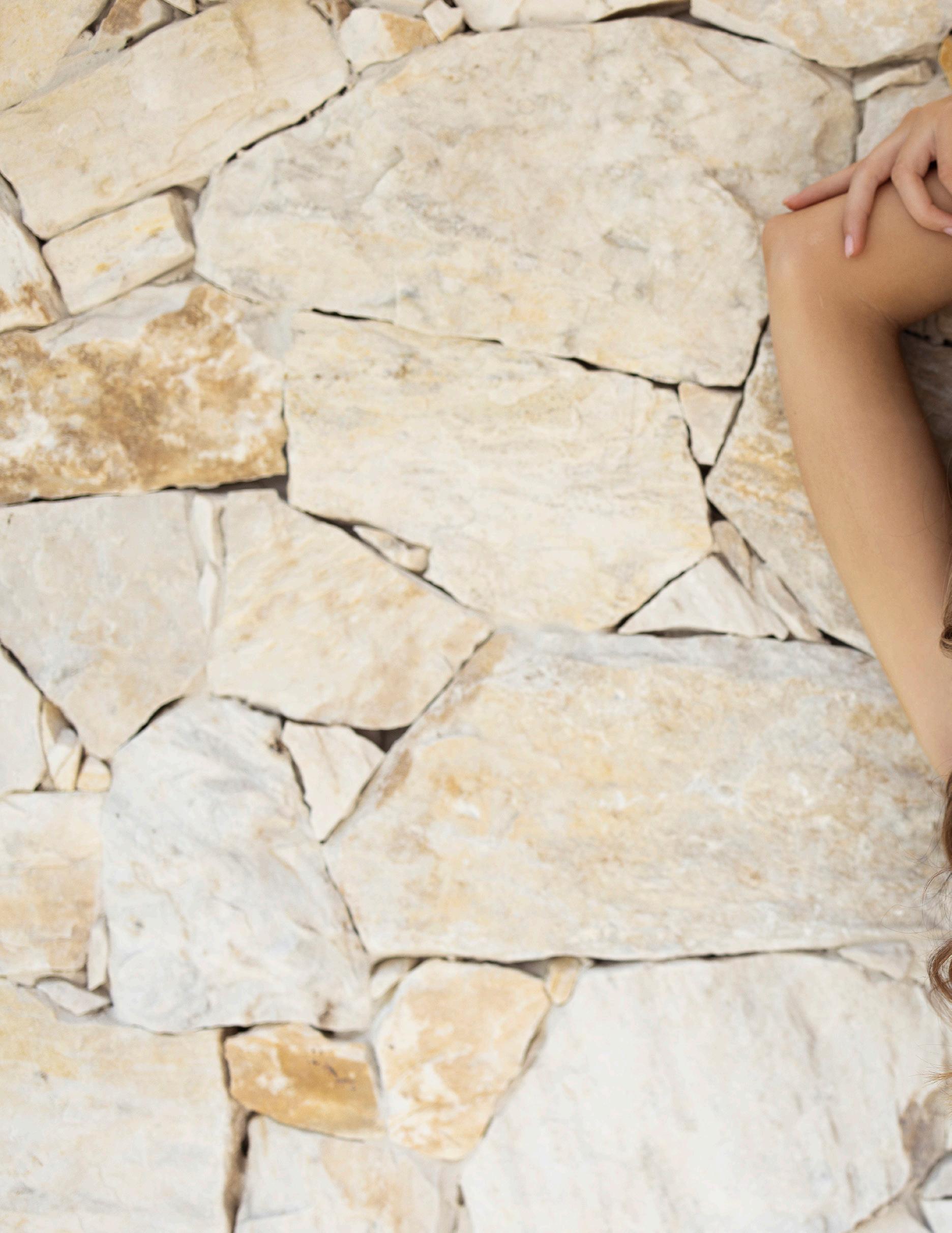

that goes into every piece. Being able to bring my own vision to life would be a dream come true.
And finally—what does being on the cover of QP FASHION MAGAZINE mean to you at this stage of your career?
It feels amazing! The QP team has been incredible to work with, and Rocky Batchelor captured everything so beautifully. I’m so happy with how the photos turned out and feel genuinely grateful for this opportunity.
“Being able to bring my own vision to life would be a dream come true.”
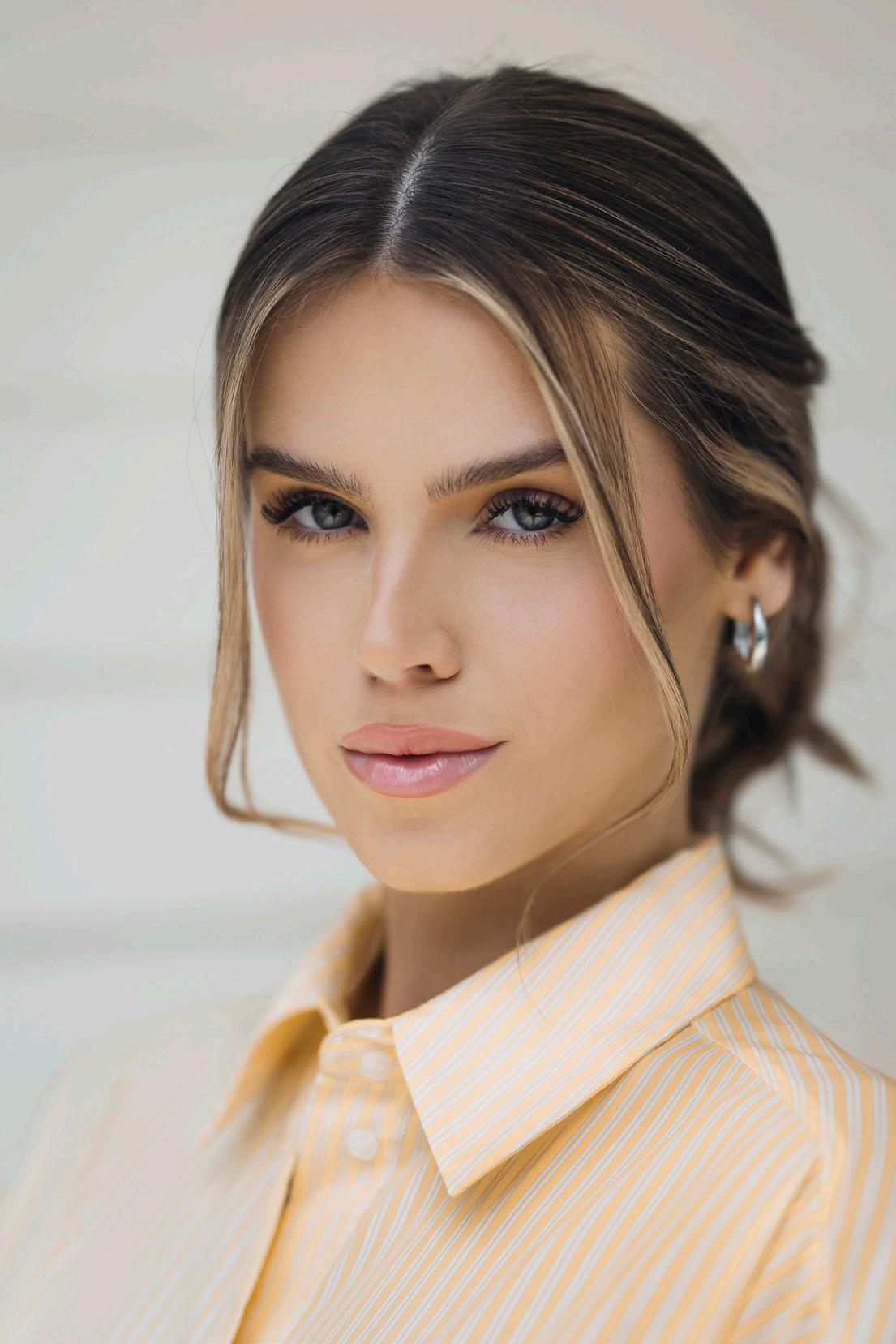
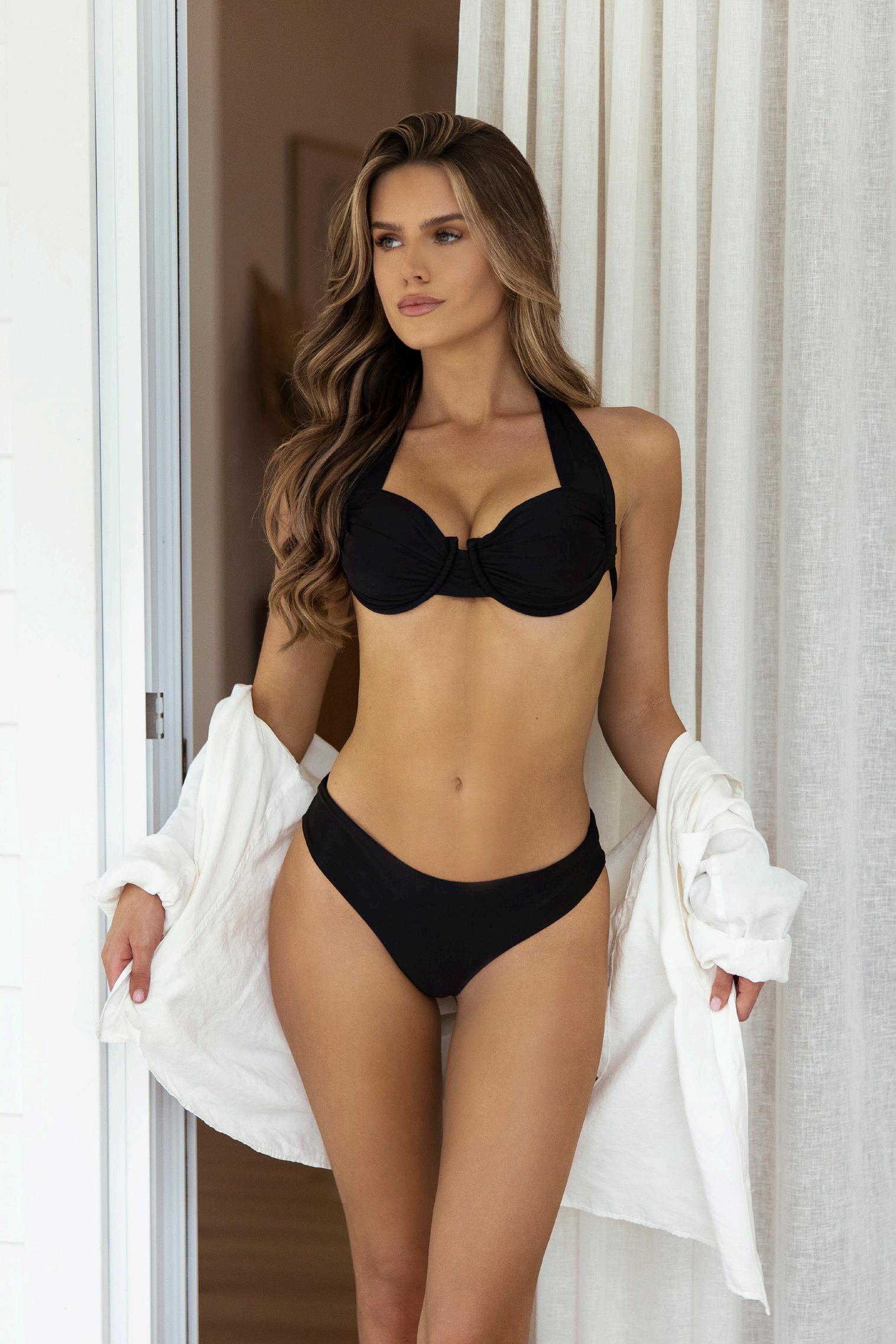

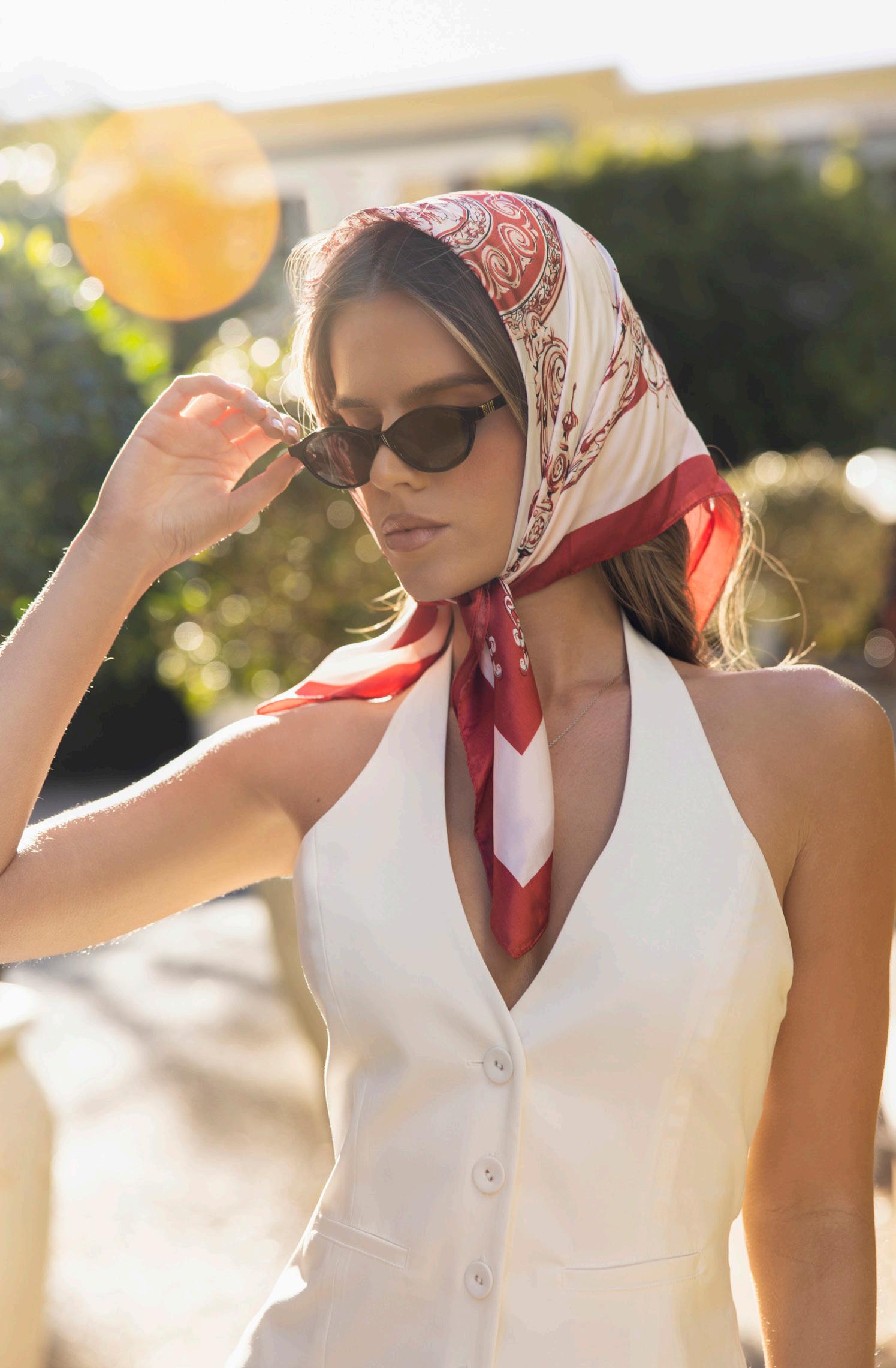
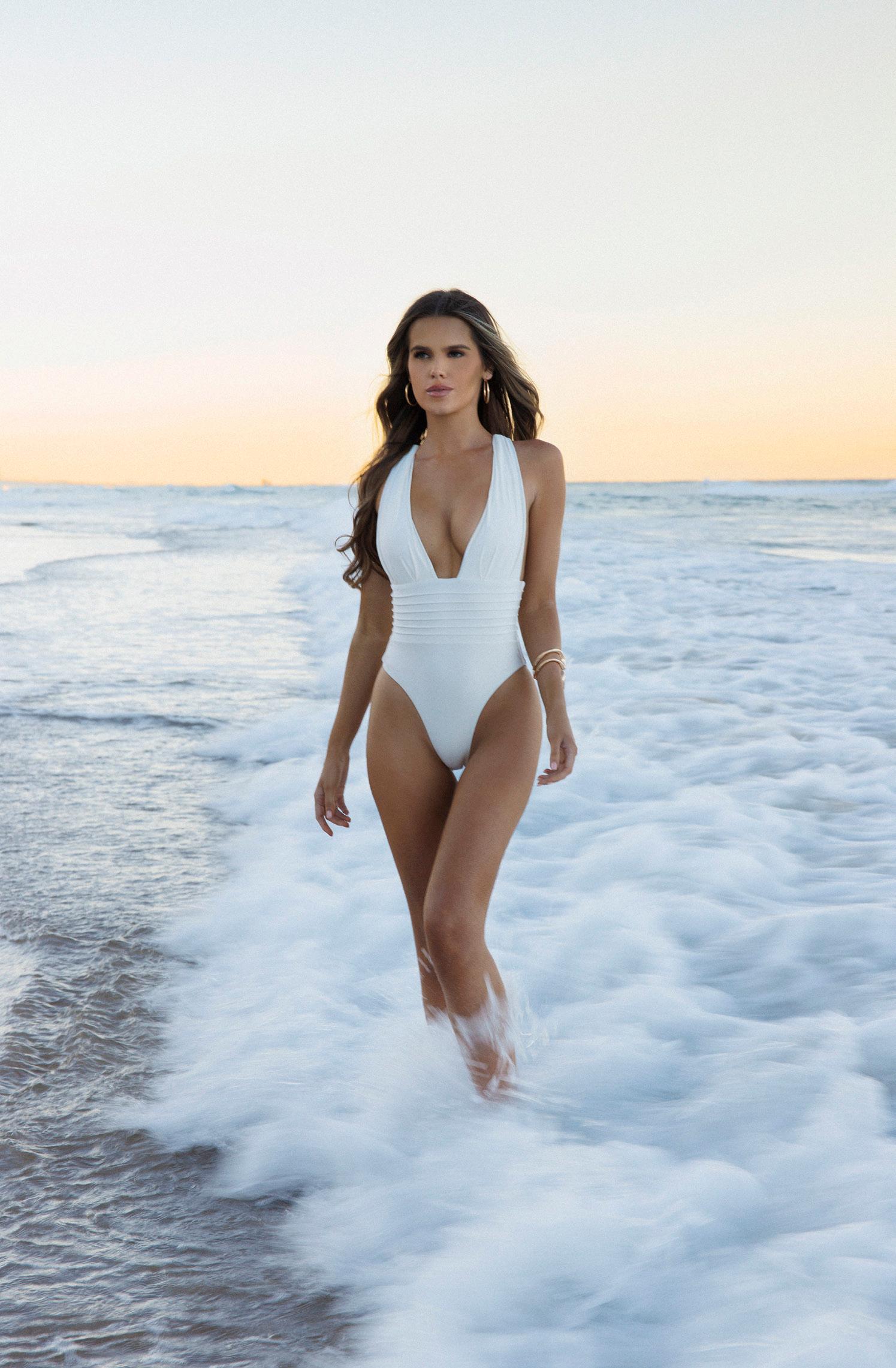
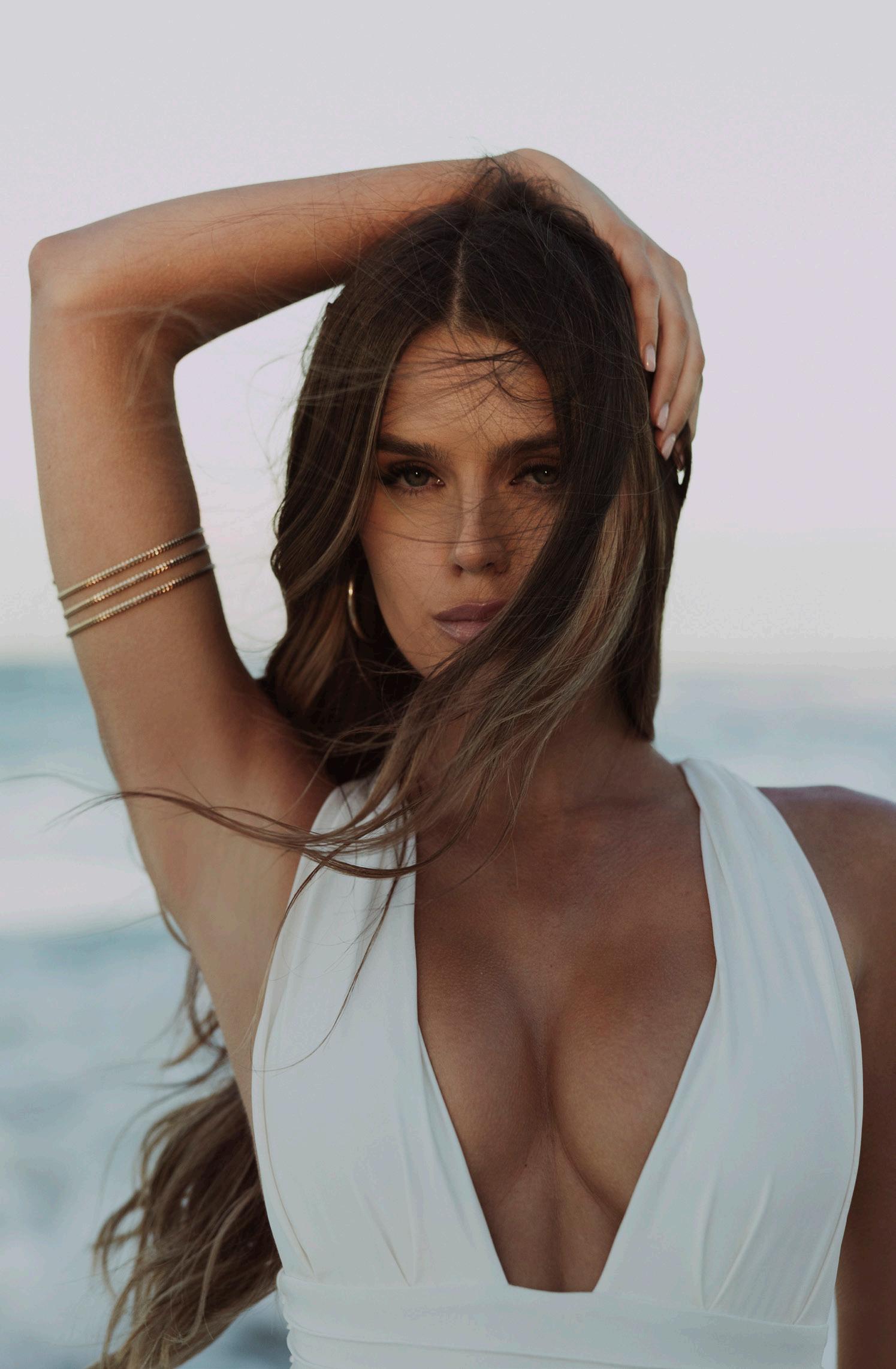
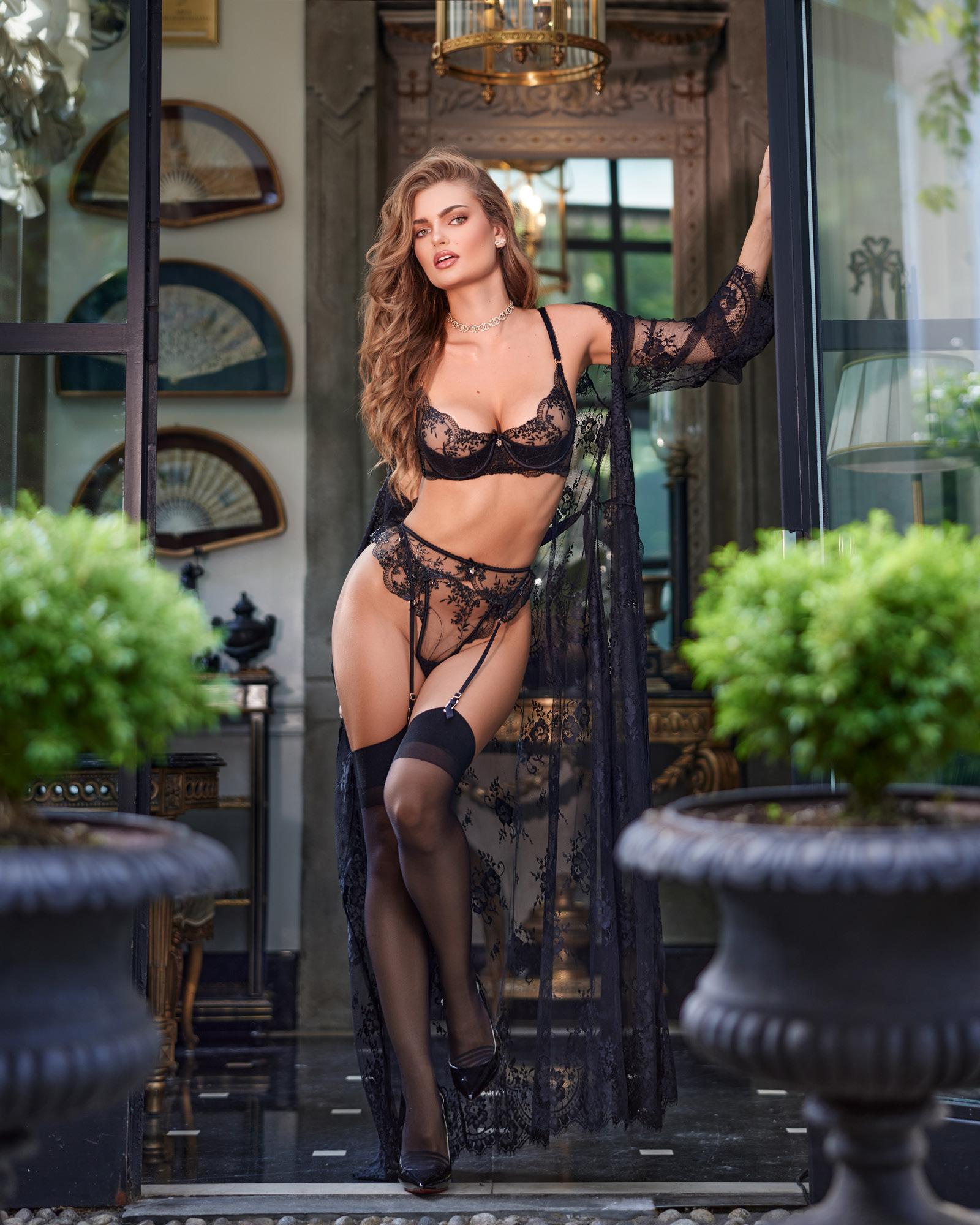
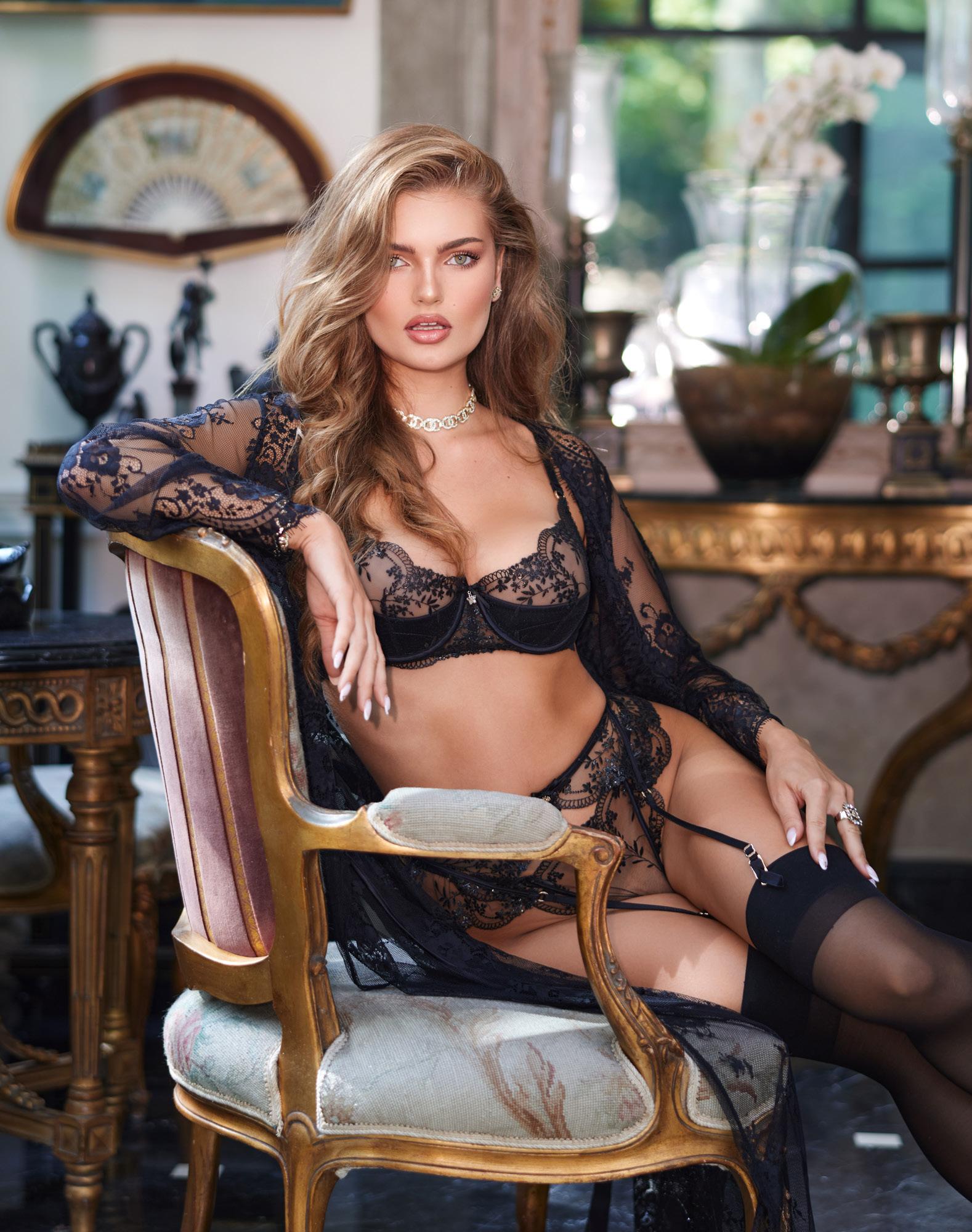
PHOTOGRAPHER: LULIIA GIGINA @gigina_ph
MODEL: LUCIA GAFFGA @lucia.gaffga
AGENCY: REAL WOMAN AGENCY @real_woman_agency PRODUCTION: ROSSO OMBRA @rosso_ombra
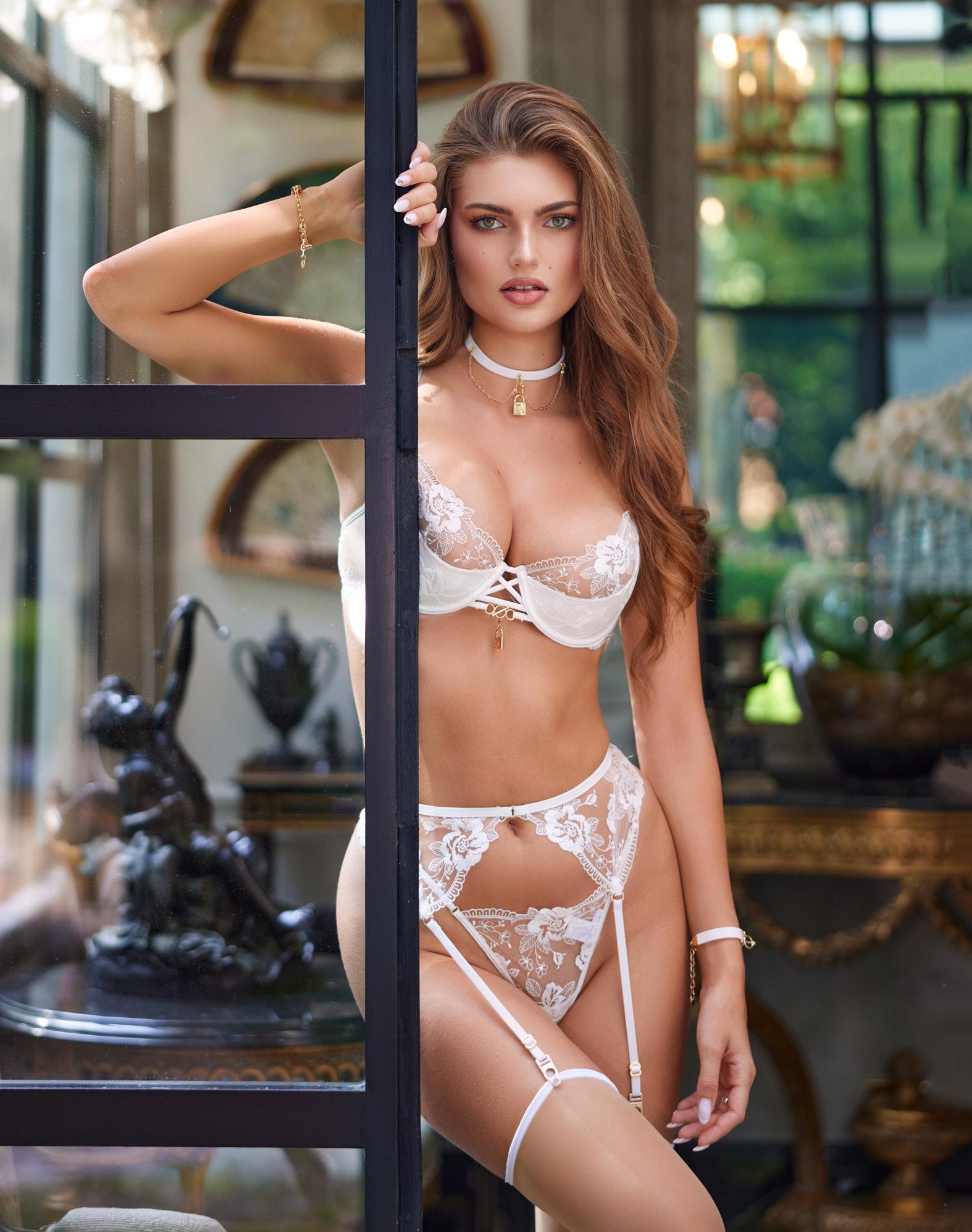
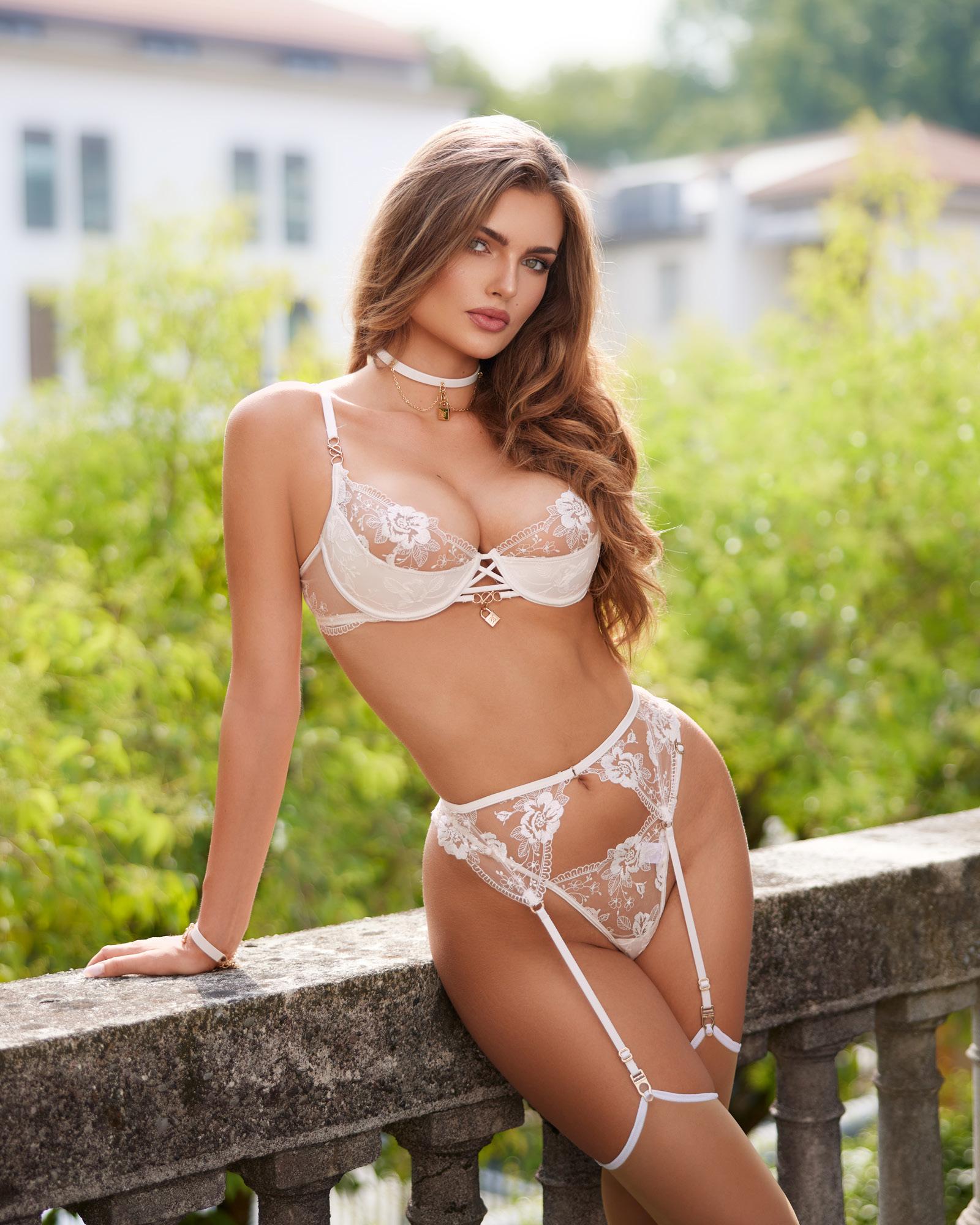
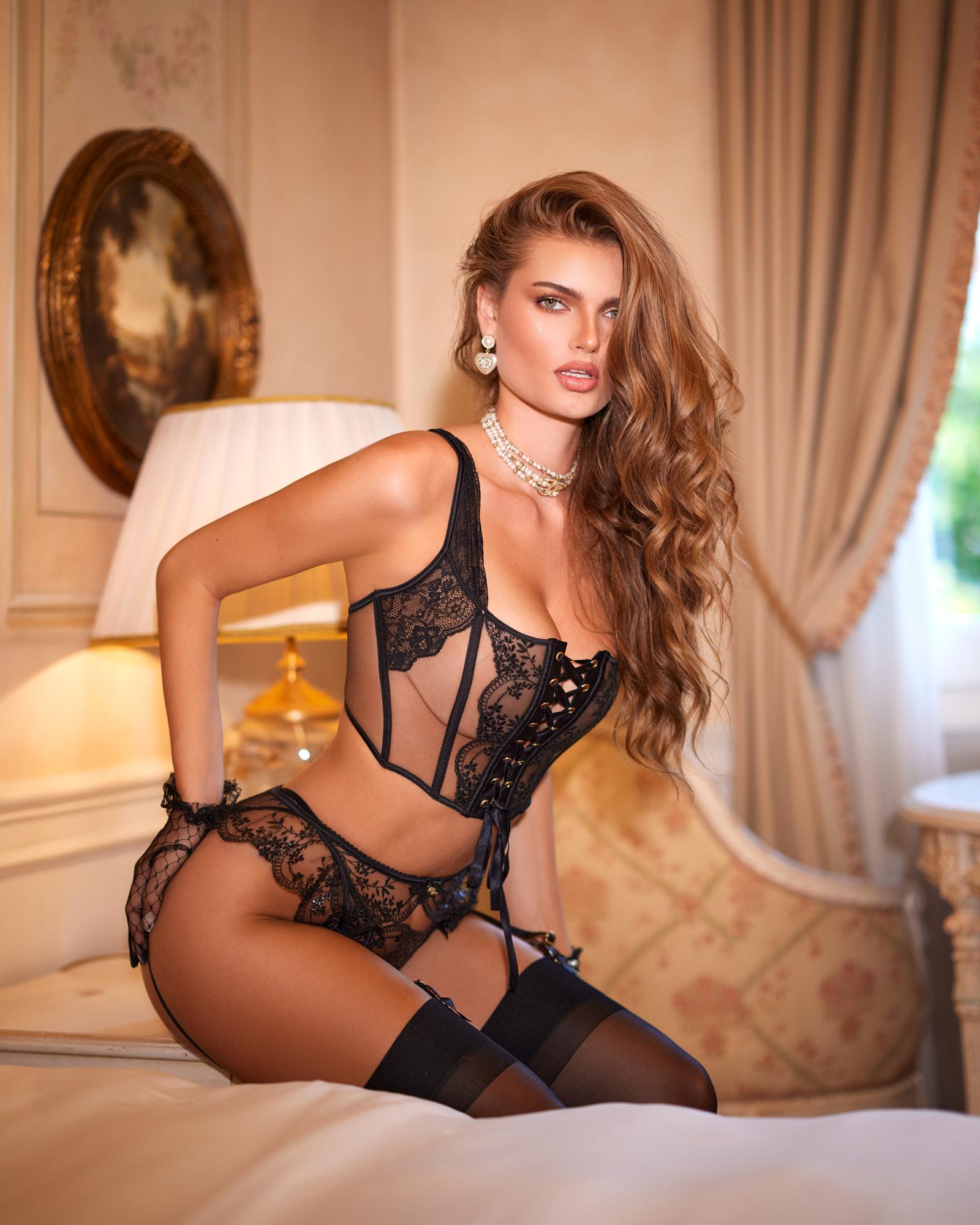
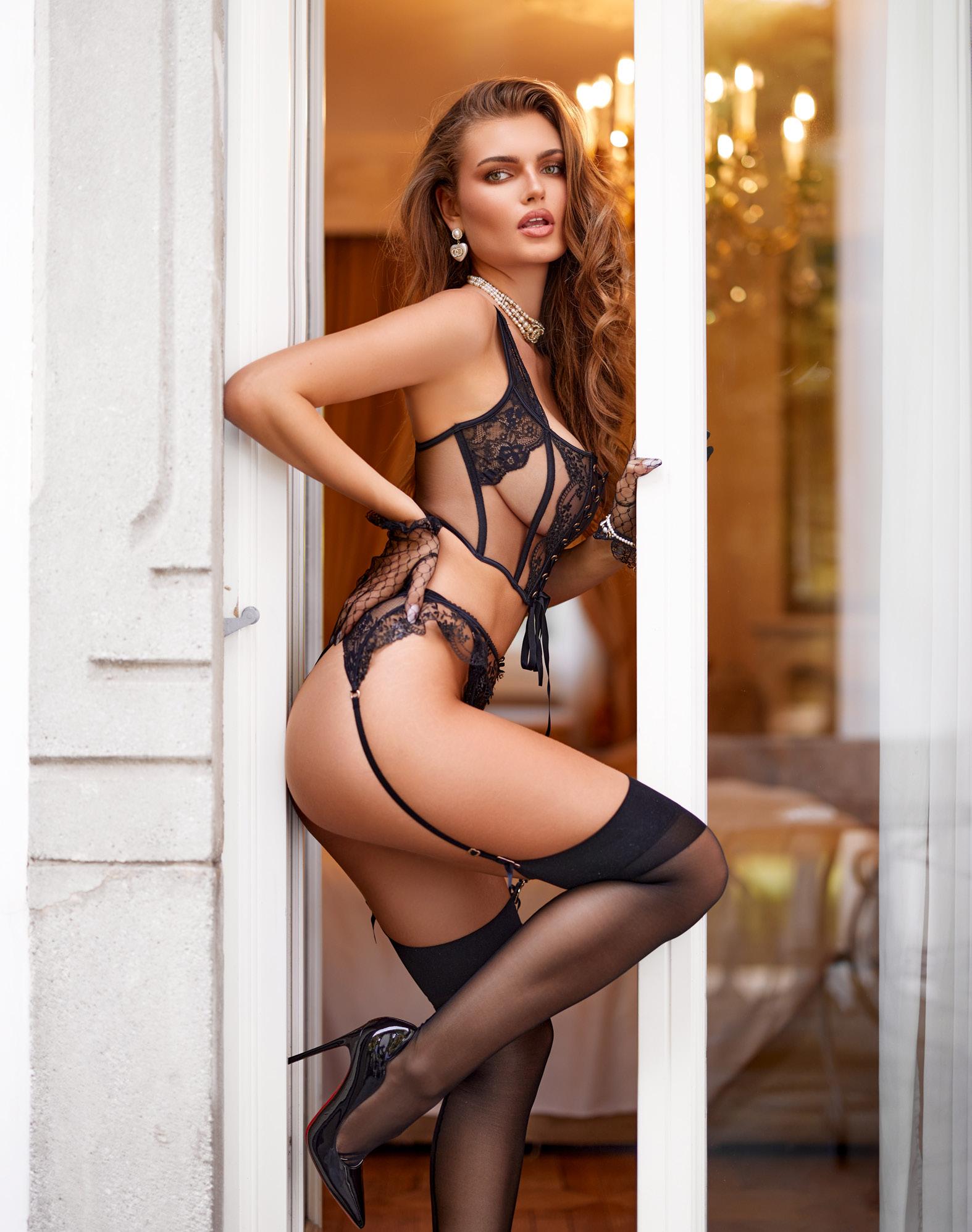
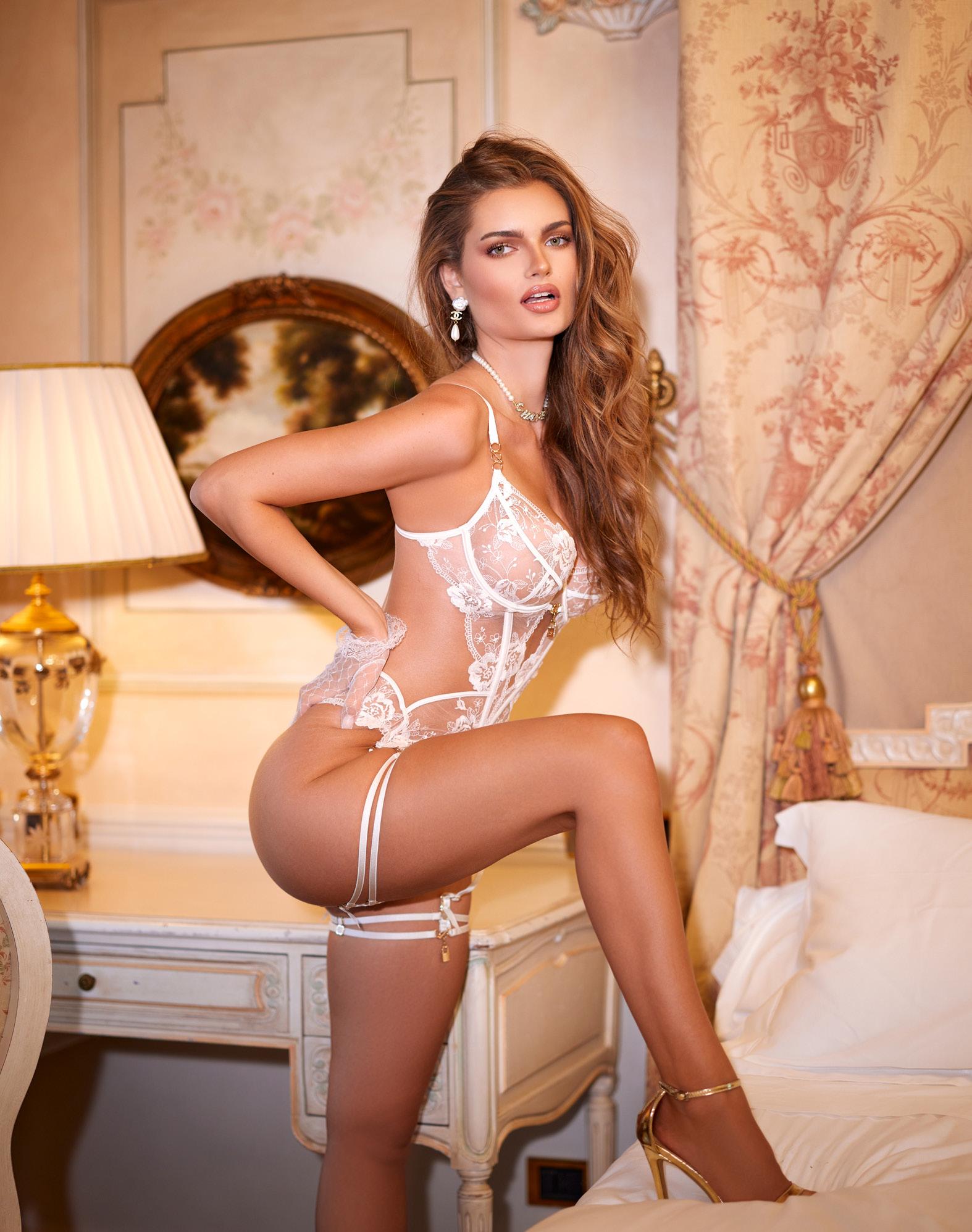

Interview by JOSE-MARIA JIMENEZ
At a time where virality often feels manufactured, Julia Filippo has emerged as the rare creator whose rise is rooted in something far more compelling: sincerity. What began as an unexpected breakout moment on Camilla ’s podcast in 2024 has since evolved into a cultural presence that resonates with millions. Her TikTok feed may appear effortless, but behind every trending sound, every cinematic frame, and every off-the-cuff 3 a.m. confession is a creator who understands that authenticity is her greatest power. Julia isn’t chasing influence — she’s simply showing up as herself, and that raw honesty has become her signature.
As she navigates fashion weeks, viral dance collaborations, and a growing place in Gen Z’s cultural landscape, Julia continues to blur the boundaries between personality, style, and storytelling. Her content doesn’t just entertain; it reflects a generation that values realness over perfection, connection over curation. In this conversation, Julia opens up about the momentum behind her meteoric rise, the creative instincts that guide her, and the evolving vision that’s shaping her next chapter in fashion, media, and beyond.
TALENT: JULIA FILIPPO @juliafilippo_
PHOTOGRAPHER: PEDRO TORRES @pedrotorresphotography
PRODUCTION/PR: BURGERROCK MEDIA @burgerrockmedia & IRMA PENUNURI @burgerrock
FASHION STYLIST: IAN MARTIN @_shmian
MAKEUP ARTIST: BREE O´DELL @odellbeauty
HAIR STYLIST: KANDYCE GONZALEZ @dellarosa_barbershop
VIDEOGRAPHER: KARLA GONZALEZ @karlitaa21
PRODUCTION ASSISTANTS: VIV CORTEZ @vivcortez, DANIKA BACKE @danika.ashleyy & EMILY CARDELLINI @emily.cardellini
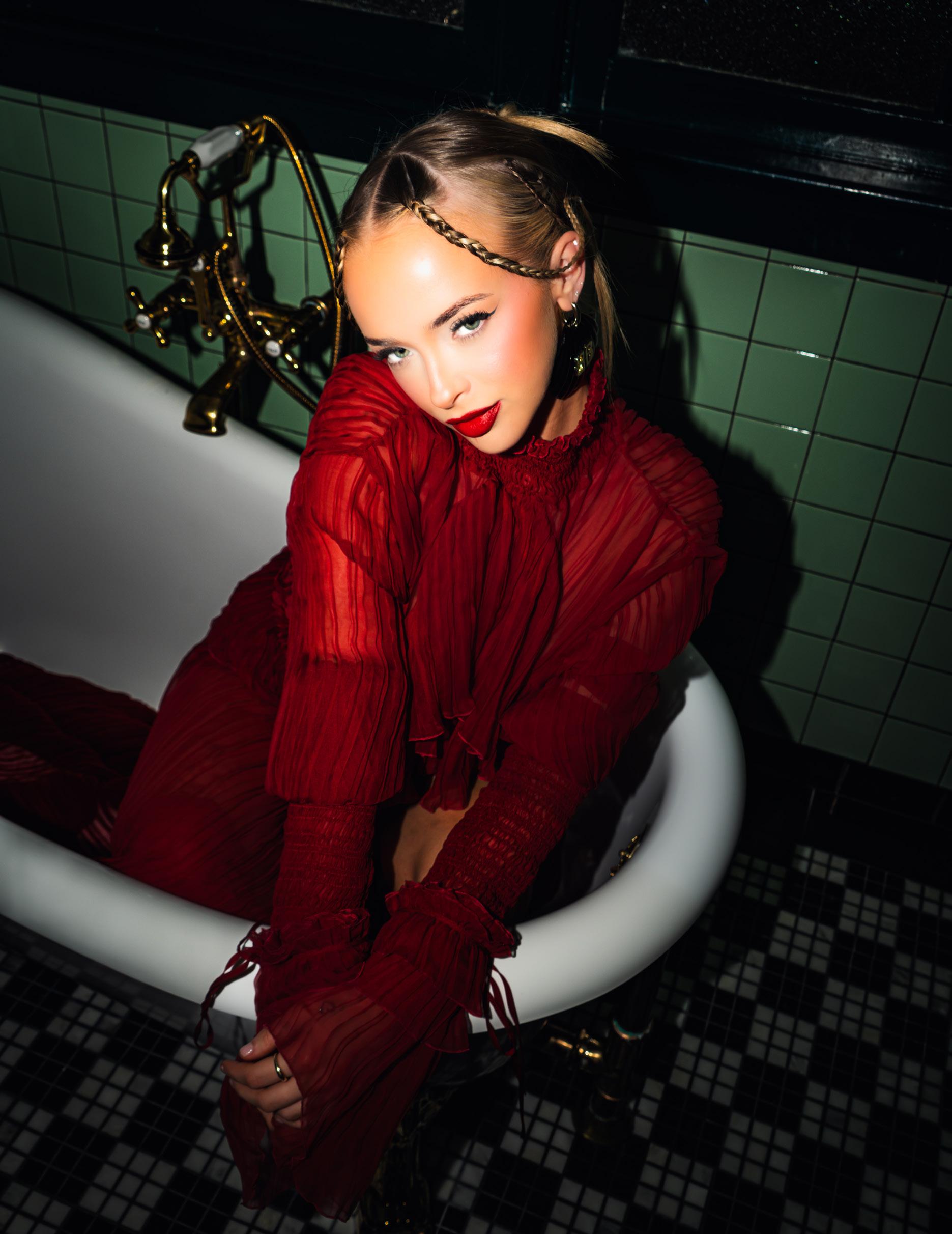
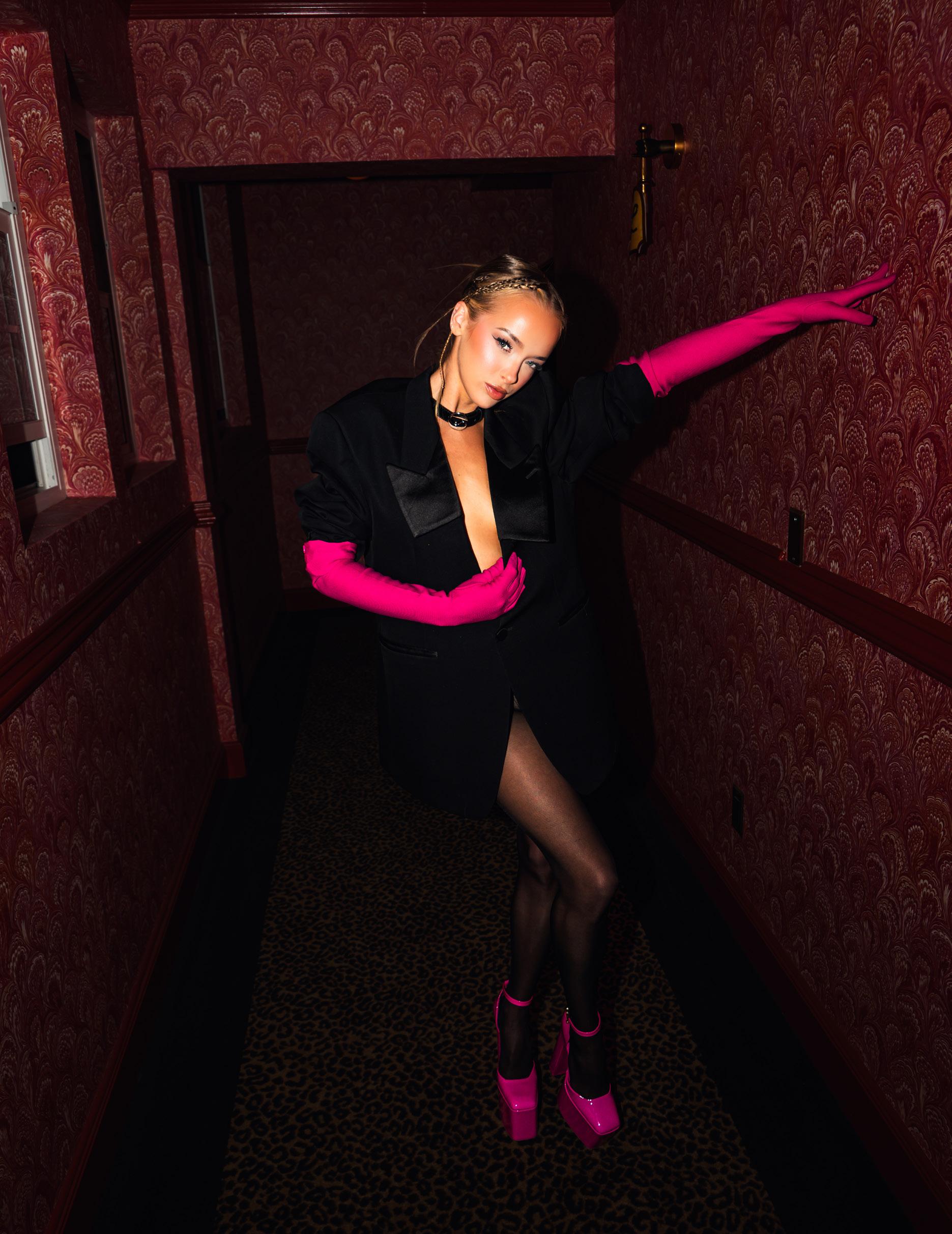
Julia, your TikTok presence feels effortless yet meticulously curated. How would you describe the creative vision behind your content?
My creative vision honestly comes from just being myself. I didn’t set out to build a platform, it kind of happened unexpectedly. I was on Camilla’s podcast, on someone else’s platform, and people connected with my cute, bubbly, more quiet personality. So I realized pretty quickly that the reason I went viral was simply because people liked me for me.
Because of that, authenticity has always been my starting point. I lean into what feels natural, then apply that to viral topics, trends, or collaborations with other creators.
Even when I’m participating in something trendy, it still comes from a very real place. The content might look polished, but the vision behind it is just showing up as myself.
You began sharing videos in 2022, and now millions follow you. When did you first realize that your online persona was becoming something bigger than you imagined?
I technically started posting videos back in 2022, but I definitely wouldn’t say I was an influencer then, I had no real following and wasn’t trying to become one. Everything changed in 2024 after I was on Camilla ’s podcast. That’s really the moment it all hit me.
just being myself. At the same time, TikTok is a platform where you really have to stay on your toes. I’m always paying attention to who the newest creators are, what sounds are taking off, and what trends or challenges people are doing with their friends.
So I take all of that, the newest sounds, games, trends, challenges, and I filter it through me. That’s how I stay current without losing the authenticity that people originally connected with.
Fashion plays a clear role in your videos. How do you use clothing and styling to express emotion or tell a story on camera?
Fashion has always been something I love, getting dressed, getting ready, and using clothes to show how I’m feeling that day. So it naturally became part of my content. I think of it as another way to express my mood.
“My secret is that you can plan the location, but you can’t plan the personality.”
I went from being pretty much unknown to gaining around 400,000 followers in a single week. It happened so fast and so unexpectedly that it felt like my online persona became ‘a thing’ almost overnight. That’s when I realized this was becoming something way bigger than I ever imagined.es something deeply connective. Social media evolves fast — how do you keep your content authentic while staying ahead of trends?
Social media moves insanely fast, but for me the core of everything is still my personality. That’s the frame I build all my content around,
If it’s a lazy Sunday and I’m doing something chill, like trying new Starbucks drinks for content, I’ll throw on a comfy sweat set. But if I’m at something like N ew York Fashion Week , that’s when I go all out, fun hair, a more put-together outfit, something that matches the energy of the event.
My styling kind of levels up or down depending on the vibe of the content. It’s just another way to tell the story of the moment.
You’ve worn everything from glam to streetwear. How would you define your personal aesthetic right now?
My style has always bounced between glam and streetwear, but right now I’d say I’m in a ‘leveling-up’ phase. I still love streetwear, that’s honestly what I’m most comfortable in. If I’m just being myself on a normal day, I’m probably in jeans or something baggy and sporty, not a dress.
But in the content world, I’ve been pushing myself to elevate my looks a bit more. I’m trying to be less casual and more fashion-forward, experimenting with pieces that feel a little more polished while still keeping that streetwear edge that feels true to me.
Do you see yourself as a style influencer, a performer, or something entirely new — a blend of both?
I don’t really see myself as a style influencer or even a performer. I think I’m more of a personality creator who naturally brings different things into my content, sometimes that’s style, sometimes it’s food, sometimes it’s whatever I’m into at the moment.
So if anything, I’m something in between, but not in a strategic way. I’m just myself, and all those elements show up because they’re part of my life, not because I’m trying to fit into a specific influencer category.
Your TikToks look spontaneous, but there’s obvious intention behind them. Can you walk us through your creative process from idea to upload?
My TikToks do look spontaneous because a lot of them honestly are. Sometimes I’ll just be lying in bed at 3 a.m., think of something random to say, record it in the moment, and that ends up being the video that gets 10 million views. That’s what I love about TikTok, the raw, off-the-cuff stuff can resonate the most.
But other times I’ll plan things out, even script them word for word, trying to get everything perfect… and those videos don’t always perform the way I expect. It’s almost funny. The more polished something is, the less people connect with it.
So my creative process is really a mix. I follow the ideas that come naturally, and I don’t overthink it. The authentic, raw moments usually end up doing the best.
What’s your secret to capturing a moment that feels both cinematic and real?
My secret is that you can plan the location, but you can’t plan the personality. You can put someone in the most aesthetic, cinematic setting, but if people don’t connect with who they are, it won’t matter.
For me, it’s really about pairing the two:
putting the personality people already love in a cool location or an exciting event. When the environment is visually beautiful and the person in the frame feels real and relatable, that’s when you get a moment that’s both cinematic and authentic. It’s the combination that makes it work.
You collaborated in a viral dance video in 2024 that hit millions of views. How do you approach collaborations while keeping your own artistic signature?
Collaborations were a big part of how my platform first grew, some of my earliest viral moments were with Camilla ’s podcast and the BOP House . But I learned quickly that you can’t rely on collabs to build a real career.
So while I love collaborating, I focus on creating my own content and my own personality. My solo videos actually started performing even better, and that’s what solidified my platform. I keep my artistic signature by making sure the core of everything is still me.
With over 3.6 million followers, your impact goes far beyond entertainment. How do you see your role in shaping Gen Z culture and style?
I feel like I’m part of a new space on social media, almost a pioneer in the way this new type of personality-driven content is growing. Even with a big following, I think people connect with me because I’m still relatable. My fans aren’t just watching from the outside; they’re taking the journey with me in real time.
So when it comes to Gen Z culture and style, my role is really about giving people something genuine. I show the real experience behind the viral moments, and I think that honesty is what makes an impact.
Social media fame can be both empowering and overwhelming. How do you protect your sense of self amid constant visibility?
Social media can definitely be empowering and overwhelming at the same time, so grounding myself is really important. I go home often, spend time with friends who aren’t involved
“Authenticity has always been my starting point. Even when I’m doing something trendy, it still comes from a very real place.”
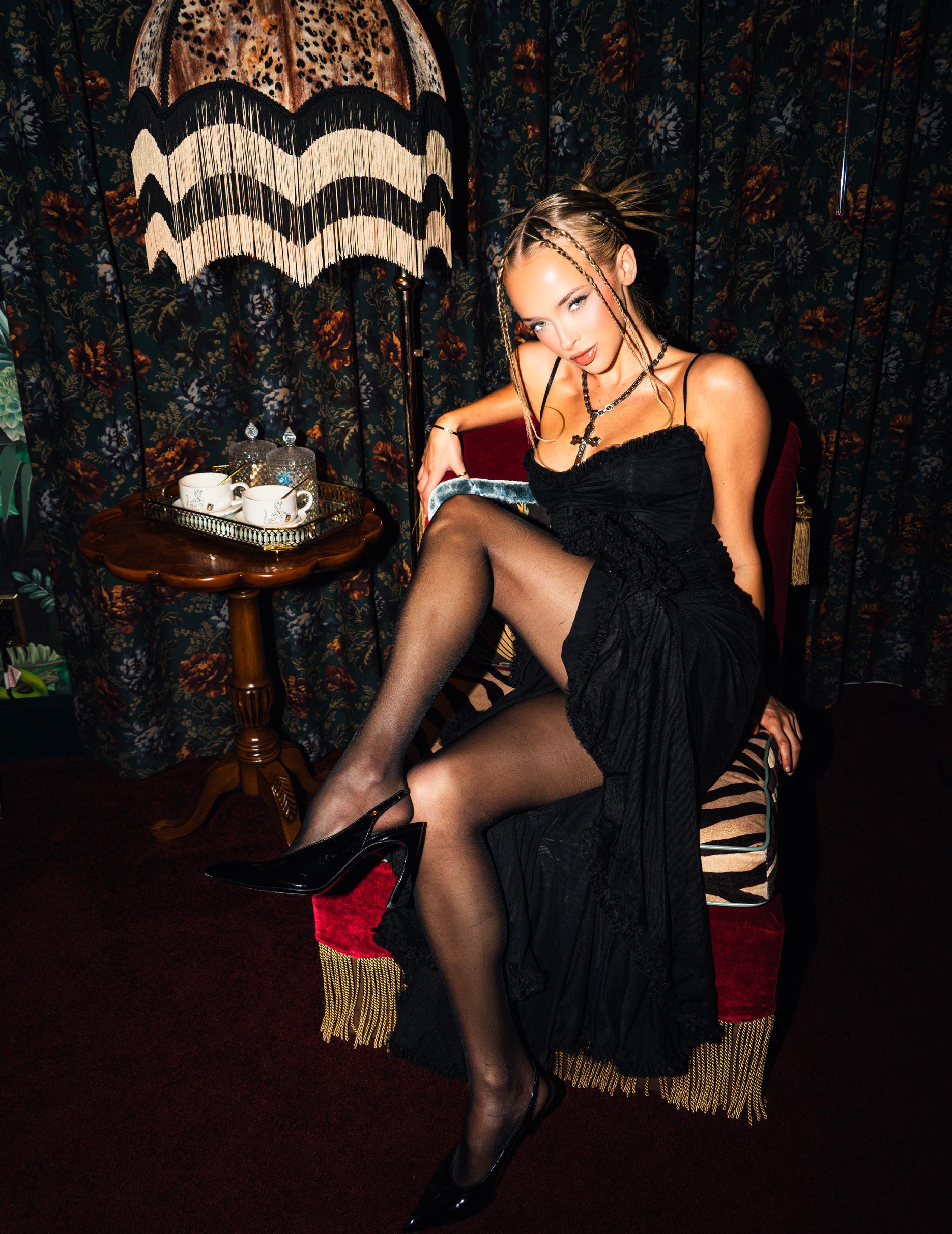
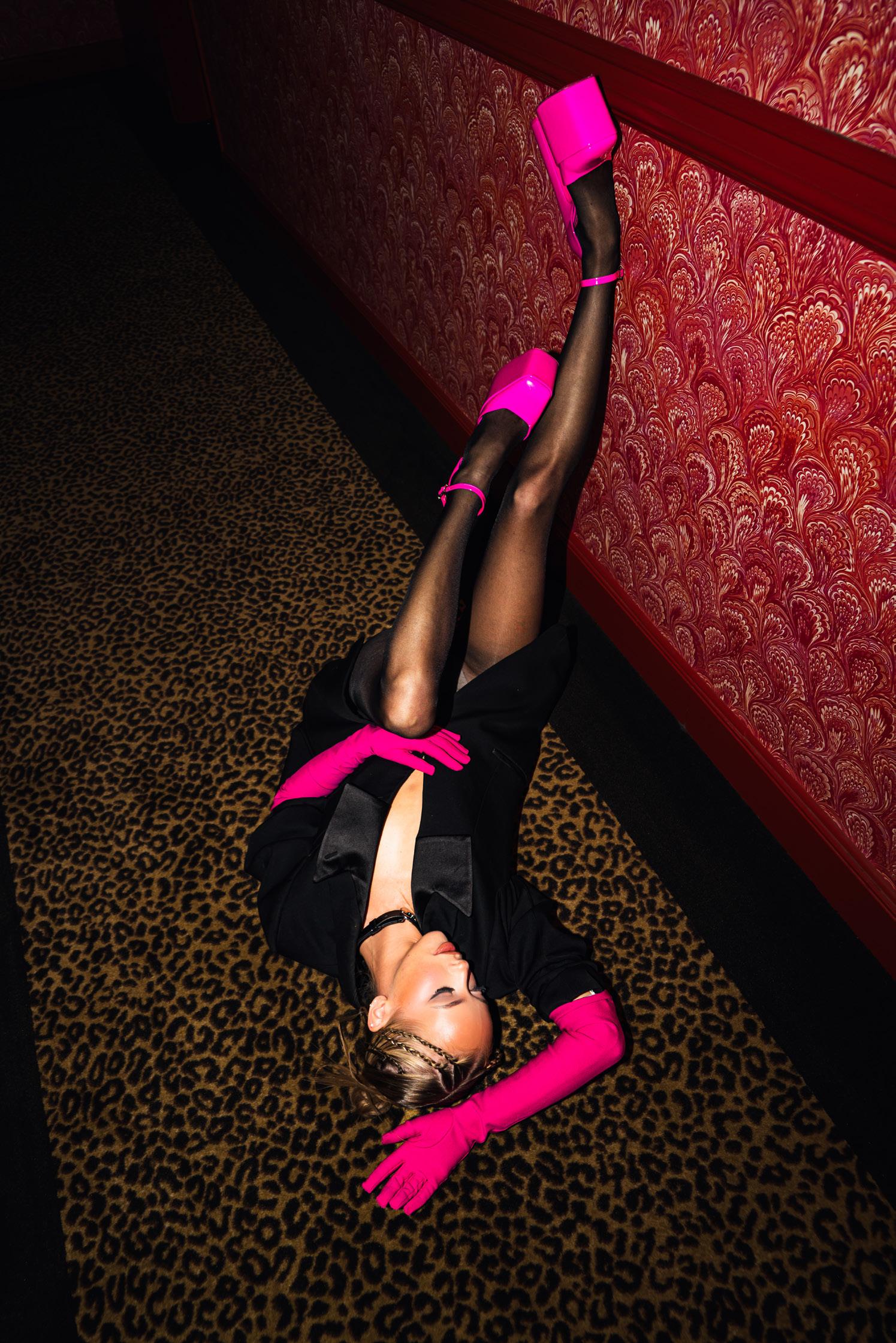
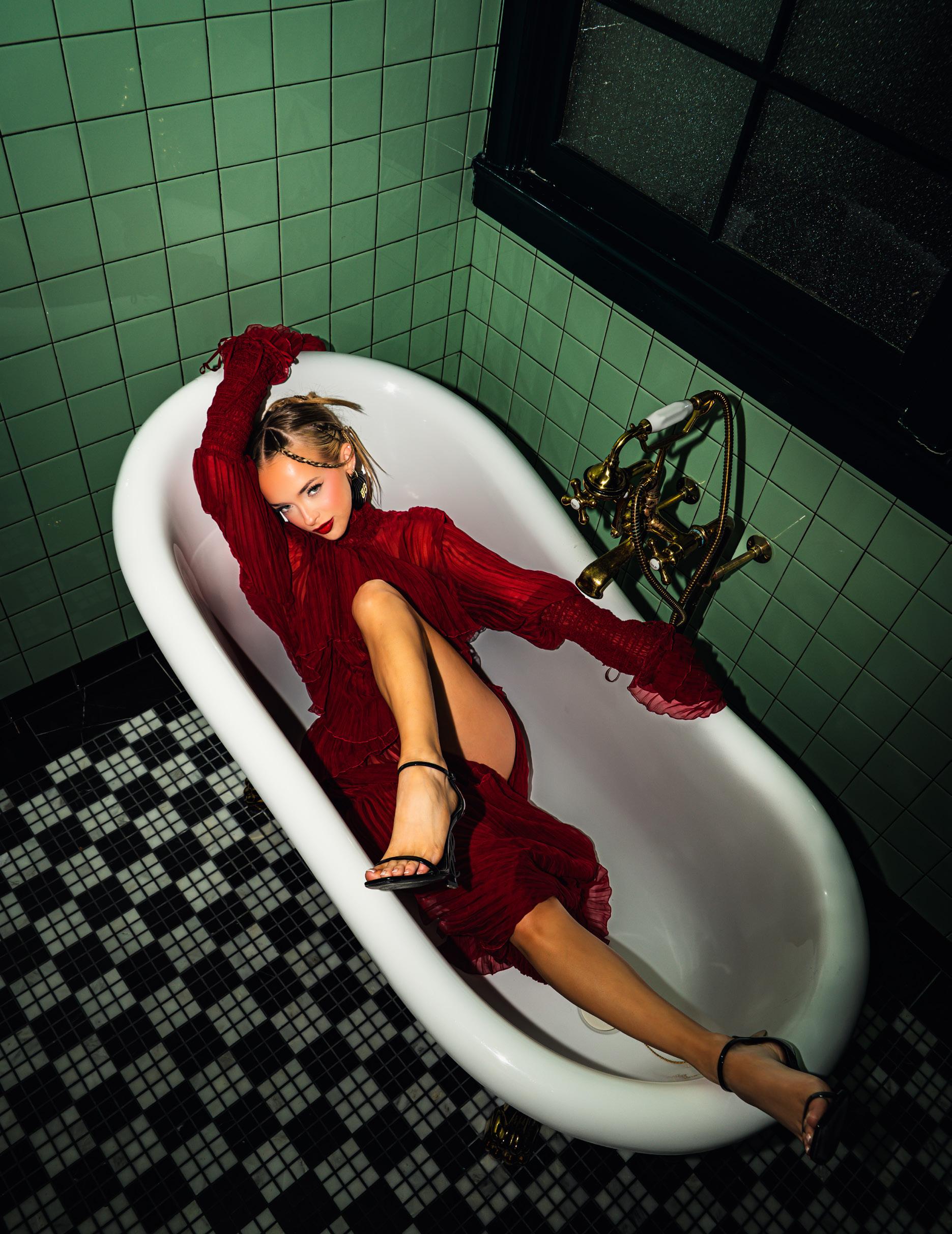
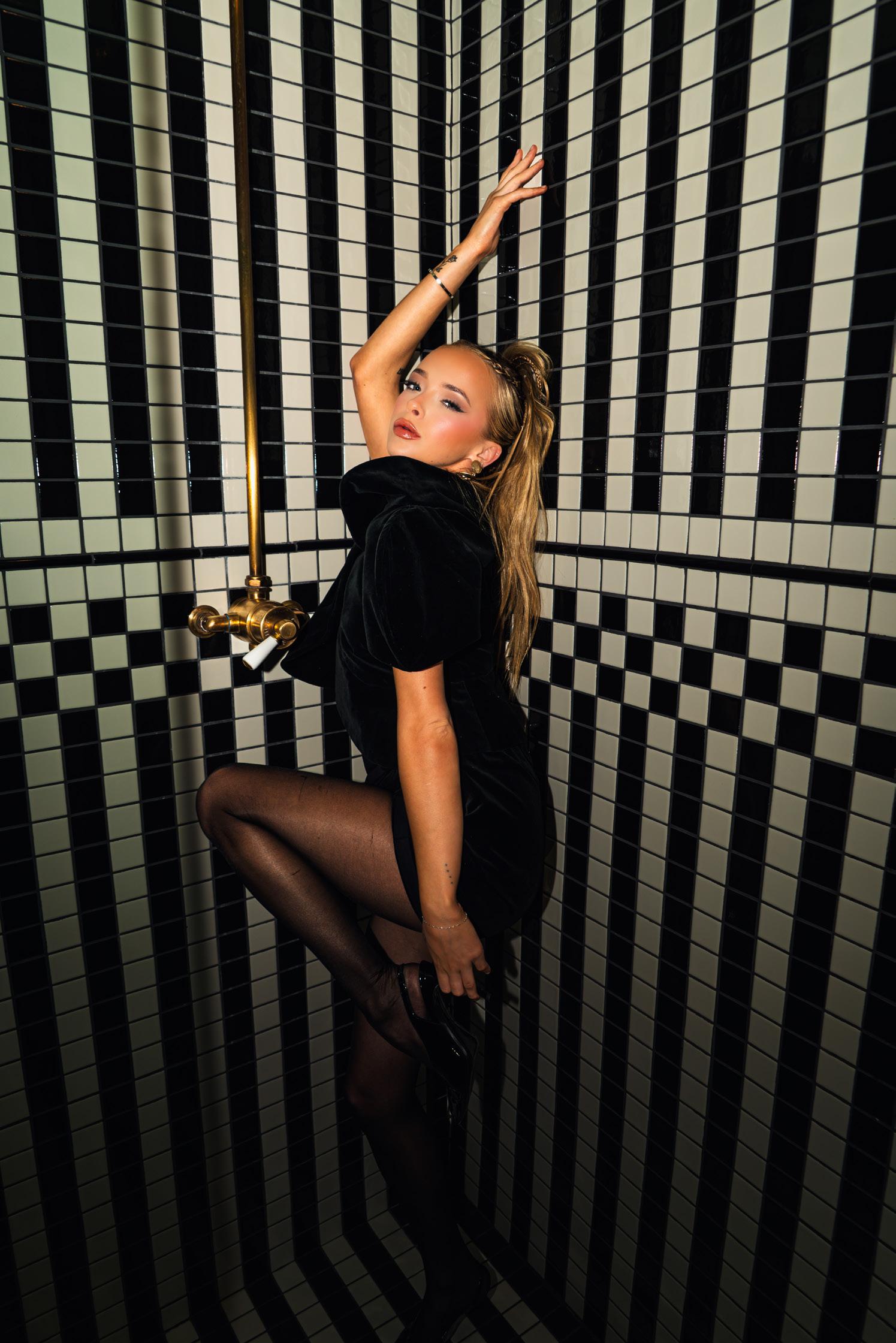
in the internet at all, and stay connected with my family, especially my mom. Even talking to Camilla , someone I knew long before any of this, helps keep me centered. Staying close to the people who knew me before the fame is how I protect my sense of self.
Many TikTok creators are now crossing into fashion, music, and film. Where do you see yourself evolving next?
I definitely see myself evolving more into the fashion world and into more mainstream, celebrity-type spaces, but I’m also still exploring. I don’t have a strict plan yet, and I think it would be fake to pretend I know exactly which lane I’m going into next.
Right now I’m going with the flow, figuring myself out, and letting opportunities come naturally. Content is working, I’m having a good time, I’m making money, life’s good. So whatever comes next will happen in its own way.
What’s one dream collaboration — with a designer, artist, or photographer — that would define your next chapter?
My dream collaboration would be to shoot with David LaChapelle . His work is so bold and
surreal, and I feel like his style would bring out a completely different side of me on camera. That would definitely be a defining moment for my next chapter.
If you could star in a campaign for any luxury brand, which would it be — and what would the concept look like?
If I were to star in a luxury campaign, I think it would probably be something in the clothing space, even something like Skims . That’s the direction I see myself fitting into naturally. I’m still figuring out what my dream brand or concept would look like, and I don’t want to pretend I have the perfect answer yet. But I know it would have to feel authentic to me and align with the kind of creators and influencers I look up to.
Finally, what does being iconic mean to you in 2025’s digital era?
Being iconic in 2025 really just means being yourself. You can’t build that kind of impact on something fake, and there’s a lot of inauthenticity online. The people who truly stand out are the ones who are real and honest, because that’s what people connect with.
“Being iconic in 2025 really just means being yourself. You can’t build that kind of impact on something fake.”


PHOTOGRAPHER: SASA RATKOVIC @sasaratkovicphoto
MODEL: TAMARA TRIVESKOVIC @triveskovict
AGENCY: REAL WOMAN AGENCY @real_woman_agency
MAKEUP ARTIST: MILICA ZIROJEVIC @facesbymilicazirojevic
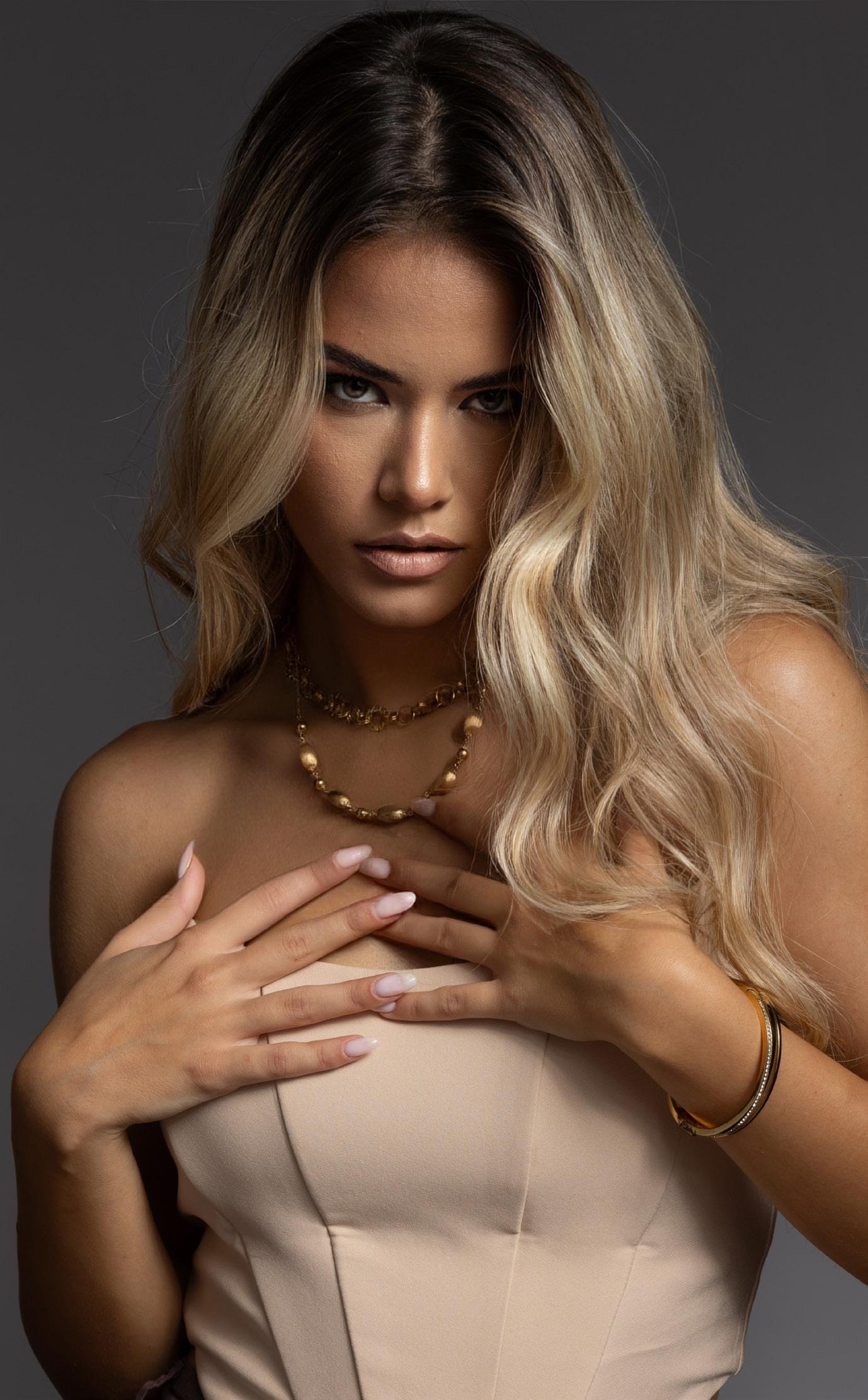
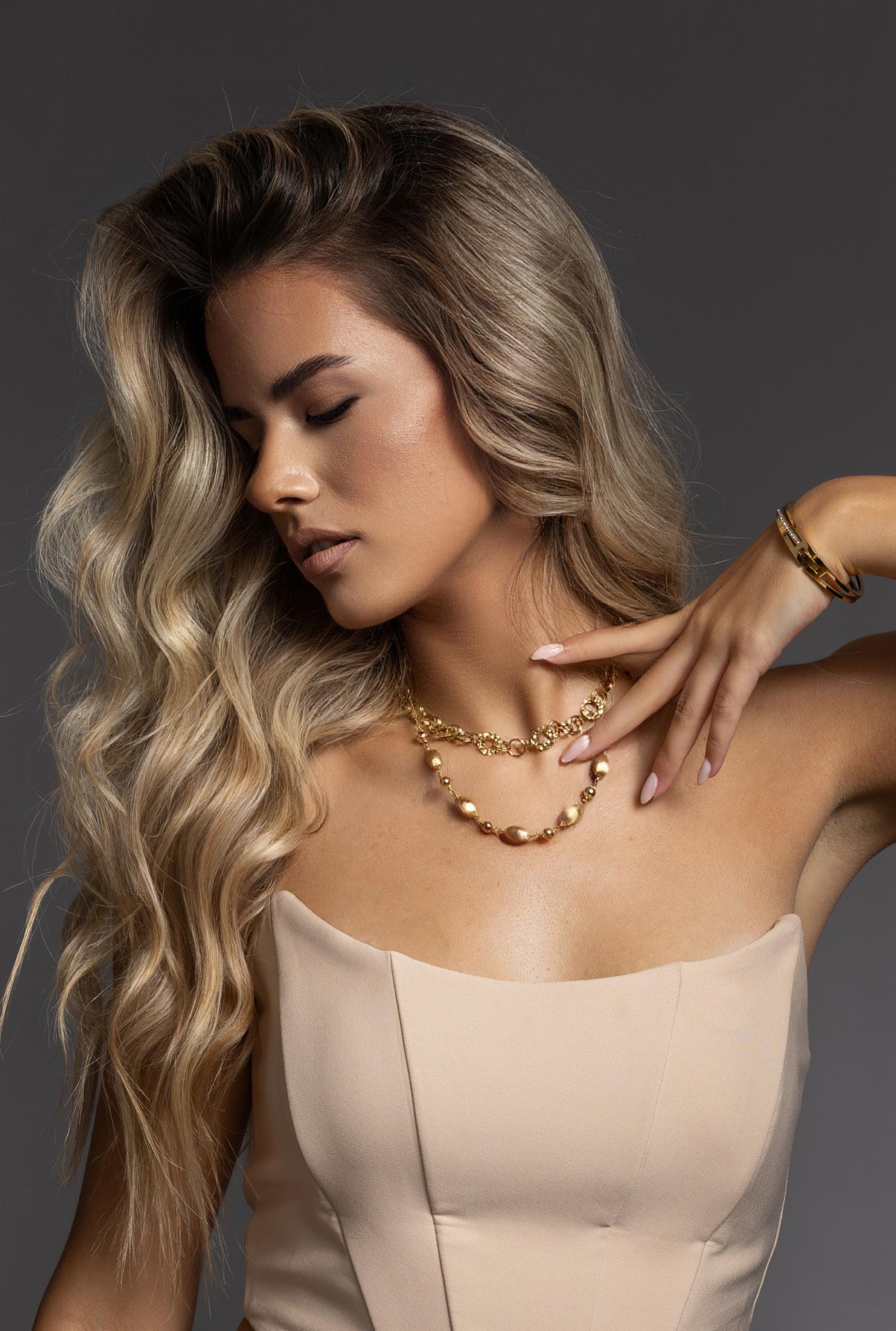

Blazer & pants MONOCHROME

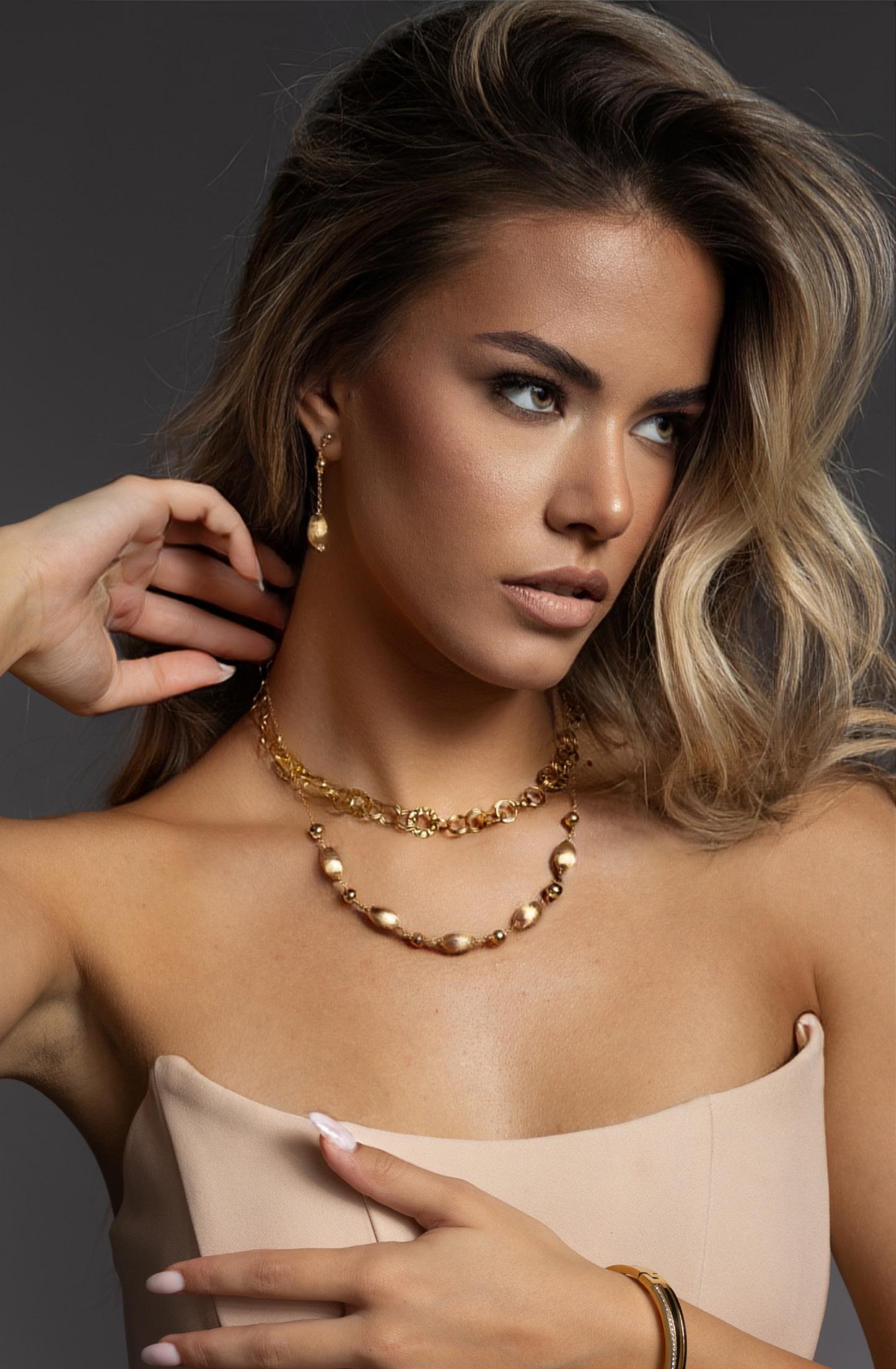

Interview by JOSE-MARIA JIMENEZ
Known for her heartfelt portrayals of Dr. April Kepner on Grey’s Anatomy and Hannah Rogers on Everwood , Sarah Drew has long been celebrated for the emotional depth and authenticity she brings to every role. Yet beyond acting, Sarah has quietly built an impressive creative empire—writing, producing, and now executive producing her latest hit series Mistletoe Murders . Through each chapter of her career, she continues to explore the transformative power of storytelling—where vulnerability meets courage and faith intertwines with purpose.
In this exclusive QP interview, Sarah opens up about her evolution from actor to filmmaker, her deep connection to stories of redemption, and the art of balancing leadership, creativity, and motherhood. With Mistletoe Murders returning for its second season and her portrayal of gossip columnist Hedda Hopper in the upcoming film Jimmy , Sarah reflects on how empathy, collaboration, and hope remain the guiding forces in her ever-expanding creative journey.
TALENT: SARAH DREW @thesarahdrew PHOTOGRAPHER: SARAH KRICK @sarahkrickphotography
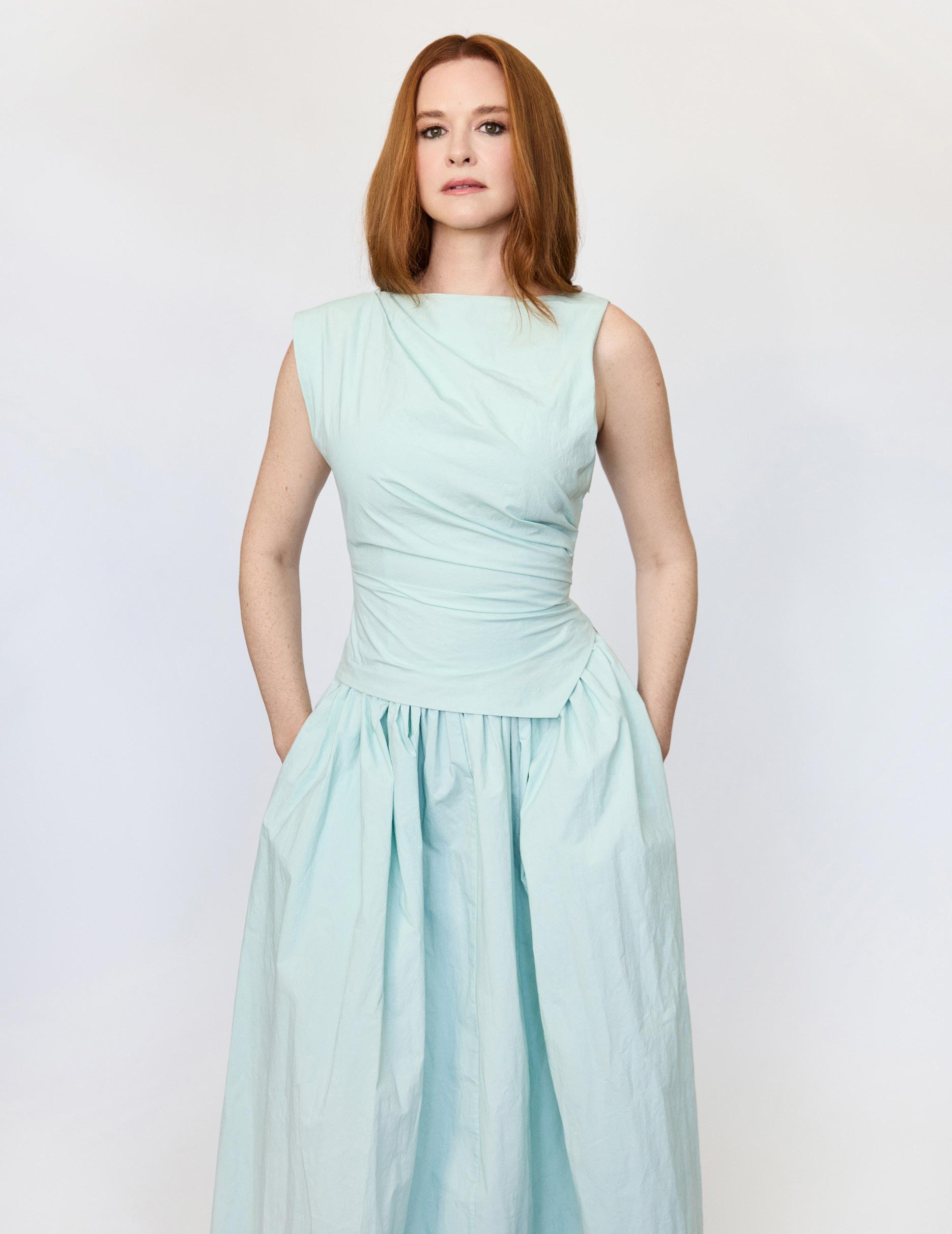

Sarah, you’ve portrayed beloved characters like Dr. April Kepner on Grey’s Anatomy and Hannah Rogers on Everwood. How have those roles shaped your approach to storytelling today as both an actor and a producer?
What I think is really interesting about getting to play a character over a long period of time is that you get to grow and change and evolve with the character, and eventually some parts of me, Sarah , the actress, sort of get mixed and melded with the character, Hannah , and the character April . Also, those characters have a profound impact on my life. I had a lot of input in the direction and development of April , especially her faith journey, and having the opportunity to use my voice in that way to collaborate with the writers really gave me confidence to know that I had things to say. That process also taught me that I had creative input that could translate to making my own stuff. It helped me learn the process of creating, evolving, and developing character, and so that has all contributed to me as a writer and as a producer and all the things that I do behind the scenes.
Mistletoe Murders beautifully merges mystery with Hallmark’s signature heart. What drew you to this project, and how does executive producing it allow you to shape its tone and message?
producer on a project, and for me the most important piece of it was, number one, getting to help choose the Sam . I read with several different Sams and got to be a part of those meetings where those decisions were made, so I was really thrilled that everybody was on the same page with Peter Mooney because I knew the second he showed up on screen that he was gonna be the perfect Sam , and he has proved that we were right over and over and over again for two seasons straight. I’m very, very happy with that.
The other way that I am involved as an executive producer on Mistletoe Murders is that I give notes on all the scripts and on all the cuts of the episodes once they’re put together, and sometimes I give feedback on music and things like that. I am a very welcome part of the collaboration, and I love getting to be part of the leadership. It is incredibly important and sacred to me to be a good leader and to be able to experience creativity in this particular way, and I’m blessed with a team that is so incredibly loving, collaborative, and respectful. All of those good things—it’s been a blast.
“Storytelling is everything. It’s how our culture continues to grow, learn, and change.”
Well, first I just really loved the script. I thought the script was really fun—especially the final scene in episode one where you see the flashback of Emily in a hat and her blonde hair, and there’s a building that explodes behind her. That made me go, "Oh my goodness! Who is this lady? I’m gonna have so much fun playing her." She kinda has a double life—sign me up! I also just love the murder mystery genre. I watch a lot of that programming. I love trying to figure out who the killer is and then having the resolution at the end. I love all of that so much, so I was really drawn to that as well.
In terms of my role as an executive producer… there are a lot of different ways to be an executive
Having started in theater and transitioned to film and television, what core elements of your theater background still influence your work on set today?
I think the most important part of what I learned doing theatre is that there’s never a moment when you’re not giving 100%. When you’re working in theatre, you are on for the entirety of every scene that you are on stage. Theatre taught me that performing and being a part of a story is a team game 100%. We cannot do our job without everybody else that is participating, from the other actors to the crew, to the hair and makeup team, to the transpo department, to the grips and camera operators, and PAs. Every single person fulfills a really important role, and when you’re on stage performing, you are fully present 100% of the time. I have taken that with me into filming TV. For me, it’s very, very, very important to give 110%, especially when the camera is not on me, so that I can be pouring into my acting partner
and they can give the best performance that they can possibly give. I love getting to offer that to my acting partners, and it is absolutely a technique and a lesson that I learned from theatre.
Your directorial debut with Grey’s Anatomy: B-Team earned an Emmy nomination. How did stepping behind the camera change your relationship with acting?
I think the biggest lesson it taught me is that there are so many people doing so many things behind the scenes, and I think at first, when I was working and prepping for the web series for Grey’s , I kind of forgot that I wasn’t in charge of all of those things. I had to have people tell me a few times, " Sarah , that is another person‘s department. You can just focus on your job as the director, and we will take care of these other things.” I think that was a really important lesson for me—to sort of relinquish that and recognize, "Oh my gosh, everybody knows what they’re doing so well, and my job as director is just to kind of steer the ship and have answers to questions, and if I don’t have the answer, to ask the right person to get the answer.” It is incredibly intimidating and equal parts terrifying and exhilarating, but it was a really, really beautiful experience in every way. I really, really cherished and loved the opportunity to get to know the crew so much better than I ever had in just my role as an actor and to really see intimately all of the things that they were handling and dealing with.
You’ve written and produced multiple films, including Reindeer Games Homecoming and A Cowboy Christmas Romance. What inspired you to move into writing, and what kind of stories do you feel compelled to tell?
Well, I had just worked on a Christmas movie for Lifetime and worked with these amazing producers, Margaret Huddleston and Stephanie Slack , and we sort of were playing around, chatting about the idea of creating our own next project. I went home and I just sort of came up with a rough outline for an idea, thinking it would be fun to pitch it and maybe get a writer to write it. I pitched it to them, and they loved the idea. Then I said, “OK, well, we
should probably get a writer," and they said, “No! You should write it. You should go buy Final Draft and you should sit down and you should write this story because we just watched you give a 15-minute pitch, and you basically just played the whole movie out in front of us. You know these characters, you know how people talk. You know how to tell a story, you know when it works and you know when it doesn’t because you’ve been an actor for so long. We believe you can do it, so go sit down and write it."
I’m so glad they gave me that kick in the pants because I went home, I bought Final Draft , and I had my first draft of my first screenplay finished in three weeks. It came so fast, which was really exciting. I have found that the process of writing is deeply satisfying because I get to create all of the relationships and all of the ways these people speak to each other, and fantasize about the most beautiful way— especially in a romantic scene—someone could express themselves to someone else. I’m also really drawn to stories of redemption. In all three of my movies that I’ve written, which are all Christmas romances, there is some level of brokenness moving to wholeness. One is about grief—coming to healing. Another is a broken father-daughter relationship being mended, and the third is about a town dealing with the pain of a fire that took half of their town—coming into a place of healing and restoration and fighting through the trauma in bringing light to a place that was dark. For me, I want stories of redemption to shine through in whatever genre I write. That’s the most important piece for me as a storyteller.
Mistletoe Murders is returning for its second season—what can audiences expect from Emily Lane this time around?
Well, I think the audience is gonna be super excited because what they all wanted at the end of the first season was to know more about Emily Lane . Who is she? Where did she come from? What is her story? What is her secret? What’s really fun about season two is that we have many answers to those questions—not all—but many
“Acting, writing, producing, they all come down to one question: is this a story I want to tell?”
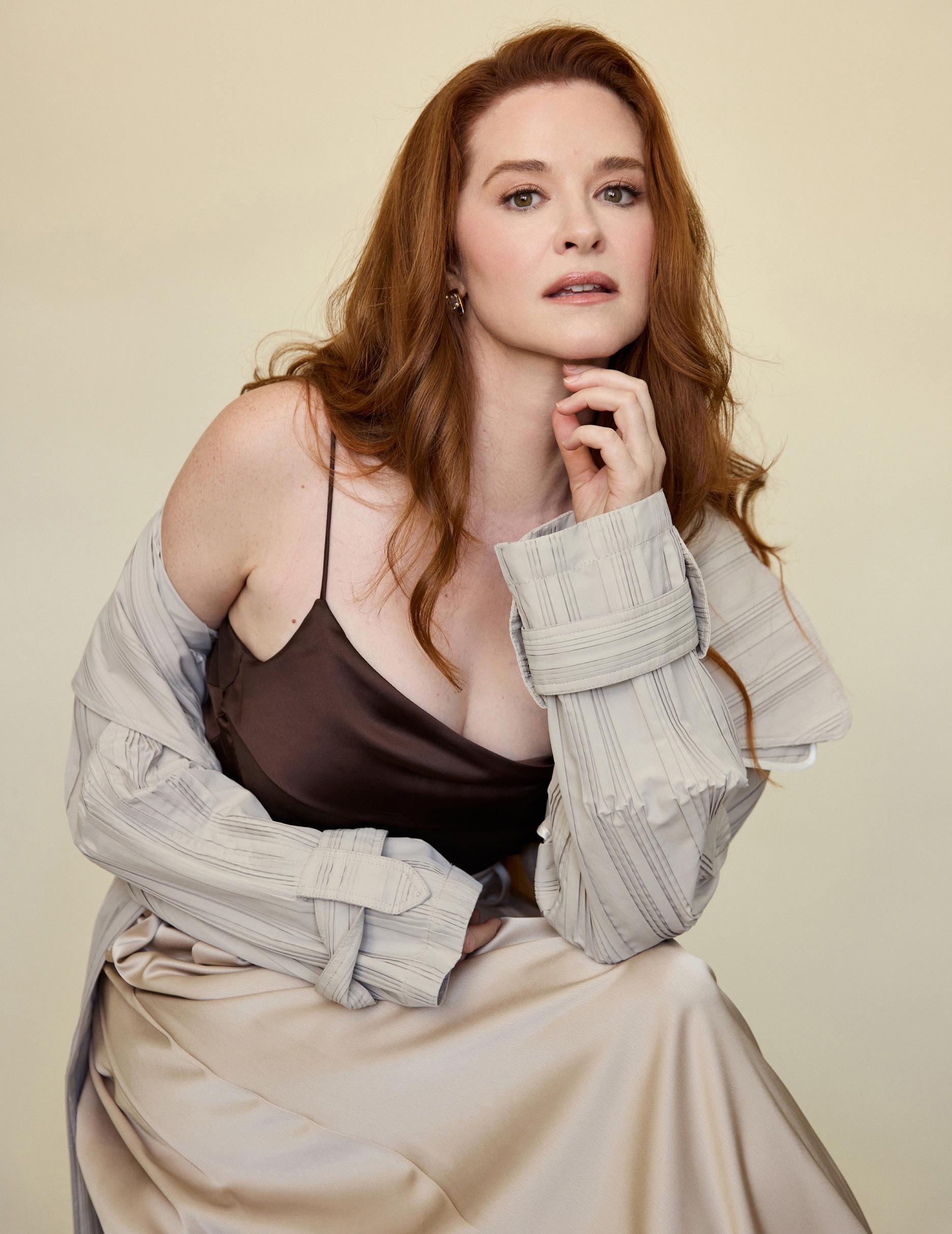

answers, and they play out in a series of really fun flashbacks that kind of trip through many years of her life. So we’ll get a much greater flavor of who she was and where she came from this season.
The other thing that I think is gonna be really fun and satisfying is that the love story is a little bit more spicy with her and Sam . And I say that mainly because they spend a good deal of the season still kind of angry at each other. They were left with this big unanswerable question hanging, and then we skip 11 months down the road, and they’ve barely spoken to each other. But they’re thrust back into each other’s lives because of our first murder mystery that hits the town, and we get to witness them being forced to work on these cases together, even though there’s some anger and hurt and frustration. You can see and feel the attraction underneath the surface, and I think that makes the love story even more layered and more delightful, with an even bigger payoff. I’m excited for audiences to see that.
You’ll soon portray the legendary Hedda Hopper in Jimmy. What excited you most about taking on such a historically complex figure from Hollywood’s golden age?
The first thing was that my good friend Aaron Burns called me about 18 months ago and said, "I’ve got the rights to Jimmy Stewart ’s life. I have the script and I haven’t chosen anyone else for the movie yet, but I want you to play Hedda. Will you do it?” I said yes on the spot without even having read the script yet. I wanted to be a part of the Jimmy Stewart story. I am such a big fan of his. It’s a Wonderful Life holds such a special place in my heart, and the idea of getting to go into the glitz and glamour of old Hollywood with this iconic, very complicated, very interesting, and dynamic character had me so excited.
I am just in love with playing in any kind of period story. I love being completely immersed in a different time and place. That makes me so happy. The other thing that was really fun was that we got to shoot in Ireland , so I was very excited to go to Ireland . Then I read the script and I was just blown away by the story. I think
it’s gonna be a really, really special movie, and I’m glad that I get to be a part of it.
You’ve built a powerful portfolio within the holiday film genre. What do you think keeps audiences returning to these heartfelt, romantic stories year after year?
I think people love these Christmas romance stories because there is always, always resolution at the end of whatever drama or story these characters have to go through. I think as we are all living in a time that feels so uncertain, where there’s so much anger and so many issues that don’t have resolution, being able to turn on the TV and watch a story that we know will have a satisfying ending—where we can witness people trying their best to be kind to each other—is incredibly appealing. I think it’s aspirational, and I think people are desperate to feel some hope. They want to be inspired by loving relationships that move toward healing. More and more people are watching these movies and are craving them. More networks, more streamers, and more platforms are making these movies because they recognize how much people need this. It’s comfort to them in times that feel really scary, so I’m grateful to just get to be part of this whole world.
In 2023 alone, you released four major projects—each distinct in tone and theme. How do you balance the demands of acting, producing, and writing while maintaining creative integrity?
I think I approach every project, whether I’m acting, directing, producing, or writing, kind of from the same perspective, which is: is this a story I wanna tell? That’s always the question I ask whenever I get an offer to do a movie, and it’s always the question I’m asking when I’m sitting down to come up with an idea for a movie. What is the story that I wanna tell? Fundamentally, for me, the story has to have some sense of hope and some sense of redemption. I always wanna tell a story where people in the audience feel seen, and where the characters go from a place of brokenness to a place of wholeness—or at least start their
“I love playing in a different time and place; period stories let me fully immerse and explore worlds I’ve only dreamed of.”
journey toward a place of healing. I think those are the kind of stories that make people feel really seen and are really universal. I’ve always wanted to tell stories that make people feel less alone in the world—where they can watch what’s going on and say, "Right there! I see myself in that moment," and experience something in that story. They can feel the feelings of that experience in a safe space because this is a fantasy that they’re watching. That’s my goal. That’s my North Star. Is this a story I wanna tell? Does it help people feel less alone? Is there redemption and a sense of hope? If the story checks all of those boxes and it’s written well, then I say yes.
With Birthright Outlaw and Guiding Emily, you explored deeper emotional and spiritual narratives. How do faith and hope inform your artistic choices?
I think I’ve answered this in several of the other questions. Yeah, I think hope and emotional, spiritual, faithful aspects are kind of the very fabric of my North Star, and I weave my sense of hope into every moment that I’m on set, in every line that I write, and every line that I speak. I come from a place of hope and of really endeavoring to communicate and be a channel for hope for the people that are watching, to allow them to laugh and cry and think and feel in a way that points them toward a more hopeful and loving world.
You’ve become a trailblazer in shaping modern romantic storytelling at networks like Lifetime and Hallmark. How do you see the role of women evolving in these genres?
I think the women in the genre have always been pretty strong and beautiful, and what I love about the characters that I choose to play in this genre are the ones that have a lot of layers to them. I really love playing characters that have some deeper trauma and deeper pain so that they have a greater distance to travel to overcome it, so that the redemption in the hopeful story rings a little more true. I think
what I love so much about playing Emily Lane is that she has so much love and light in her, but it’s almost like that love and light is a reaction to—and it’s almost like she’s choosing light to oppose the pain that she endured as a child. She’s choosing to move forward, forge ahead, and find her new home with love, hope, light, and kindness for everyone. She’s relentlessly in pursuit of doing the right thing and bringing the right person to justice. The pain she endured and the hardships in her life are the things that have informed her and taught her how to be even more ferociously hopeful, and that’s why I love so much about playing her.
What advice would you give to women looking to move from acting into producing or directing within an industry still catching up to gender parity?
Honestly, there are so many women in positions of leadership in this regard who are eager and excited to open the doors for other women who want to do this. I think for a woman who’s been an actor, you have so many of the skills necessary to be a good producer and a good director because you’ve just spent so much time on set—you know what works, you know what doesn’t. You know how to speak to actors and how not to speak to actors. You know what feels right when you’re blocking something because you’ve blocked a million scenes and lived 100,000 moments. So I think it comes a lot more naturally to actors, for sure.
The biggest hurdle to overcome, really, for me at least, has just been feeling confident enough and getting over the fear, because I think it is a pretty scary thing to dive into the director’s chair. I did find that diving into the producer’s seat first definitely eased me into the director’s seat more readily. There’s also the incredible program Make Her Mark that Ashley Williams started, which is all about training women to be directors in the Hallmark world. People like Ashley Williams are doing incredible things to raise other women up to move behind the scenes and start creating the magic themselves.
“I want stories where people go from brokenness to wholeness, or at least start their journey toward healing.”
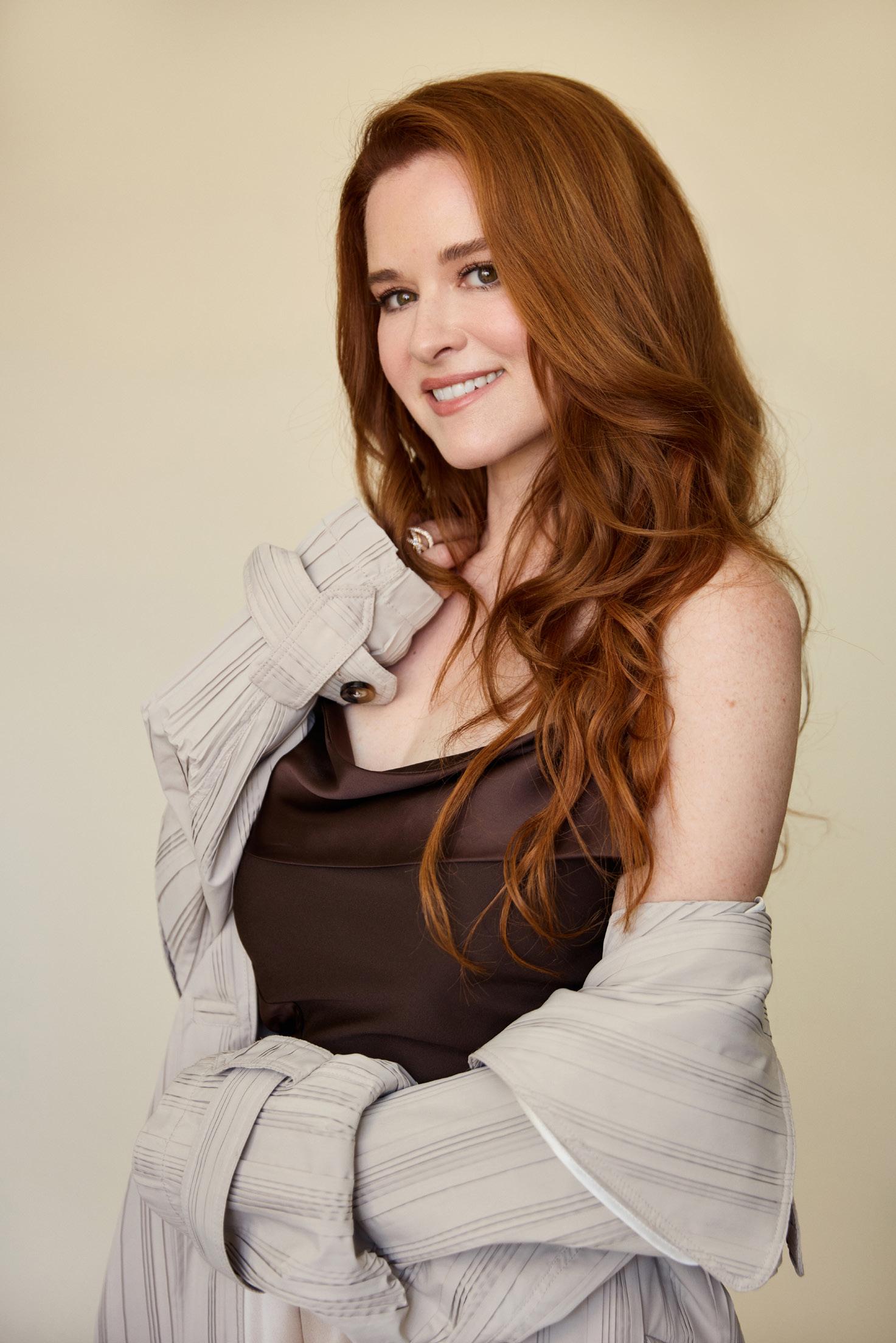
You’ve worked with so many strong female creatives, from Bonnie Hunt on Amber Brown to your own teams on Lifetime films. How important is collaboration among women in sustaining creative longevity?
We would not be able to move forward in any way without collaboration among women, and I think it’s a beautiful thing to get to work with such incredible women on Mistletoe Murders I’ve worked with several absolutely phenomenal female directors there, and one of our producers is female. The head of Lionsgate is female. We have multiple female heads of departments. I love that crew so much. Everyone works really, really well together in the collaboration, and the care for one another is exceptionally beautiful. So yeah, we would be nowhere without all of us coming together and collaborating.
You began acting at a young age and landed your first major theater role while still in university. Looking back, what moment felt like your true turning point?
The real turning point was doing Romeo and Juliet at the McCarter Theatre in Princeton during my fourth year of college. That’s where pretty much everything started for me. It was my first professional production. I was surrounded by the most incredible actors, including the voice coach, Kate Wilson from Juilliard, who would work with each one of us for an hour every day just on text work. I felt like I had a whole master’s program working on that play, and it’s one of the greatest highlights of my career. It was my first job, and that was absolutely the turning point. I was reviewed in The New York Times and Variety, and all of a sudden I’m this college kid, and I’m having multiple agents and managers knock on my door and ask to represent me, which is sort of unheard of in an industry that’s so incredibly competitive. I feel extremely lucky and blessed that everything happened the way it did, but yeah,
that was the biggest turning point for me for sure. What is your creative process like when developing a new character—especially one you’ve written yourself?
Sometimes I see the two characters, and I don’t see their names. Their names come a lot later, and I will jot down, "He is this and she is this," and sometimes I will write whole little exchanges between them in a little note on my phone. Maybe it’s the big climactic fight that they have, or the big climactic moment where he finally confesses that he loves her or something like that. I have these little bits and pieces of scenes that sort of come to me before I even have a full outline for the story. I often have the people really clearly in my head before I have the set of circumstances, and then the set of circumstances kind of comes in after the fact to fill in the people because the people are the most important to me. That’s sort of my process. I go straight for who the people are, what they are to each other, and why they need one another, and then I go from there.
“Collaboration among women is everything. We can’t move forward without lifting each other up and working together.”
As someone who has both performed and directed stories about resilience, what does storytelling mean to you on a personal level?
Storytelling is everything. It’s how our culture continues to grow, learn, and change, because the stories that we tell inform us about how things went horribly wrong or the things that went wonderfully right. The stories of love and redemption are the stories that teach us the most important lessons in life and the things that move us. You can talk yourself blue in the face about an issue, like a political issue, but until you are face-to-face with an actual story of a real person embodying whatever that “issue” is, you don’t understand it viscerally, and it won’t change you. Story is what changes people’s hearts and minds. I think storytelling is the greatest place of change.
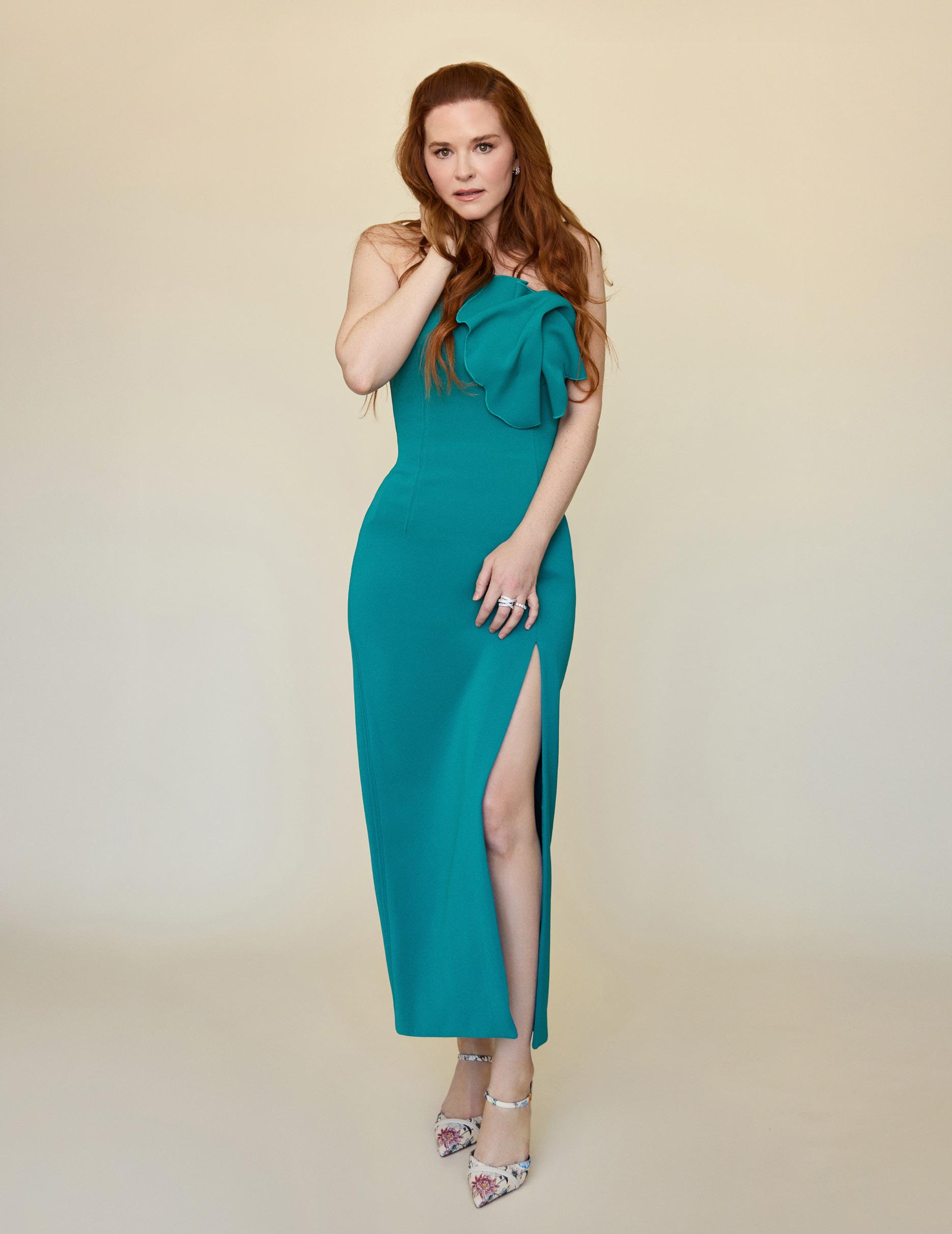
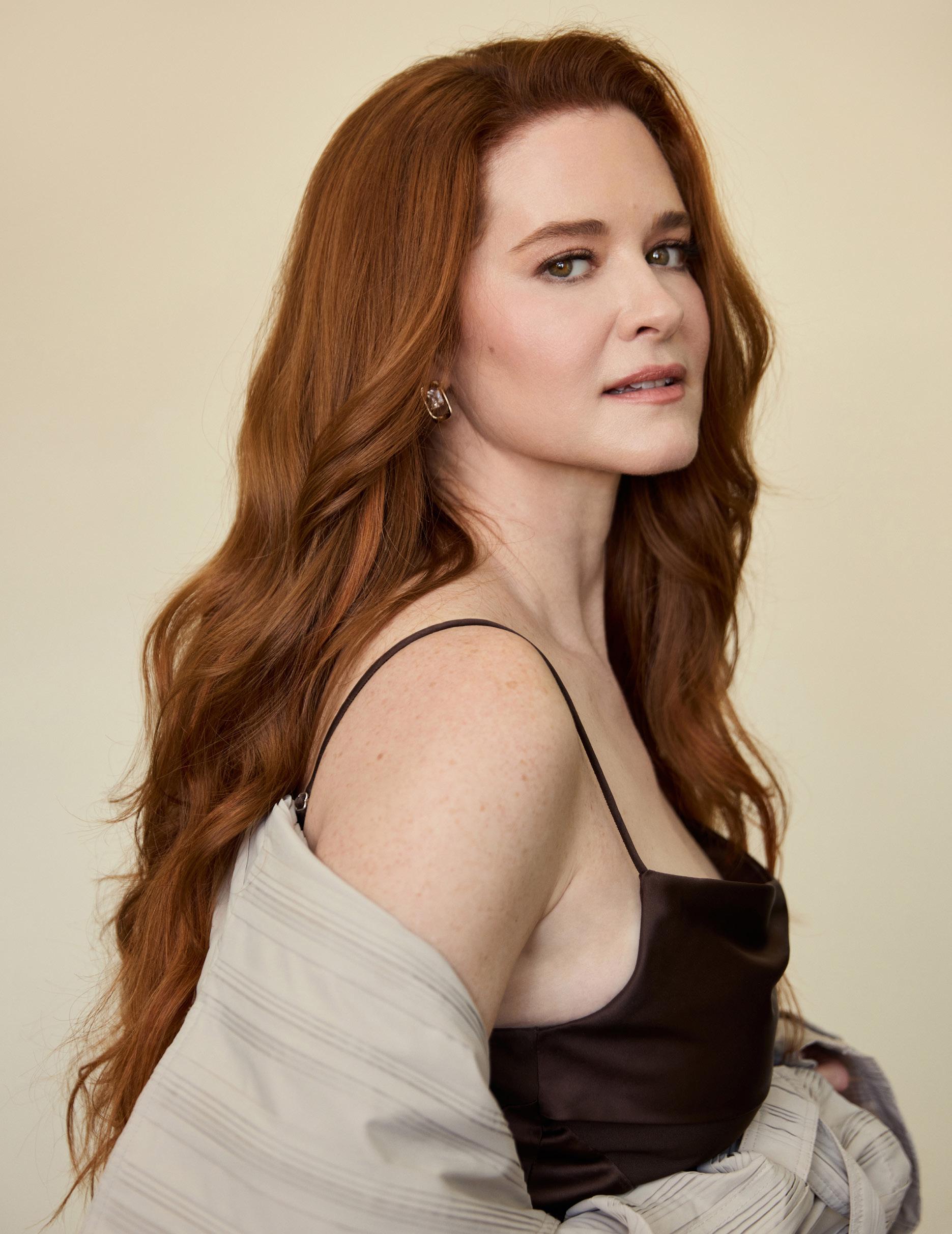
Balancing a thriving career and family life can be challenging. What have you learned about maintaining presence—both at home and on set?
I think the most important piece of the puzzle in the balancing act of work and home life is that whenever you’re in either place, you are 100% present in that particular moment. I try my best to be as present as possible when I’m home. When I’m on set, I don’t want to be working on a million things at once, so I want to show up on set and be completely present to the community I’m working with. Then, when I take my break to go call my family, I am completely present with my family and my kids and my husband for the moments that I have to FaceTime with them.
I’m not gonna pretend that any of this is easy because when I’m working long hours on the other side of the country with a three-hour time difference, finding the moments to connect with my kids and husband—where they are also able to connect or want to connect—is definitely a challenge. There are times when the conversations are very brief because I’m completely exhausted from work, or the kids are distracted because they didn’t want to talk at the time I was available. Sometimes you get epic, wonderful conversations when you’re apart, and sometimes they’re sad, frustrating, or less than ideal. It just comes with the territory. You do everything you can to show up regardless, and I think the balancing act is something we’re learning day after day, week after week, month after month. My work takes me out of the country or out of state for every single job I do, but I do have plenty of time at home in between jobs. We just do what we can, do our best, and we don’t try to be everything to everyone all the time because it’s not possible. That’s the best I can do.
What has motherhood taught you about empathy and creativity in your work?
Motherhood completely transformed my world in every possible way. This is a trite saying, but it’s very true. When you have kids, your heart just sort of exists in bodily form outside of your body, and you can’t possibly know everything
that’s happening with them or where they are at every second of every day, and you have to learn how to surrender. That is really, really hard. It’s also very, very hard when they’re going through something tough to be able to just be strong and hold it and not completely fall apart witnessing them falling apart. So there’s a lot of challenge that comes with being a parent, basically, because my heart was cracked wide open at the moment both of them entered the world.
I have much deeper love and empathy for people in my life because, at this stage in life, my kids are handling difficult relationships they have to navigate, and they’re struggling with people that feel unreasonable. I am constantly reminding them to have empathy, like painting the picture, saying, "You don’t know what this person‘s life is like. You don’t know where they were coming from before all of this happened. You just don’t know, but the best thing you can do is offer love, acceptance, empathy, and respect right off the top. Offer grace because you deserve grace too, and we all have our moments."
Kids also hold a mirror to us. Sometimes their moments that frustrate me frustrate me because it’s like they’re holding up a mirror to the parts of myself that I don’t like very much. I’m forced to reckon with that and keep myself from getting triggered and taking it out on them. Instead, I have to really look inward and be like, "Oh, you’re doing that because you’ve seen me do that, and I need to be better about that." It’s a really beautiful and challenging practice in learning how to love people well, patience, and empathy.
Finally, looking ahead, what’s a dream project— whether on stage, screen, or behind the camera— that you haven’t yet had the chance to pursue?
I think I would love to direct a feature-length film for sure. I don’t know when, but that is definitely something I want to do at some point. The other thing is that I would love to be in a romantasy series. I love romantasy so much, and there are so many epic stories that I find so exciting and beautiful. The storytelling and world-building are incredible, and I would love to get to be in something like that.
“Motherhood completely transformed my world in every possible way… my heart just sort of exists in bodily form outside my body.”
PHOTOGRAPHERS: IULIIA IATEL @julia.yatel & ANTON VOLNYANSKYY @anton_volnyanskyy
MODEL: JULIA GAJDA @julie_gadja
fashion stylist: ABBY BARROLL BROWN @abbybarrollbrown
ASSISTANT: SABRINA MATOS @samattoss
MAEKUP ARTIST: IULIIA IATEL @julia.yatel

Dress
STYLIST´S OWN
Shoes & bag
WILLA PHOENIX
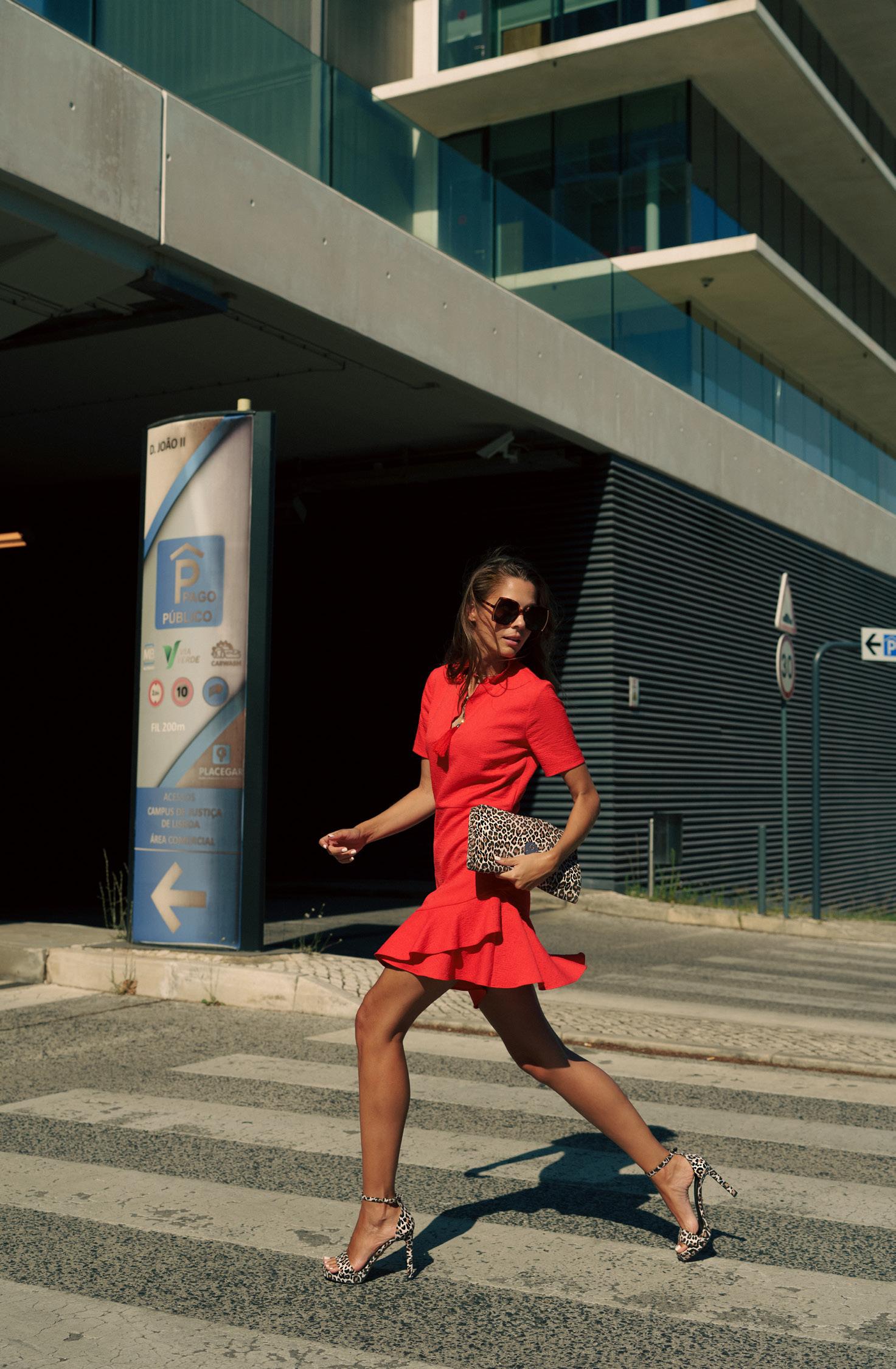
Dress
Shoes & bag

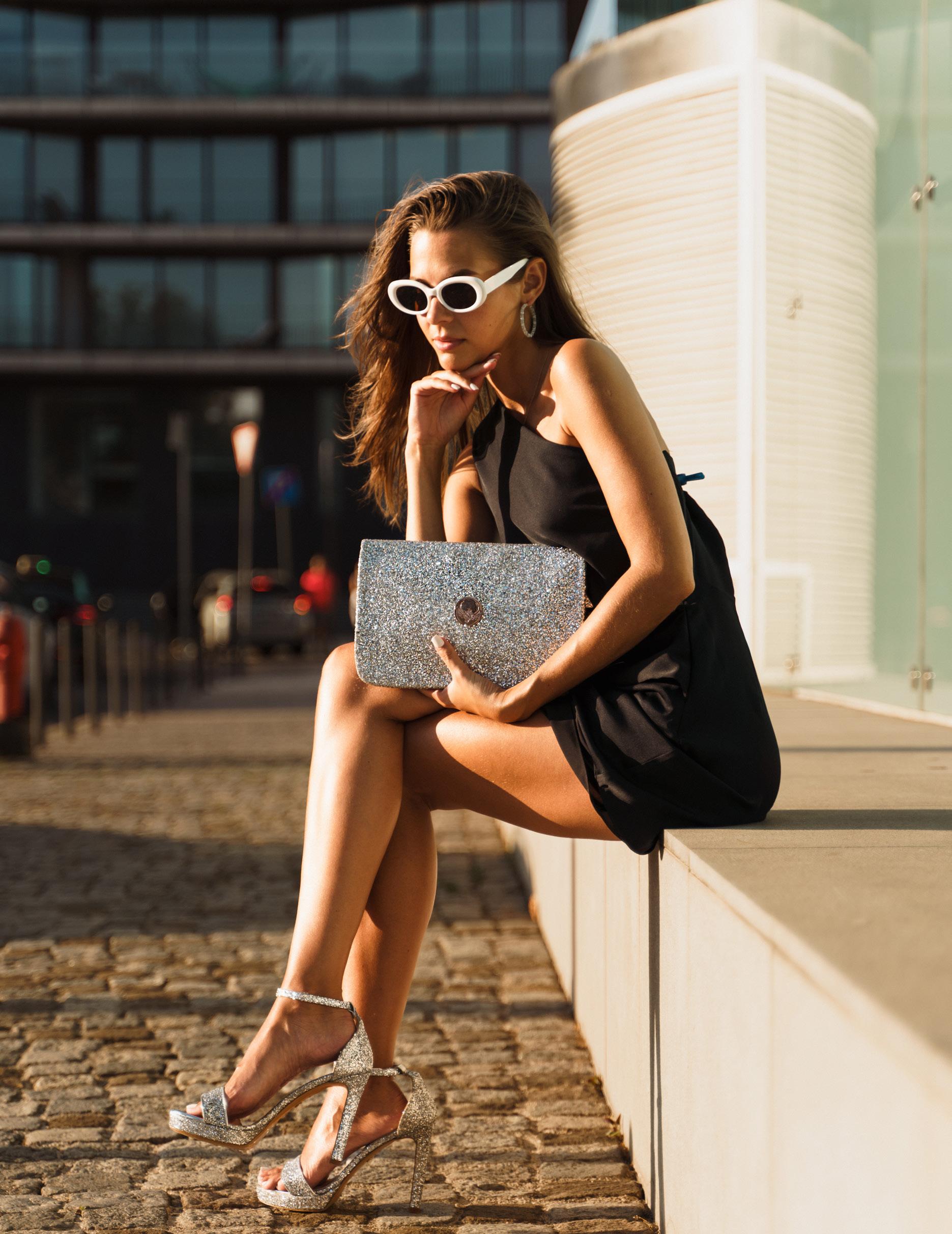
Dress
STYLIST´S OWN
Shoes & bag
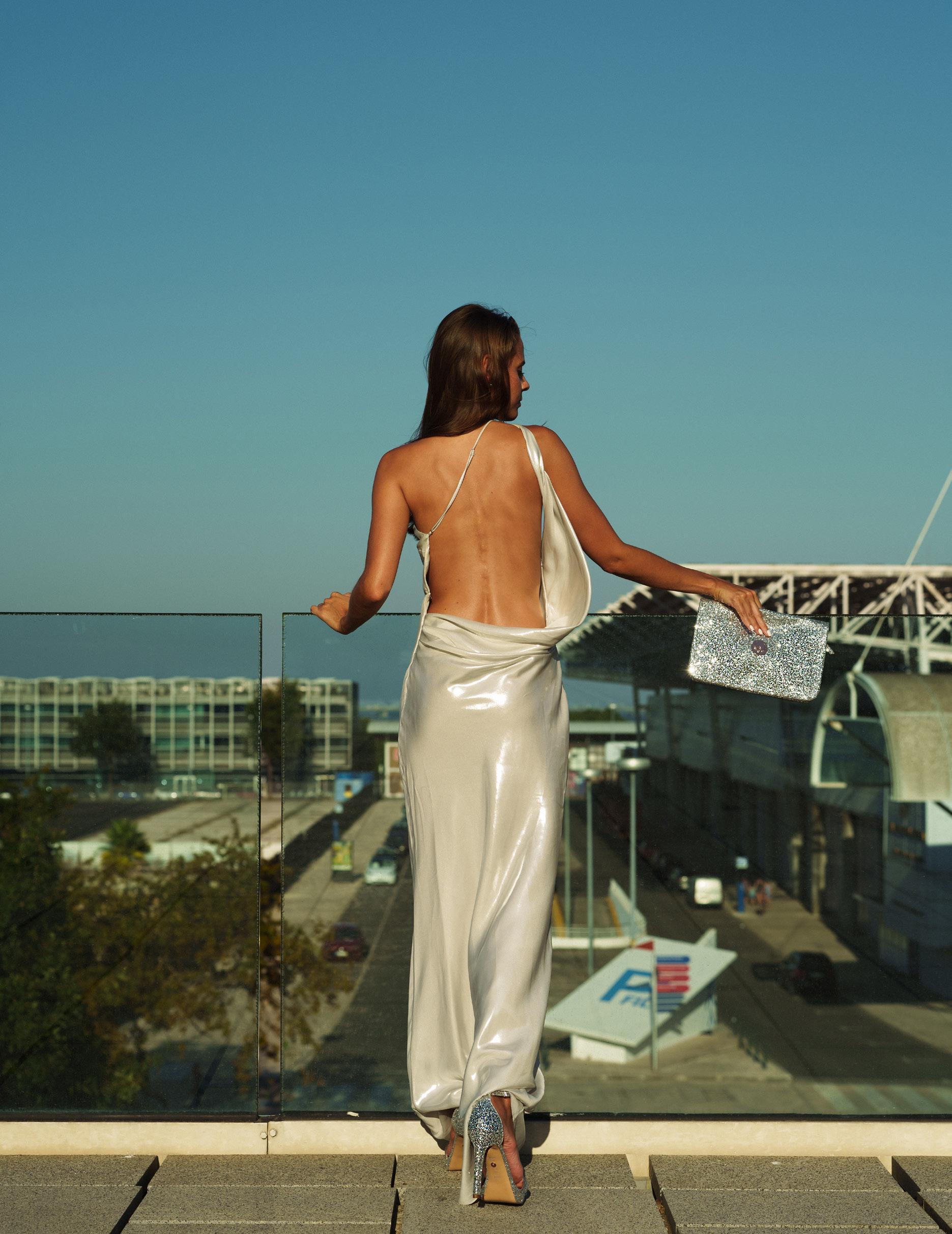
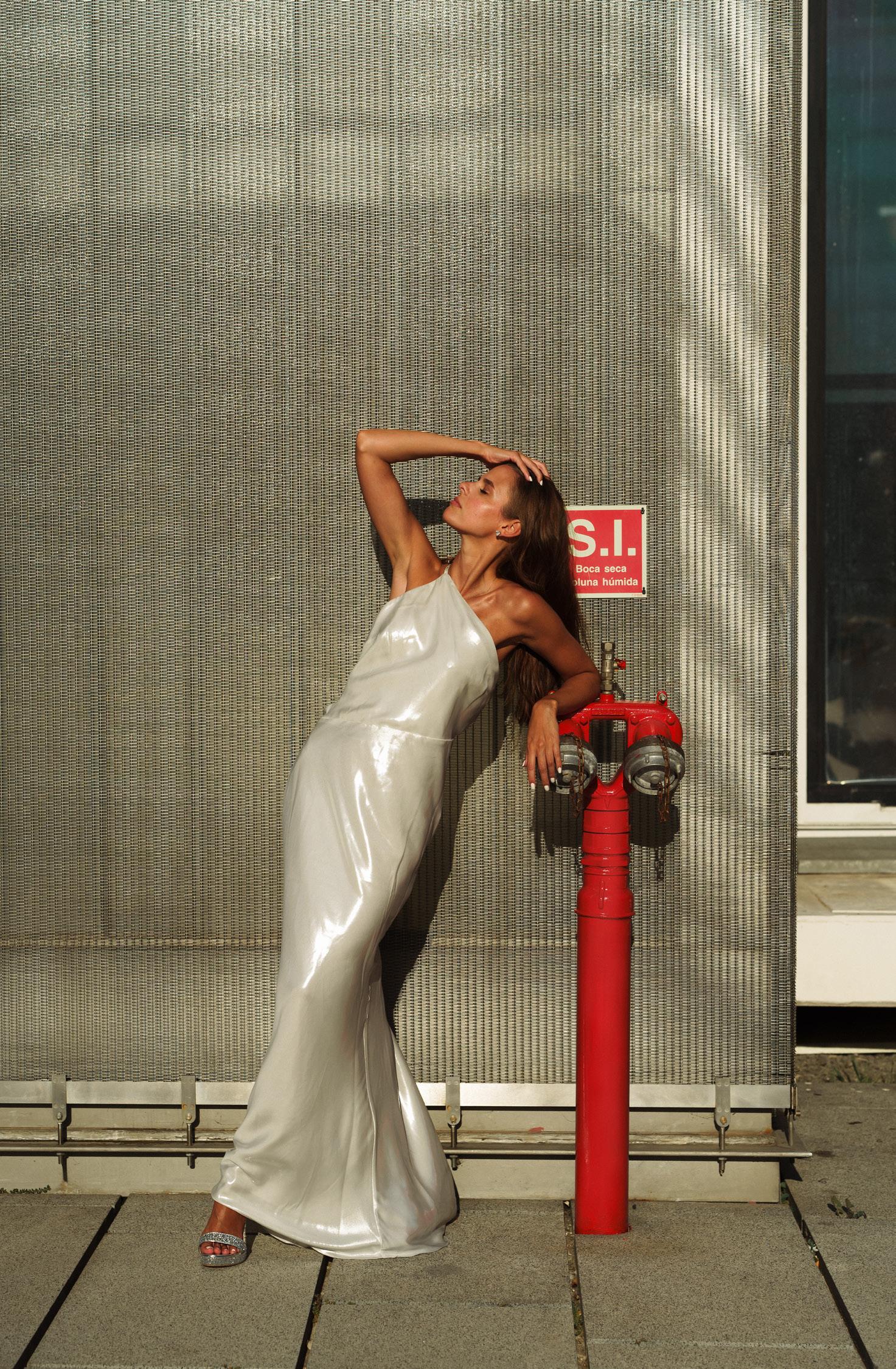
Dress STYLIST´S OWN
Shoes & bag
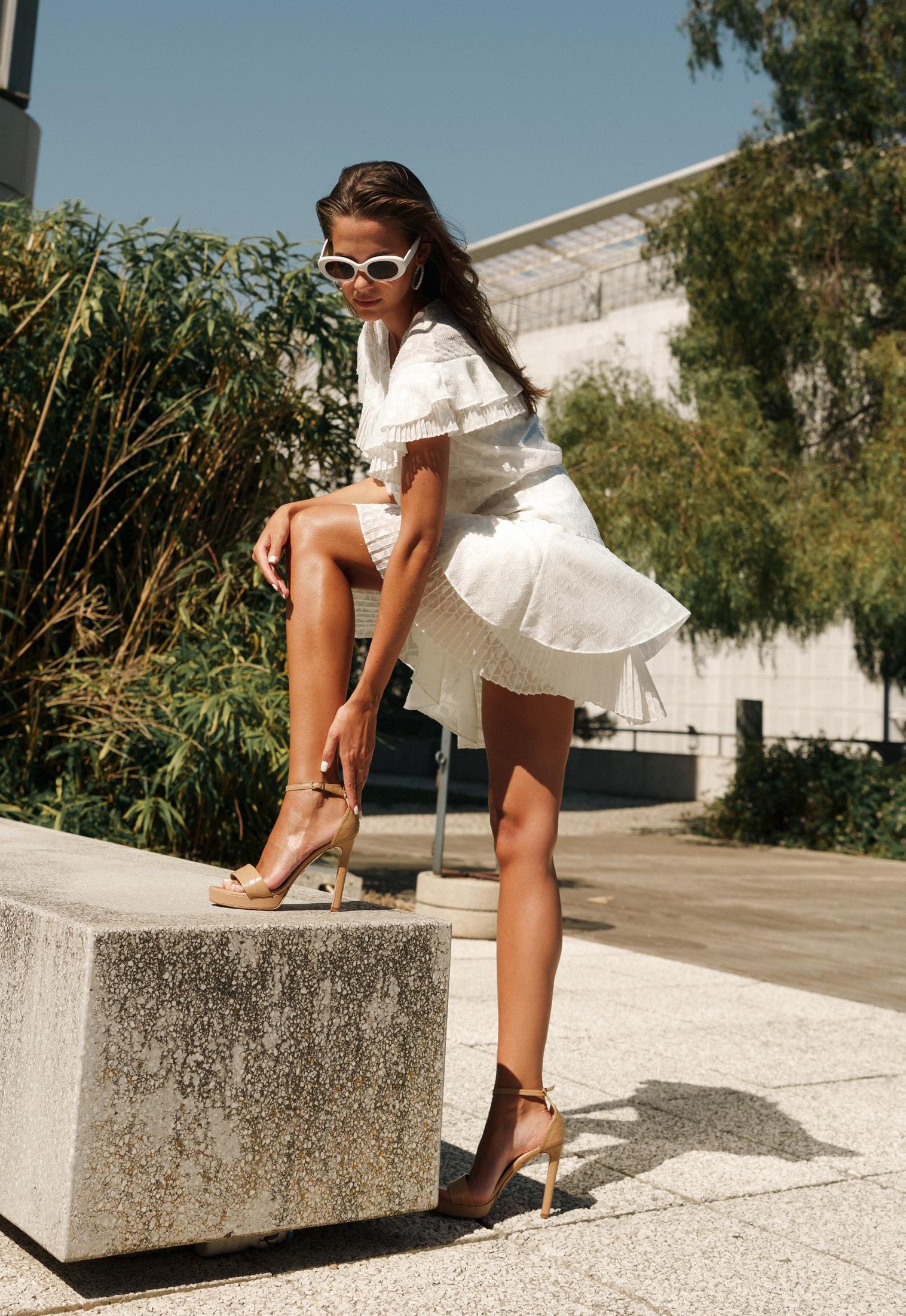

Dress
STYLIST´S OWN
Shoes & bag



BY JOSE-MARIA JIMENEZ
Off the northern coast of Kenya , beyond the hum of safari lodges and mainland bustle, lies Lamu Island —a place where the Indian Ocean meets centuries-old Swahili culture in a warm, honey-toned glow. Lamu is not simply a destination; it is a dreamscape of dhow sails, carved wooden doors, and labyrinthine stone alleys where elegance lives quietly, effortlessly. In November, when the heat softens and the breeze carries hints of salt and spice, the island becomes a sanctuary for the fashion traveler seeking authenticity wrapped in luxury.

The moment you step onto Lamu ’s shores, the pace shifts. There are no cars—only donkeys, dhows, and the rhythmic footfall of locals who have moved this way for generations. The island’s UNESCO -listed Old Town is Africa ’s oldest continuously inhabited Swahili settlement, a living gallery of coral-stone architecture, antique balconies, and ornate
On the eastern side lies Shela, a long stretch of untouched dunes tumbling into the ocean. Mornings are pale and pearlescent here; evenings, molten gold. At sunrise, silhouettes of fishermen glide across the horizon. By sunset, the beach transforms into a natural runway—silk scarves lifted by the breeze, kaftans flowing like liquid bronze. The interplay of desert dunes and cerulean waters makes Shela the perfect backdrop for highfashion editorials. Lamu ’s light is legendary: soft, warm, and endlessly flattering.
brass-studded doors—each one a piece of history, each one begging to be photographed. But Lamu is not a museum. It is a conversation between past and present, tradition and indulgence. Chic concept hotels, organic cafés, and contemporary artisans—ceramists, weavers, and woodworkers—give the island a quietly cosmopolitan edge.
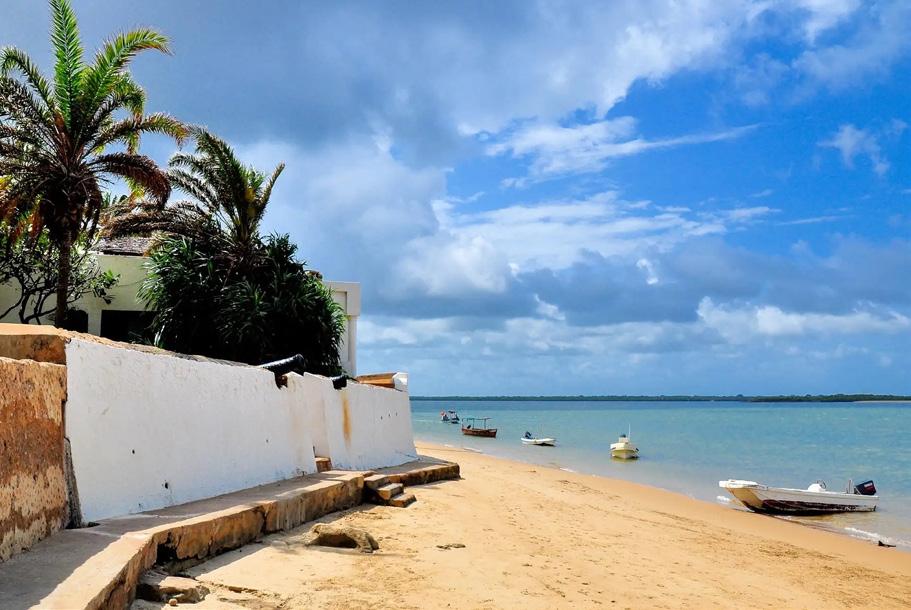
Lamu ’s luxury is understated and soulful. Check into a privately owned villa with hand-carved beds, monochrome interiors, and breezy rooftop terraces looking out to sea. Many homes double as art spaces, curated with African photography, local sculpture, and woven textiles. The Majlis Resort offers a polished, white-washed escape with panoramic ocean views.
Peponi Hotel, a Shela icon, mixes bohemian elegance with a storied guest list.
For ultimate seclusion, private villas— often staffed and exquisitely designed— provide a bespoke experience that blends comfort with cultural texture.
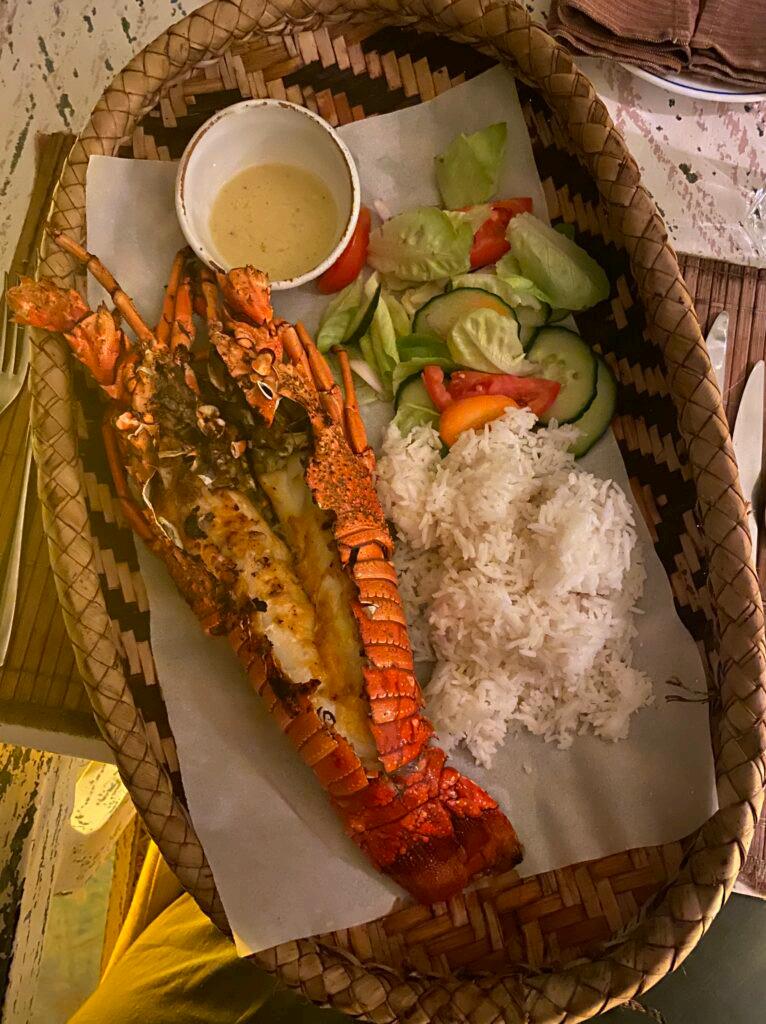
November is Lamu ’s moment—warm but not intense, calm seas perfect for sailing, and the island awakening from the quieter months. It’s the ideal time for photography, exploration, and long afternoons drifting between beach and boutique.

Lamu ’s cuisine is a celebration of Swahili flavors: fresh coconut, tamarind, cardamom, and the day’s catch. Try octopus grilled with lime, coconut rice folded into banana leaves, and warm mandaazi dusted with sugar. Dine beneath lantern light on a rooftop overlooking the town as the call to prayer echoes gently across the island. Or enjoy a barefoot lunch on the sand, where dhows bob like punctuation marks on the sea.
The island’s style is fluid, sun-washed, and poetic. Think: gauzy linens, ivory and sand-toned separates, artisanal jewelry hammered by local metalworkers, handwoven kikoys and barefoot glamour, There is something inherently cinematic about Lamu—its shadows, its textures, its architecture. For November fashion shoots, the color palette writes itself: ochre, ivory, coral, copper, and palm green. where dhows bob like punctuation marks on the sea.
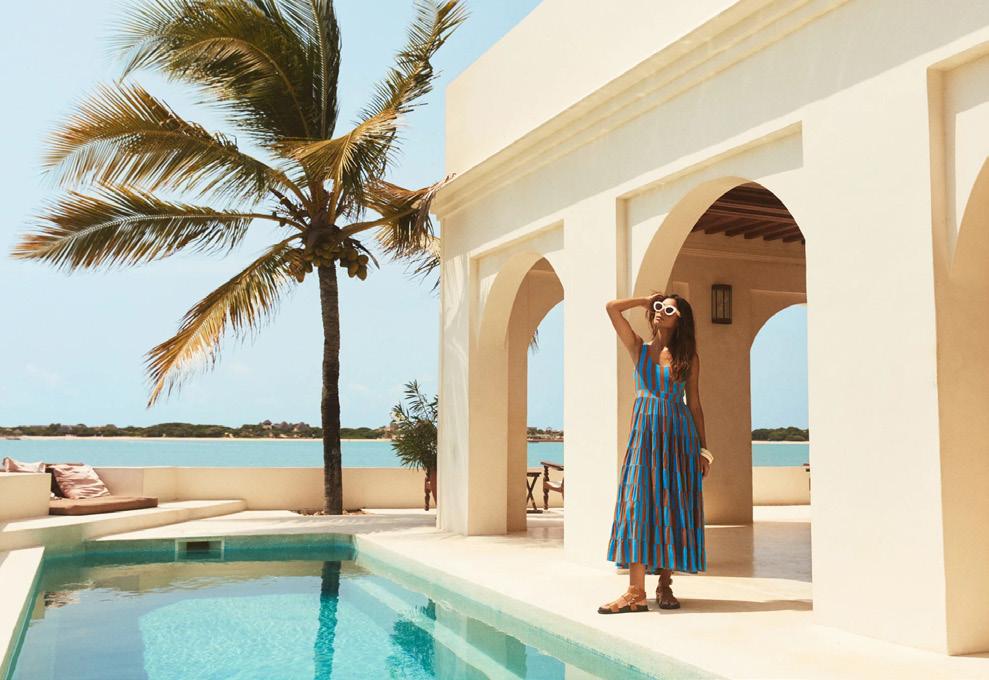
Sail a traditional dhow at sunset. The experience is timeless: smooth timber, fluttering sails, the sky turning watercolor pink.
Explore Old Town’s ateliers. Shop for woven baskets, coral-stone carvings, brass jewelry, and hand-dyed textiles.
Visit the Lamu Museum to understand the island’s maritime heritage, Swahili artistry, and ceremonial traditions.
Wander without a plan. The magic of Lamu lies in its quiet moments: the donkey bells, the scent of jasmine, the slow-moving rhythm of daily life.

“Lamu Island is not just a destination — it is a feeling. A whispered kind of luxury. A place where style doesn’t shout; it glows.”
Interview by JOSE-MARIA JIMENEZ
In an era where artificial intelligence drives efficiency and data dictates decisions, Tajana Gudenus stands as a voice of balance — a reminder that behind every click is a human being. As the visionary founder of GO AND GROW DIGITAL and current Head of Content at Digistore24 , Tajana champions what she calls “human-centric digital marketing,” where empathy, creativity, and technology coexist not in competition, but in harmony. Her philosophy redefines what it means to build brands in the digital age — replacing cold algorithms with connection, and transactional strategies with purposeful storytelling.
In this exclusive QP interview, Tajana shares her insights on “Marketing 4.0,” the art of digital empathy, and the power of kindness as a business strategy. From advocating for cyberbullying awareness to mentoring teams in mental well-being and creativity, she embodies a new generation of leaders — techsavvy yet profoundly human. For Tajana , success isn’t measured by numbers alone, but by impact: “Real ROI,” she says, “is Return on Intention.”
TALENT: TAJANA GUDENUS @T & A & N
PHOTOGRAPHER: NICOLE VASILIEVA @xniiicolle
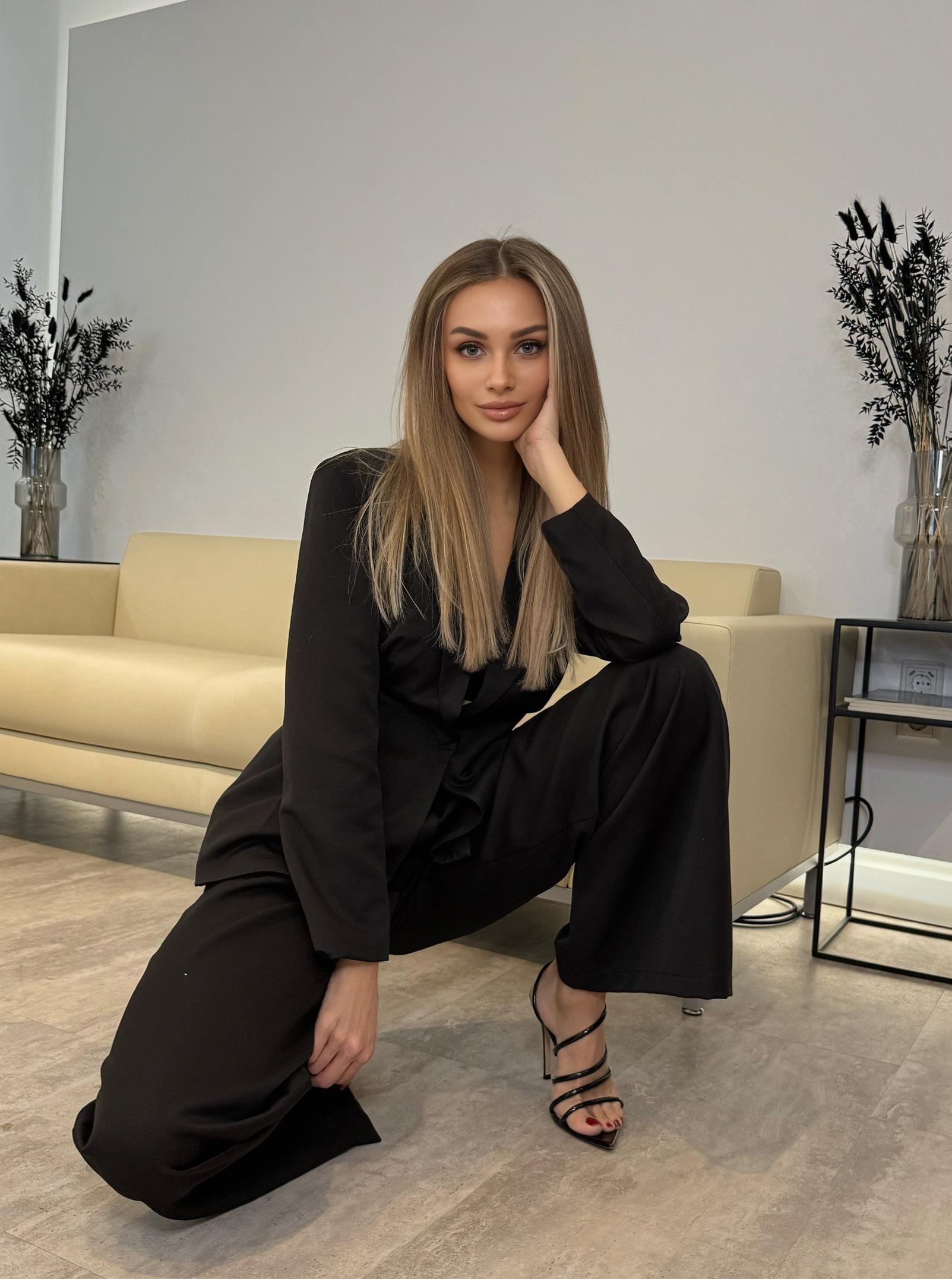

Tajana, you describe GO AND GROW DIGITAL as being rooted in humancentric digital marketing. What does “Marketing 4.0” mean to you in practical terms, and how does it differ from traditional marketing approaches?
To me, Marketing 4.0 is where technology finally meets humanity. It’s no longer about shouting louder or selling harder - it’s about listening deeper. Traditional marketing used to ask, “How can we reach people?” Now, we ask: “How can we truly understand them?” It’s about serving before selling, and about creating genuine connections that last beyond a click.
Your company’s philosophy beautifully combines creativity, technology, and empathy. How do you balance these three forces when developing digital strategies for clients?
It starts with listening - really listening. Every brand has a heartbeat, and our job is to hear it. Creativity gives that heartbeat expression and technology gives it wings. And empathy… well, empathy ensures it lands where it’s meant to - in the hearts of people, who this brand can serve the most. So, when all three come together, marketing becomes something deeply connective.
You’ve said that communication is human connection. In a world dominated by algorithms and automation, how do you ensure that human touch remains at the core of your work?
As a multilingual entrepreneur, how do language and cultural nuance influence your approach to global digital communication and marketing?
Speaking several languages has taught me that communication isn’t about translation - it’s about connection. When we understand and honor cultural nuance, we don’t just speak to the mind, we speak to the heart. This awareness allows me to see the world from multiple perspectives and to think beyond conventional boundaries, because I’ve learned that “normal” is simply a point of view, not a universal truth.
“Kindness doesn’t mean being soft or weak; it means being strong enough to choose compassion, even when it’s hard.”
By remembering that behind every screen there is a person: someone with dreams, fears, and stories. Automation can streamline processes, but it can never replace genuine presence. I constantly remind my team: we don’t talk to audiences - we engage with people. That small shift changes everything. And as more companies begin replacing human teams with AI systems, this mindset becomes even more vital. In my opinion, the future of marketing isn’t about replacing human connection - it’s about protecting and amplifying it.
You’ve built a company that advocates for kindness and awareness online. What inspired your commitment to fighting cyberbullying and promoting digital empathy?
Because I’ve seen the damage words can do - and the healing they can bring. As a mother and as a leader, I want the digital world my children grow up in to be safe, kind, and conscious. Kindness is powerful. It doesn’t mean being soft or weak; it means being strong enough to choose compassion, even when it’s hard.
In my opinion, empathy isn’t the opposite of innovation - it’s what gives innovation meaning. I fully support the evolution of AI, but I believe companies must balance progress with purpose. Profit should never outweigh long-term human connection.
Your campaigns on socially relevant topics, such as anticybermobbing, are deeply impactful. How do you approach the creative process for such sensitive issues?
We invite people with lived experience to share their truth, and then we translate that truth into visuals and stories. One example of such a campaign is one we did on @goandgrow.digital Instagram profile, which raised awareness about digital kindness and the emotional impact of online behavior.
Beyond our campaigns, we actively bring this mission into the real world. We visit schools -
often together with influencers that children admire - to open conversations about empathy, respect, and online responsibility. I also hold seminars at the Austrian Integration Fund, where I share our methods with educators, school representatives, and company leaders. It’s about creating ripple effects - helping others understand that digital empathy isn’t just a topic; it’s a movement that starts with awareness and grows through action.
Many digital agencies focus purely on results and ROI. GO AND GROW DIGITAL seems to focus equally on purpose. How do you define success?
For me, success is when growth and goodness walk hand in hand. It’s not just about numbersit’s about impact. Did we inspire someone? Did we make someone’s day easier, kinder, better? That’s what real ROI looks like to me: Return on Intention.
In your opinion, what is the biggest misconception businesses still have about digital transformation?
That it’s about tools. It’s not. True transformation starts with people - with mindset, empathy, and willingness to grow. Technology amplifies what’s already there. If your company culture lacks humanity, no software will fix that.
Your work bridges both the tech and creative industries. How do you stay innovative in a field that evolves almost daily?
By staying curious and open. I learn from everyone - my team, my kids, even my clients. Innovation happens when we stop pretending to know everything and start asking better questions. Curiosity keeps creativity alive. What role does design play in storytelling, and how do you ensure that each digital experience you create feels authentically human?
We keep it deeply human, because we see every brand as a person - with a personality, values, and energy of its own. In our creative process, we even visualize what that brand might look like if it were a person: how it would dress,
speak, and move. From there, we help it find its authentic style and digital presence - one that feels as real and alive as the people it’s meant to connect with.
You’re also a child rights advocate. How does that aspect of your life influence the way you approach digital ethics and responsibility?
It shapes everything. When you see the world through a child’s eyes, you understand how vulnerable and pure the digital space should be. That’s why I fight for responsibility, for awareness, and for platforms that protect, not exploit. The internet can be a playground - or a battlefield. It’s our choice.
In your experience, what are the key elements of an online campaign that truly moves people— not just converts them?
No 1: Authenticity. Meaning: Truth, emotion, and courage. People don’t connect with perfectionthey connect with honesty. When a brand dares to be real, to show its heart, that’s when the magic happens.
The term “WOW effect” appears often in your brand language. What does it take to create that wow moment for a digital audience today?
A wow moment happens when someone feels seen, heard, understood - or even saved. It’s not about glitter or grandeur; it’s about resonance. When design, message, and emotion align perfectly, the audience doesn’t just see your brand - they feel it.
You’ve mentioned that the internet can be both empowering and dangerous. What do you think needs to change in the way we educate young people about digital spaces?
We need to teach empathy as much as we teach algorithms. Digital literacy is not just about navigating platforms - it’s about understanding people. Young users should know that every comment, every post, has emotional weight. The internet should empower, not wound.
Education about digital spaces should focus more on critical thinking and digital self-
“Innovation happens when we stop pretending to know everything and start asking better questions.”

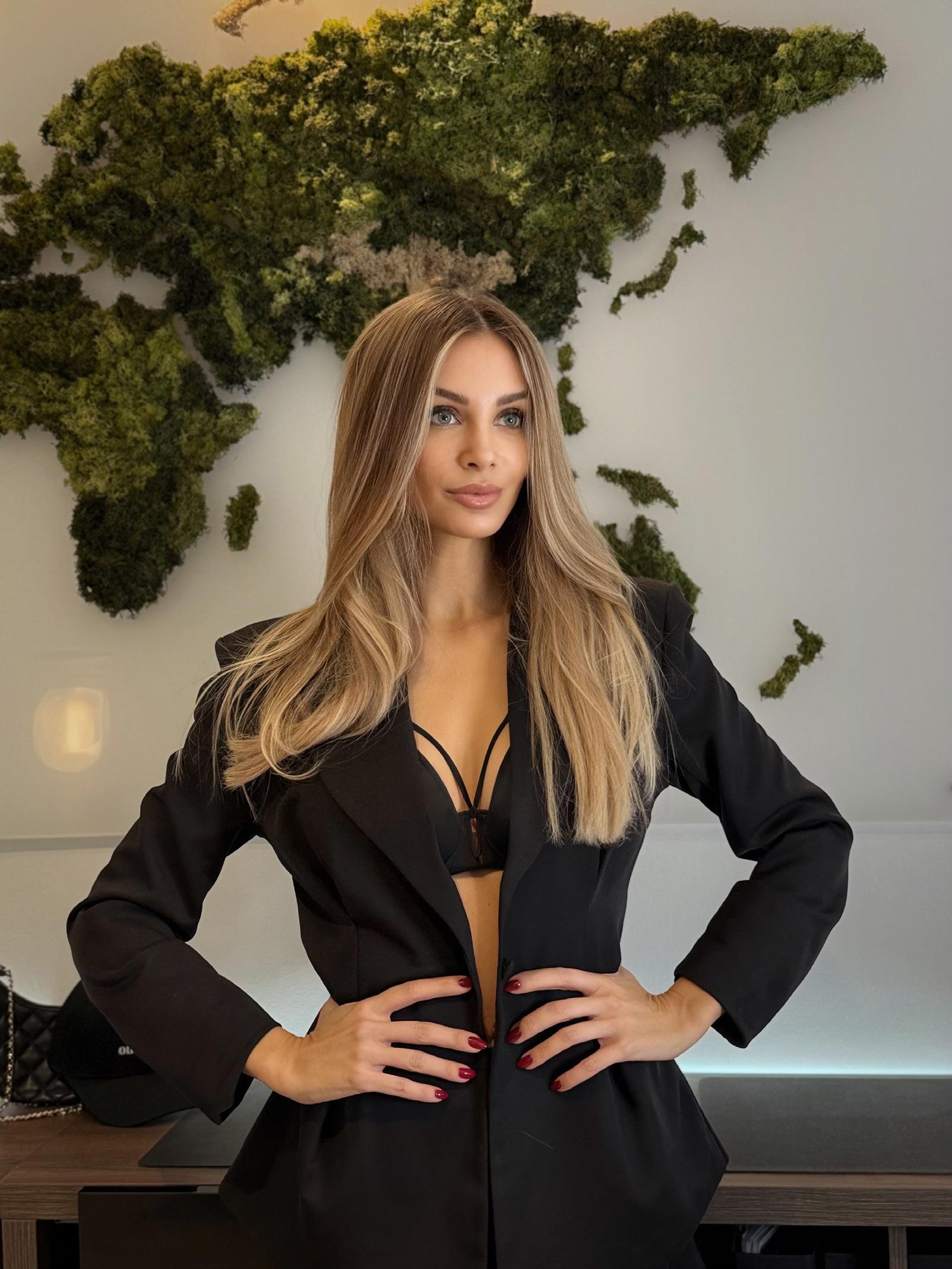
leadership not just technical skills. Young people need to learn how to build a healthy relationship with technology, how to protect their boundaries online, and how to use the digital world to express their authentic voice rather than chase validation on social media, for example.
I feel like currently technology and the internet are helping people to “make it,” even if they’re not from the richest countries - for example, IT experts from India who use online platforms to work on international projects and get paid according to international standards. I love that about technology. I think the biggest challenge right now is to protect people’s jobs, many of which could obviously be done more efficiently by AI - which is being heavily invested in and is developing incredibly fast. And we really cannot tell in which direction this is going to develop in the future.
As a leader in a competitive industry, how do you nurture creativity and mental well-being within your team?
By creating a culture of care. We talk openly about stress, balance, and mental health. We celebrate rest as much as results. When people feel safe and valued, creativity flows naturally. A peaceful mind is the birthplace of innovation.
You represent a new generation of entrepreneurs—tech-savvy yet purposedriven. What advice would you give to young founders building ethical digital businesses?
Stay kind. Stay curious. Don’t compromise your values for quick wins. Build something that feels good - not just looks good. The most
sustainable business strategy is integrity. You’ve mastered both programming languages and human languages. How has this unique combination shaped your worldview as a digital creator and communicator?
It’s shown me that both code and communication are about connection. One builds systems; the other builds relationships. When you understand both, you realize that digital creation is not about machines - it’s about meaning.
What’s one project or campaign that you feel best embodies the spirit and mission of GO AND GROW DIGITAL?
That would probably be our Digital Empathy campaign, which includes online campaigns, as well as in-person and virtual seminars I previously mentioned. It started small, but it grew into something powerful - a reminder that kindness can go viral, too. It’s proof that marketing can heal as much as it can sell.
Looking ahead, how do you envision the future of human-centered digital marketing—and where does Tajana Gudenus see herself in that evolving landscape?
The future belongs to brands that make people feel. AI will optimize everything - but it will never replace the warmth of human connection. I see myself continuing to bridge those two worlds: helping technology serve humanity, and helping people find their voice in the digital age.
Because at the end of the day, marketing isn’t about machines - it’s about meaning. And that’s where I’ll always choose to lead from: the heart.
“AI will optimize everything - but it will never replace the warmth of human connection.”
Article by JUANDA B. RUSTAM
he air is getting colder, a jacket is a must-have for comfort and, of course, to be stylish. Just try a barn-style coat, then choose one with a looser cut, say a size up. Whether you choose loose or skinny pants, either option works well. A T-shirt on top and jeans on the bottom, it can be simple and unexpectedly stylish. Or another way that looks elegant is a combination of two items that contrast in texture, but still have the same color tone. You can use a workhouse jacket, it's a kind of barn jacket too. For the bottom, you can wear a pencil skirt. Then, complete it with a stiletto. Each piece fits perfectly and exudes fashion. Don't forget to wear accessories like a necklace. Finally, you know that mixing and matching a barn coat can be an extraordinary style.
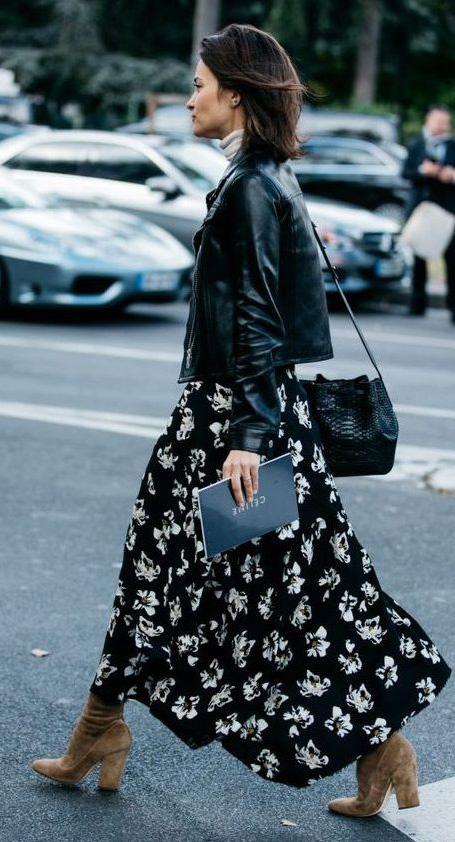
A DISTRESSING AND OVERWROUGHT COLLECTION OF LEATHER JACKETS
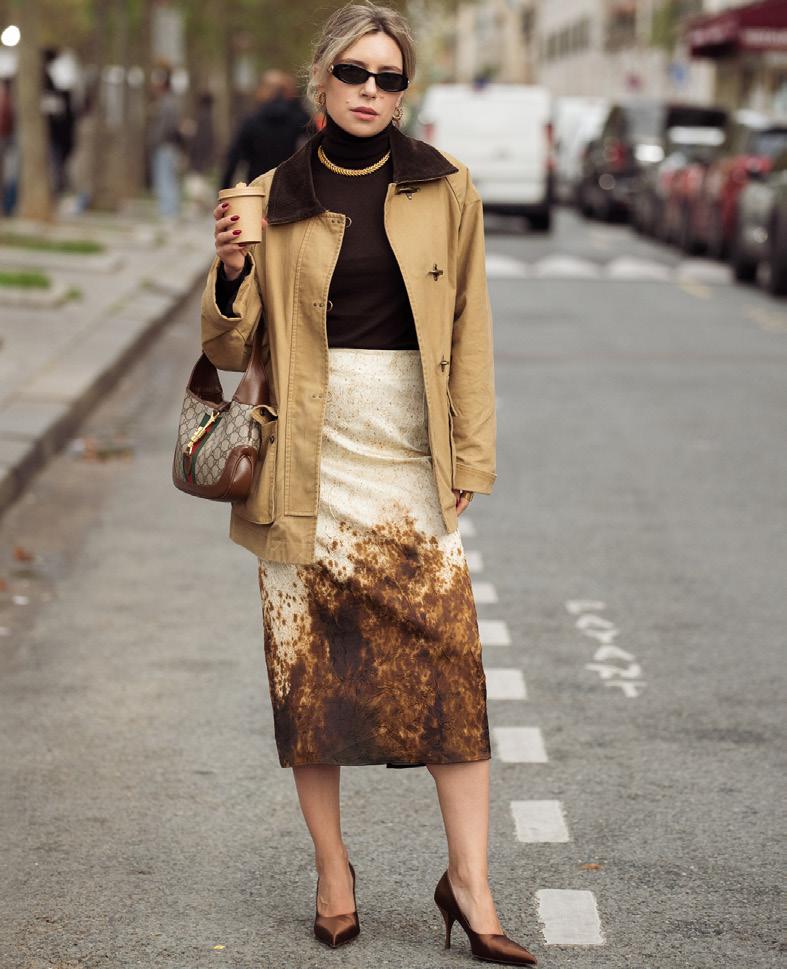
The aesthetic of a jacket can be anything, like a worn-in, aged leather jacket, coupled with the jacket's thickness and, of course, durability. This makes the jacket a recommended outfit for autumn and into winter. Pairing a distressed jacket with a skirt with a floral or geometric graphic pattern is a great option. And what else? Complete your top with a turtleneck and pair it with boots.
There are plenty of options for staying cool this fall. Jackets are a surefire go-to, but suede outfits are always a go-to. Soft, supple, and edgy are definitely its hallmarks. This fall, if you're looking for a more unexpected alternative to a black leather jacket, look no further than a suede blazer. Softer and more supple than the more edged suede blazer, you can mix and match a suede blazer with flared jeans. While the style was popular in the 50s and 60s and then became a mainstay in the 70s, you'll still be a force to be reckoned with in throwback outfits. Never underestimate suede, whether it's from a designer, retail store, or a long-standing staple in your wardrobe; it's still on the styling charts even for summer. In fact, suede is always available in a variety of colors, and its colors go beyond the neutrals most jackets are known for. Just look at suede blazers available in olive green, wine red, and blush pink. It doesn't stop there, suede has a variety of silhouettes, boxy, loose, or body fit.
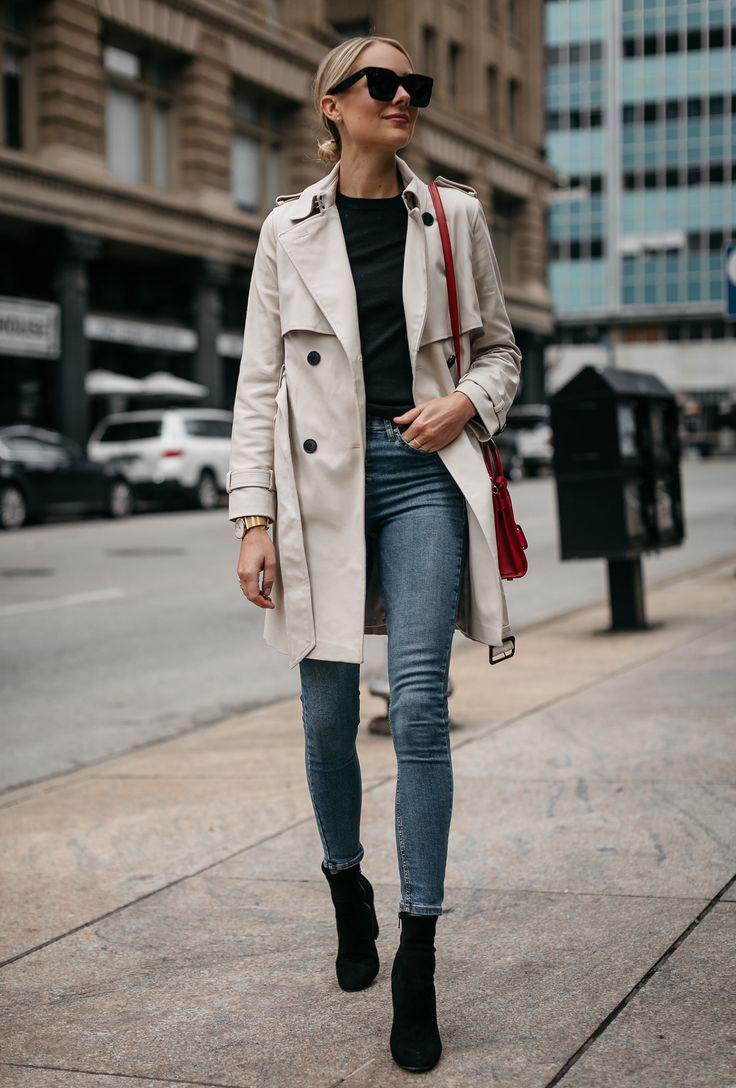
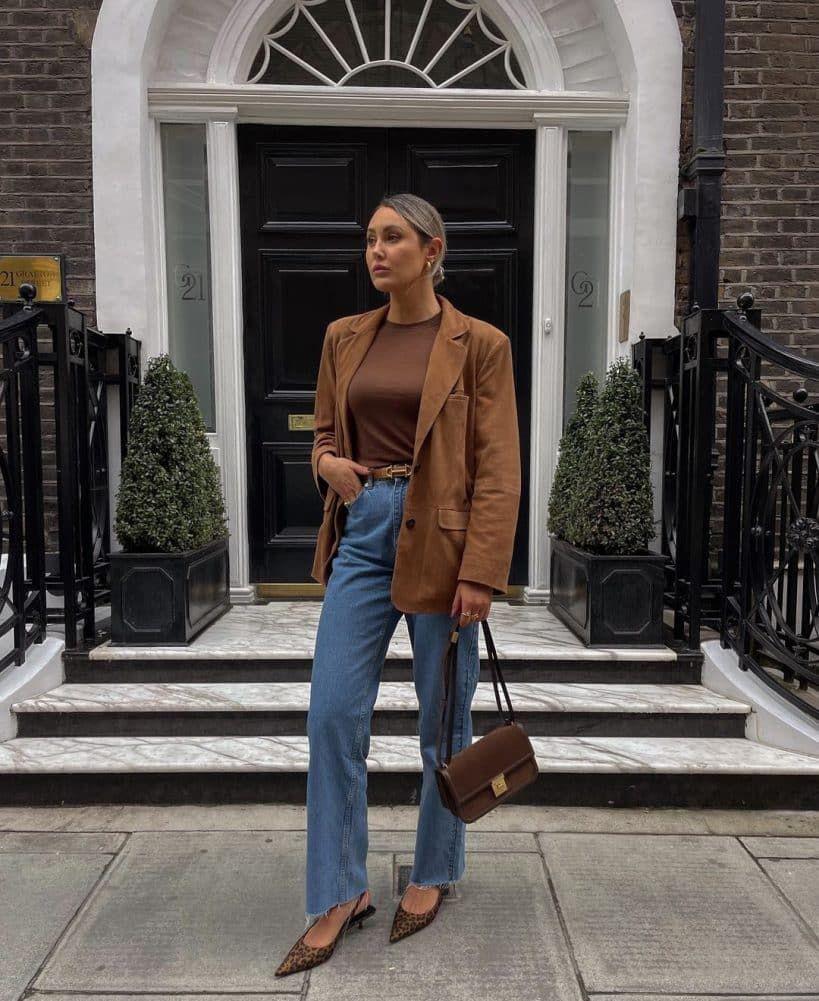
This November, people are still frequently seen walking around in trench coats. Indeed, lightweight trench coats are trending in 2025, and innovations in materials certainly make this possible. However, you can still create something new and refreshing with a trench coat. Material, pattern, and silhouette are important, but the most fundamental aspect is how you style it. Pairing a trench coat with kneehigh boots is a great option. You can also style a trench coat with jeans.
Let's layer your bomber jacket. This layered style keeps you warm and stylish. Layer a thick knit sweater over it. For the bottom, you can wear skinny jeans or thermal leggings. That way, you can show the world your sexy legs! You are a woman, right? Additionally, a beanie on your head and sneakers on your feet are still amazing ways to enhance your style.


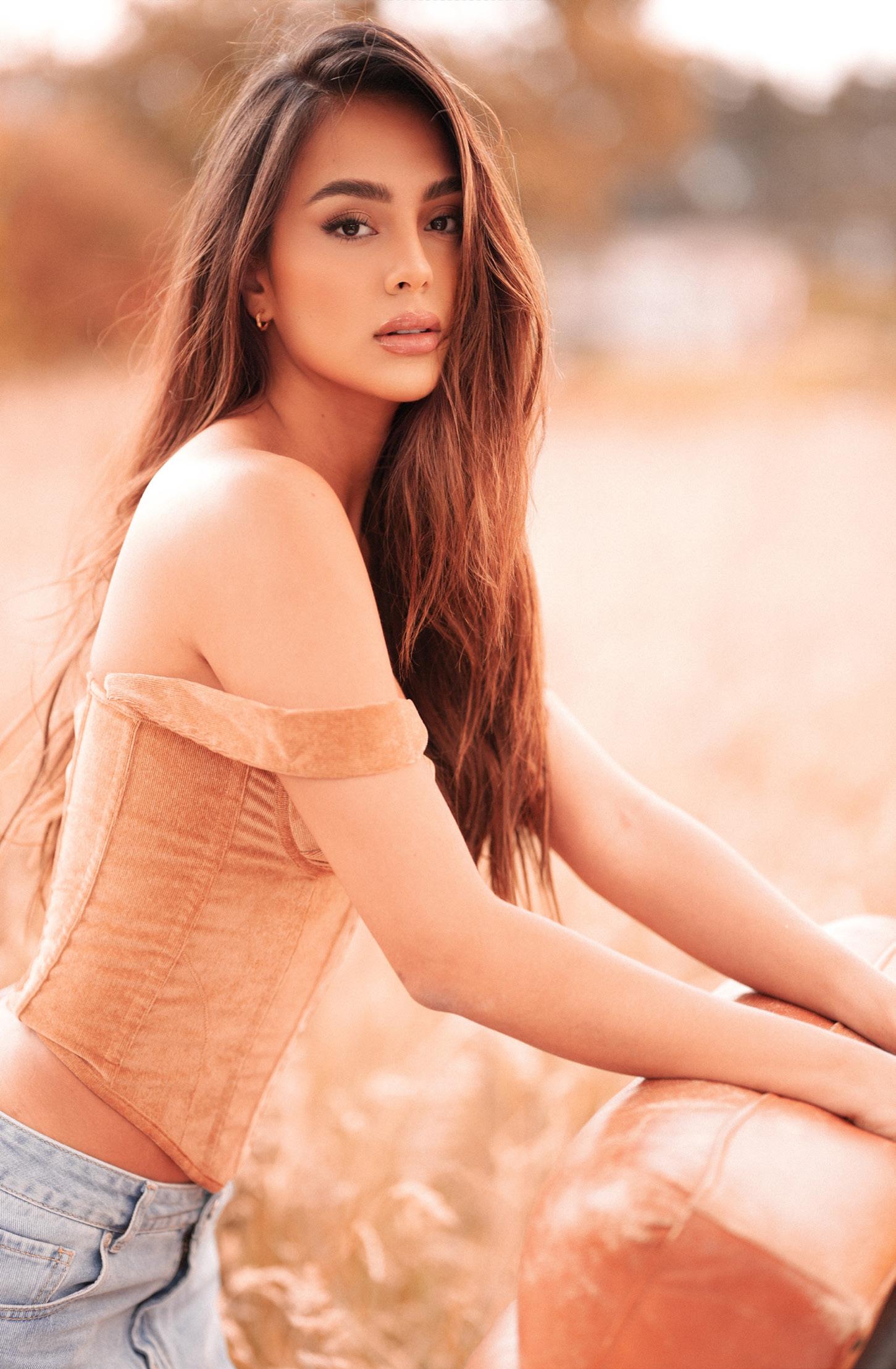
PHOTOGRAPHER: FELIPE BOHORQUEZ @felipebohorquez
MODEL: VANESA VELASQUES @vanesavelasquezv
AGENCY: AGENZI MODELS @agenzimodels
FASHION STYLIST: LINA ESTRADA @linera19
MAKEUP ARTIST: JONATHAN POSADA MAKE UP @jposadamakeup
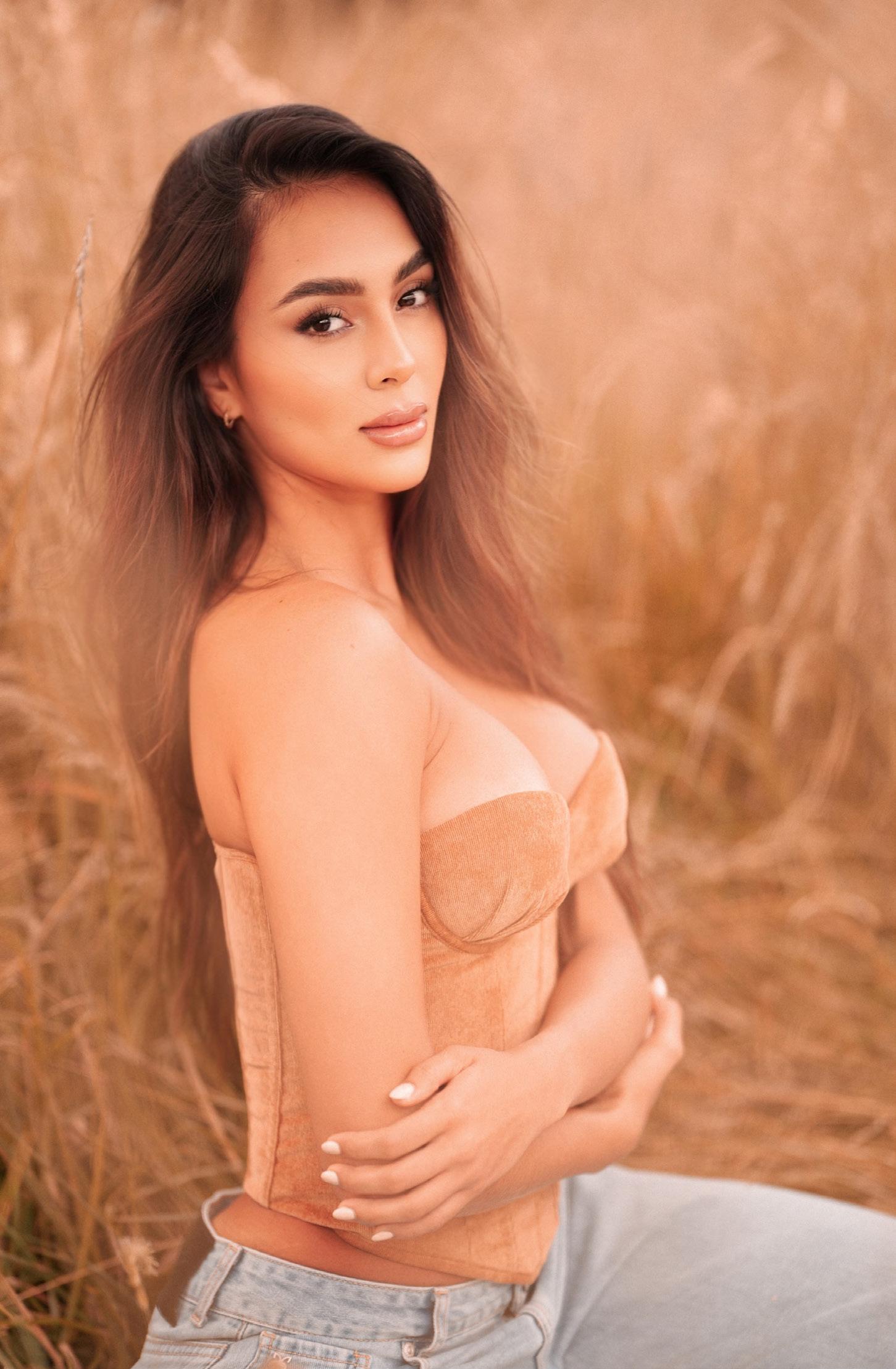
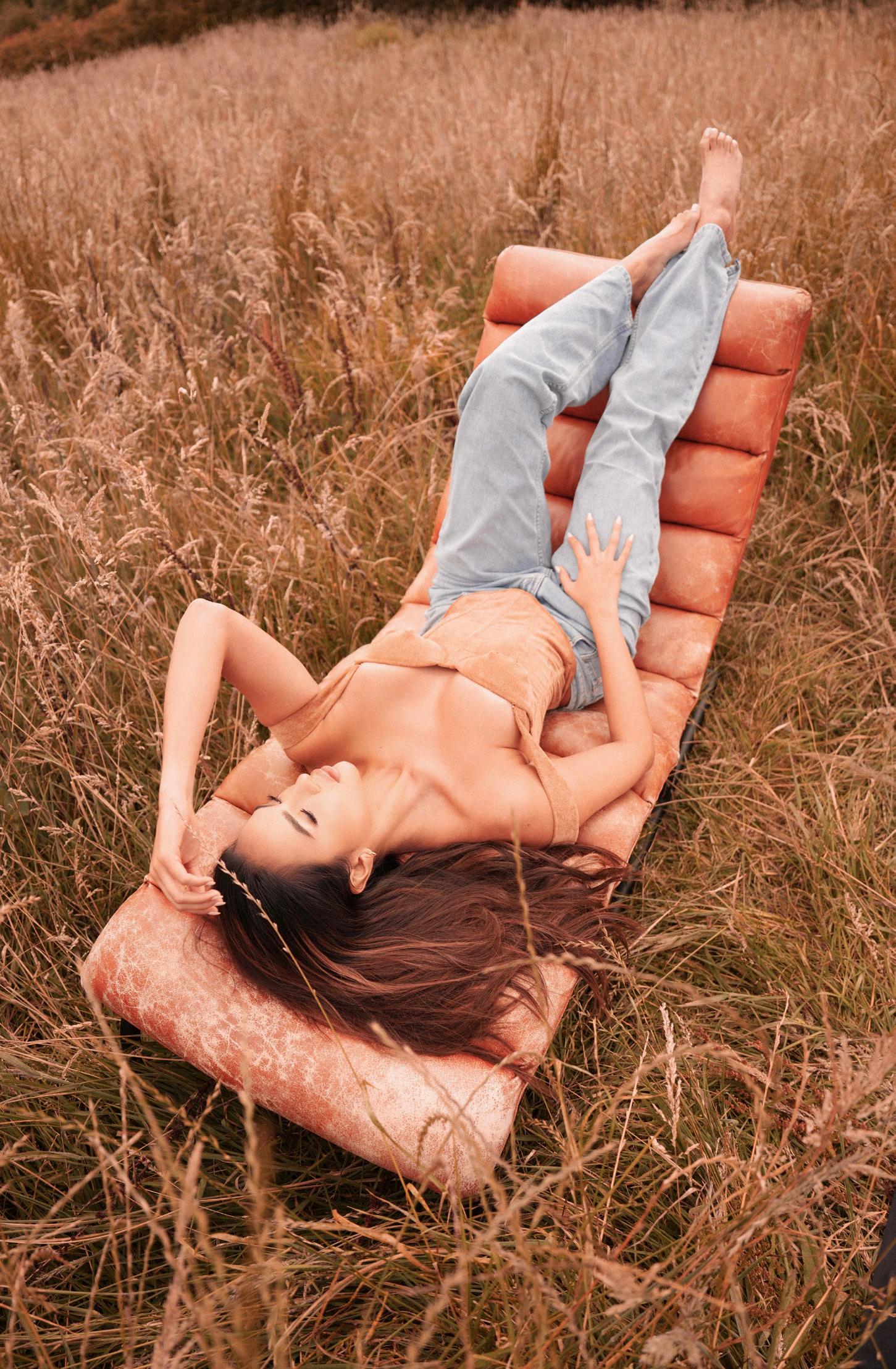

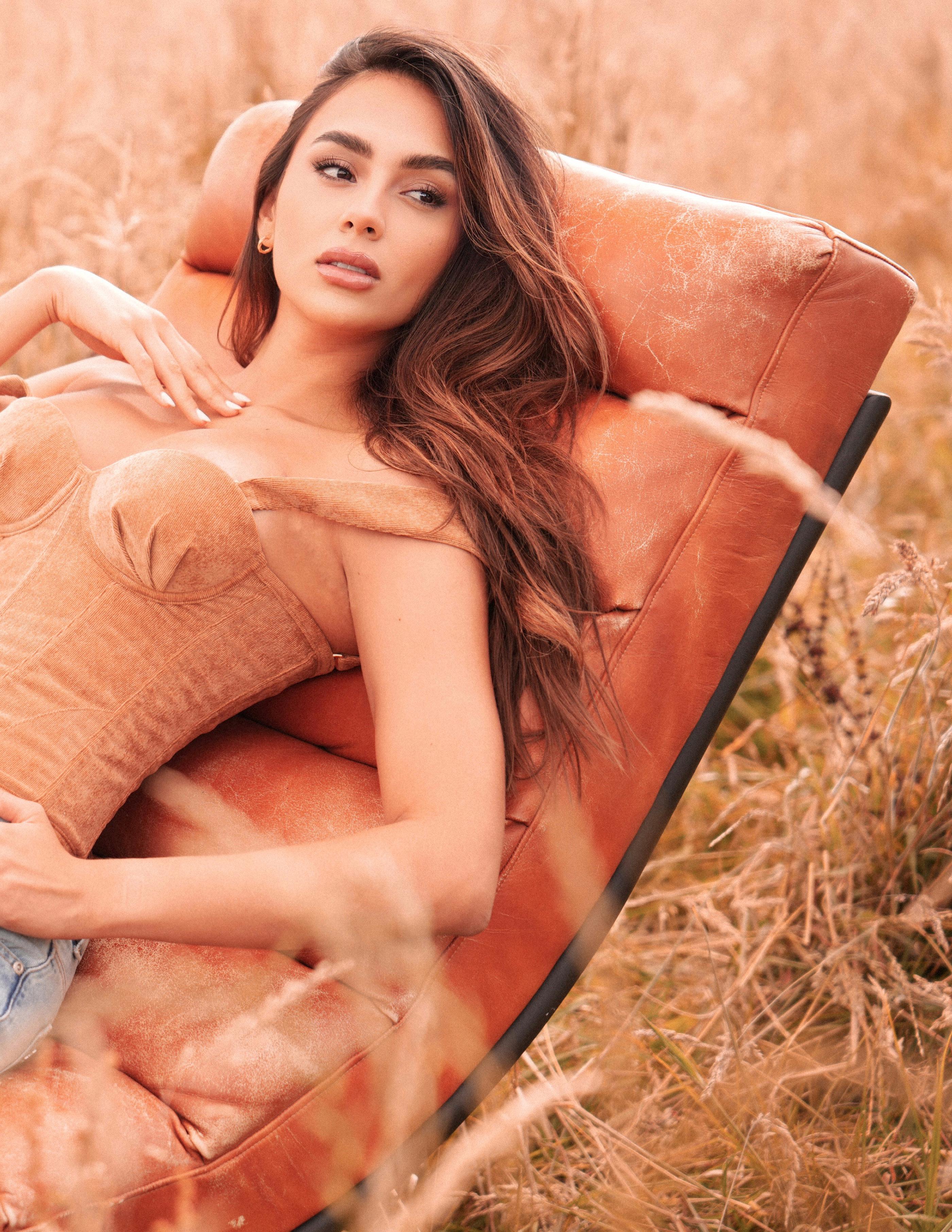
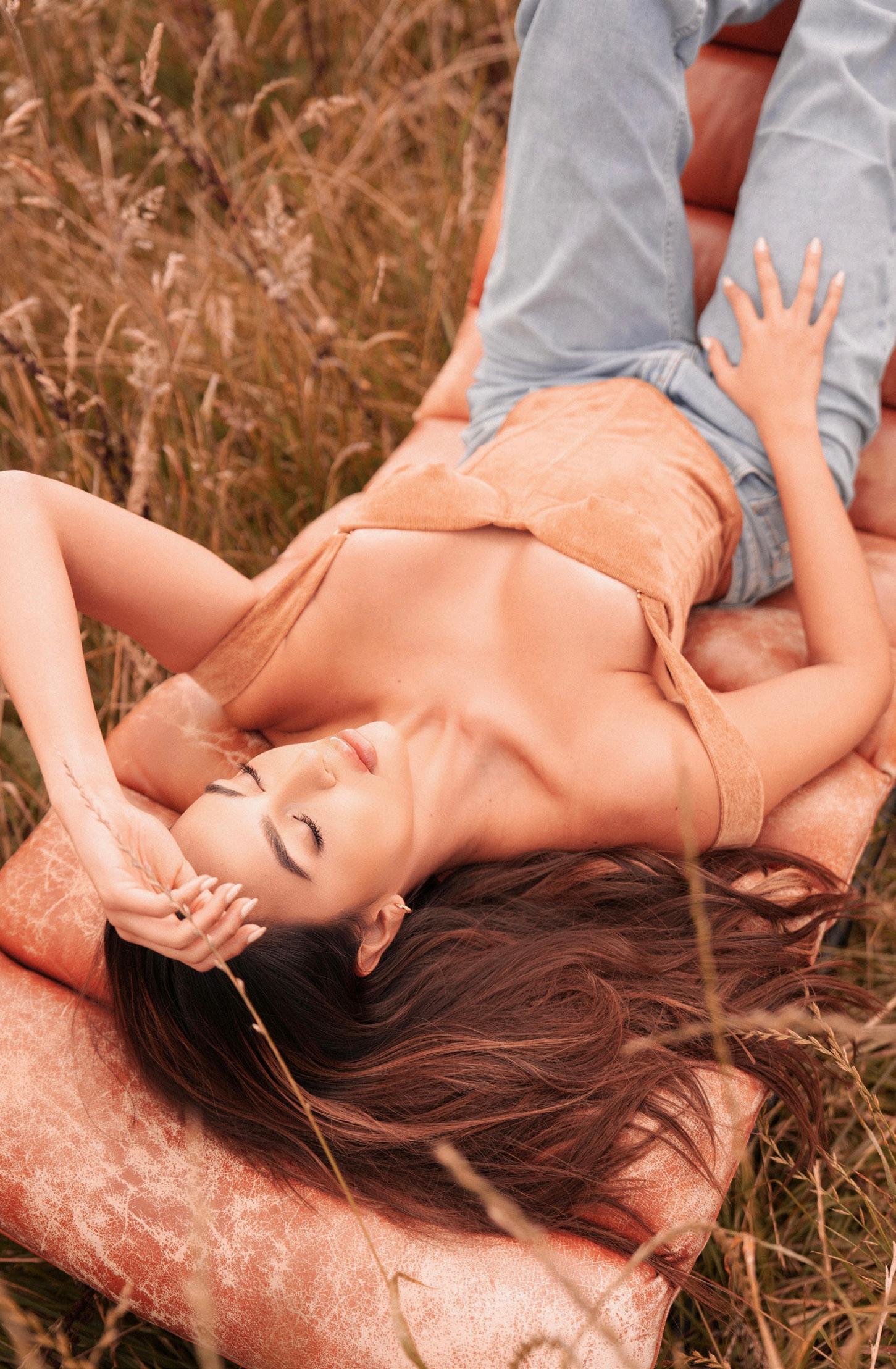

As temperatures dip and daylight shortens, style naturally gravitates toward comfort—but this season’s knitwear proves that cozy can still feel unmistakably elevated. From ultrasoft cashmere polos that layer effortlessly under tailored coats to sculptural fisherman sweaters with artisanal texture, fall’s knits are all about tactile luxury. These pieces aren’t just warm; they’re designed to anchor a modern wardrobe, adding depth, dimension, and quiet sophistication to every look. Whether you’re embracing tonal simplicity, leaning into oversized silhouettes, or exploring new spins on classic stitches, the knitwear edit ahead brings together the silhouettes and fabrics worth investing in now.
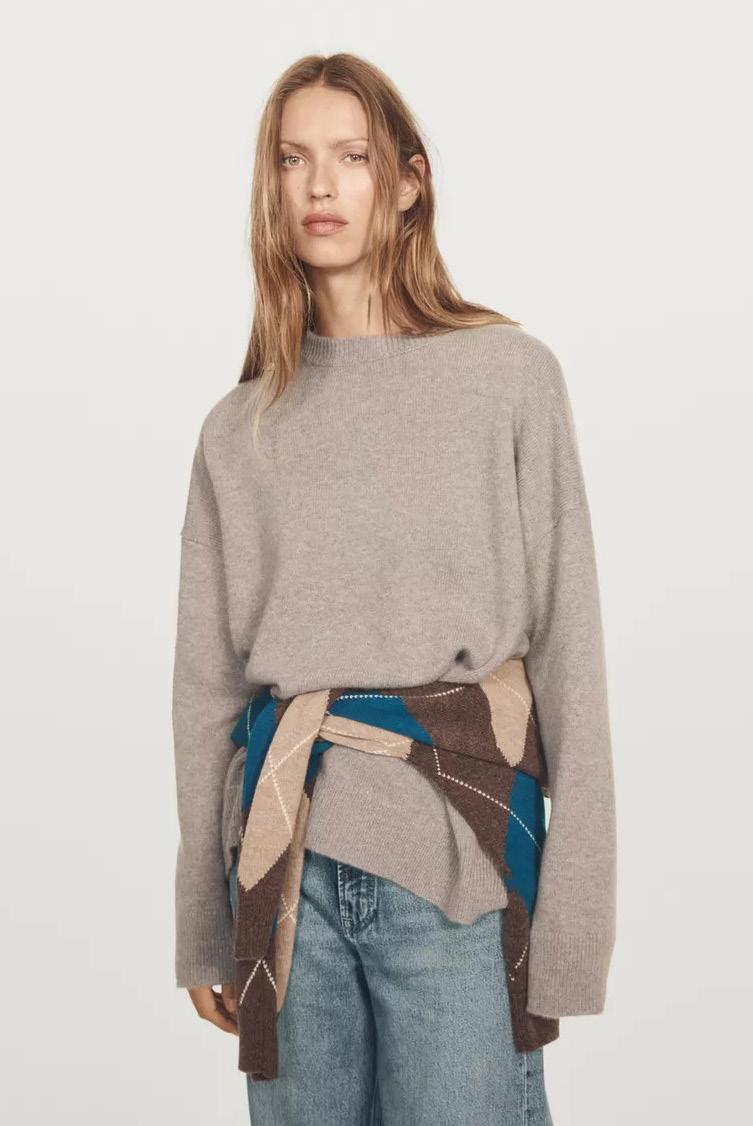

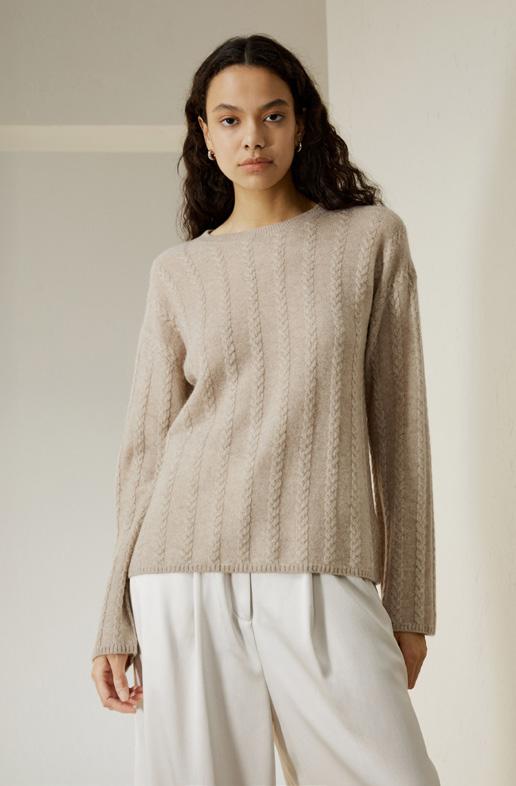
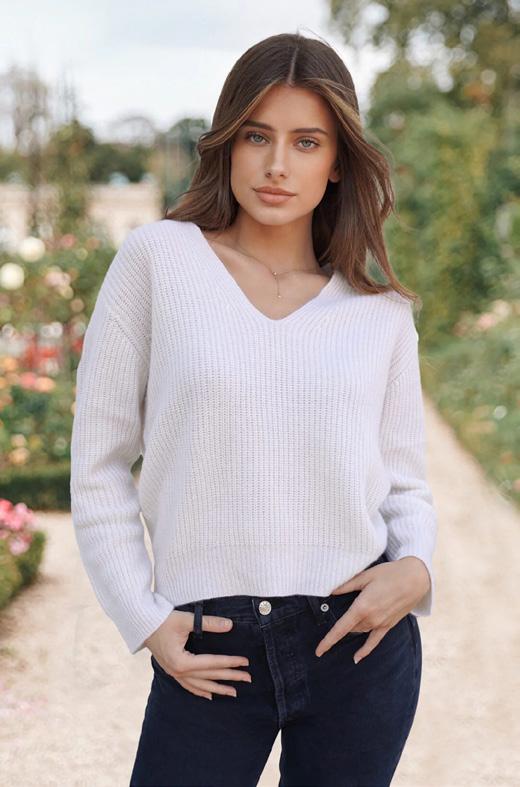
RAVELLA
COMO CASHMERE FISHERMAN SWEATER
$425.00
100% CASHMERE, VERY THICK FISHERMAN RIB, SUPER PLUSH.
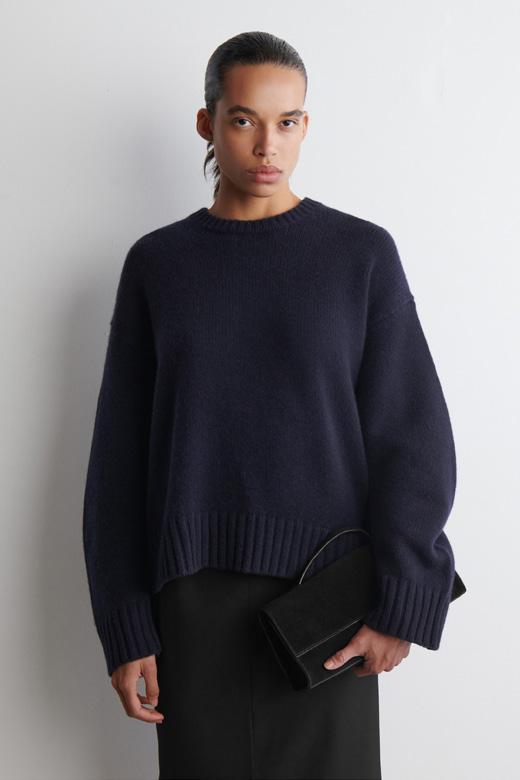
COS CHUNKY PURE CASHMERE CREW-NECK SWEATER
$425.00
CLEAN LINES, THICK WEAVE — PERFECT FOR EVERYDAY ELEVATED COMFORT.
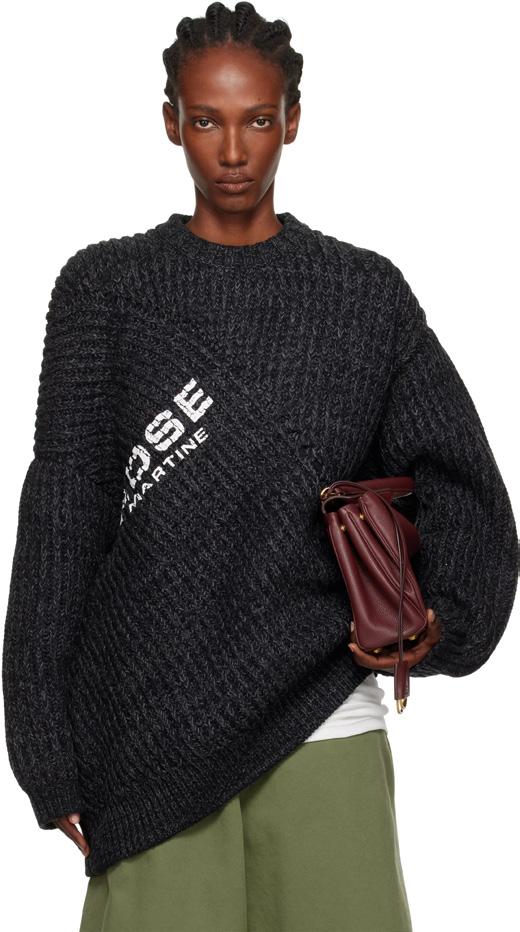
MARTINE ROSE GRAY ENGINEERED FISHERMAN RIB SWEATER
$524.00
BOLD, SCULPTURAL FISHERMAN RIB DESIGN — ADDS TEXTURE AND STRUCTURE TO ANY OUTFIT.
1. Layer smart: Use the polo or crewneck under a wool coat for elegance + warmth.
2.Texture mix: Pair chunky fisherman or Aran knits with sleek trousers or a silk midi skirt to balance bulkiness.
3.Neutral palette: Many of these knits come in soft neutrals (cream, beige, grey) — great for building a minimalist, refined winter wardrobe.
4.Care matters: Cashmere and high-quality wools benefit from hand wash or gentle cycles; always dry flat to maintain shape and softness.

UNIQLO
100% CASHMERE TURTLENECK JUMPER
$118.00
MINIMALIST AND SOFT, A PRACTICAL LUXURY STAPLE THAT WORKS UNDER BLAZERS OR ALONE.

MADIGAN CASHMERE SUSANNA CASHMERE ARAN SWEATER
$1,832.00
100% 8-PLY CASHMERE, HANDKNITTED IN IRELAND WITH TRADITIONAL ARAN STITCHES.
Interview by JOSE-MARIA JIMENEZ
From the rich cultural tapestries of Armenia to the glamour of Los Angeles runways, Diana Babayan has built a couture brand that speaks both to her heritage and her evolution as a global designer. As the creative force behind Yasaman Fashion , Diana transforms memories, color, and tradition into garments that embody both art and empowerment. Her designs—often featuring intricate handmade embroidery and natural textures—carry echoes of her childhood, her grandmother’s teachings, and the timeless beauty of Armenian craftsmanship.
Now a prominent figure in the international fashion scene, Diana ’s creations have graced stages from Los Angeles Fashion Week to the Cannes Film Festival , blending heritage with haute couture in a way that feels deeply personal and universally resonant. In this interview with QP , she opens up about her journey from Yerevan to LA , the inspiration behind Yasaman Fashion , and the legacy she hopes to leave for the next generation of designers.

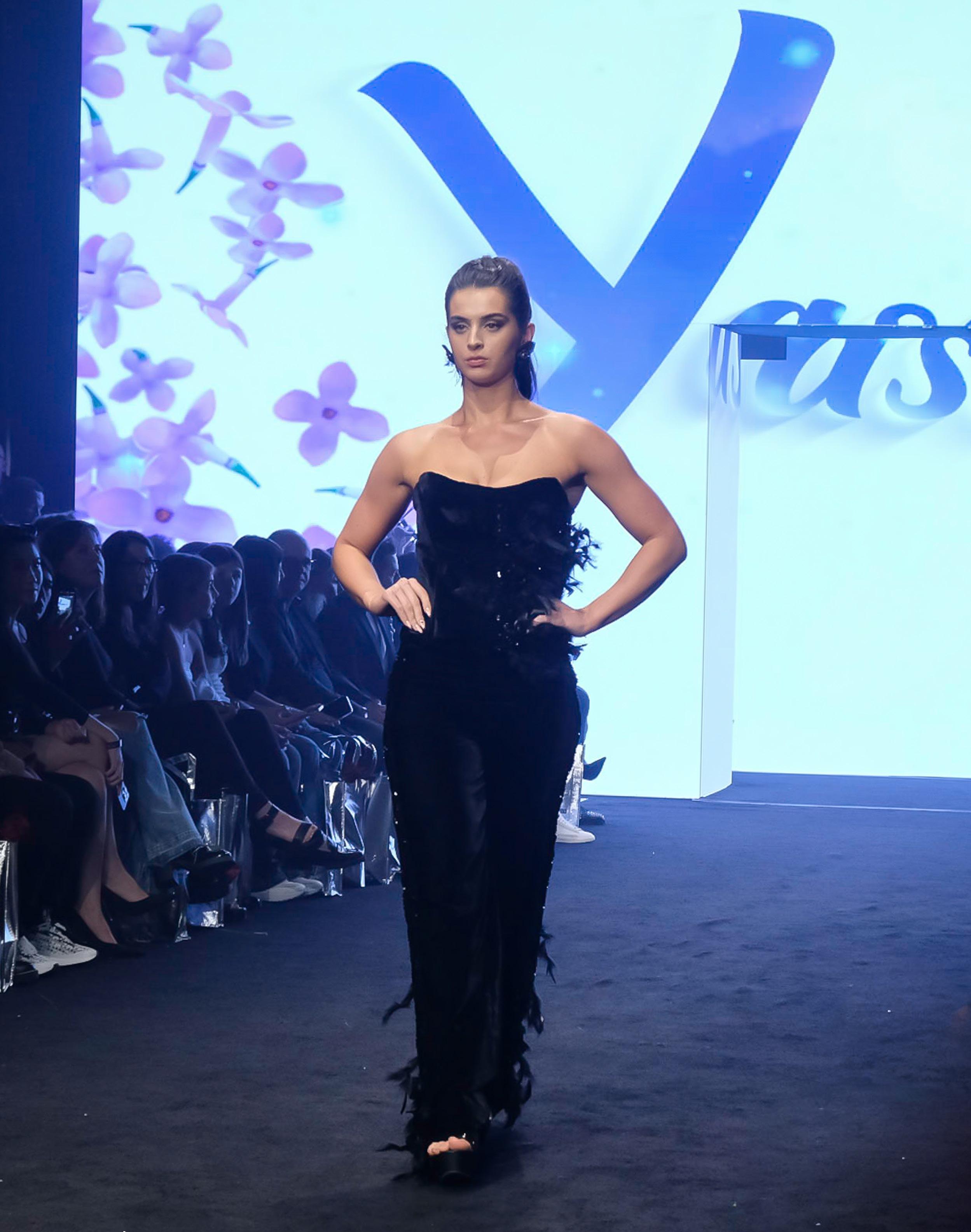
Diana, you’ve said fashion has been your language of expression since childhood. What are some of your earliest memories of creating or experimenting with design in Armenia?
I got inspired by the world famous designers of the time. Their ability to create something amazing from simple fabric that's what energized me the most. But the real spark was given to me by my grandma who taught me how to do handmade embroidery.
Growing up surrounded by Armenian culture, color, and tradition, what specific elements of that heritage continue to influence your work today?
The vivid spectrum of the colors, the shape of the folk garments, and overall the nature of Armenia formed my vision that still leads my work.
At just sixteen, you pursued fashion seriously. What gave you the confidence and clarity at such a young age to commit to this path?
I’ve always been very focused on my plans and goals, I guess the confidence came from that.
Moving from Armenia to the United States must have been a major transition. How did this move shape your perspective as both a woman and a designer?
so sa another tribute to the traditions, I decided to rebrand as Yasaman Fashion .
Yasaman Fashion blends Armenian artistry with modern haute couture. How do you balance tradition with innovation in your collections?
Every single garment is a unique creation of art, led by practicality that carries my identity by using a lot of handmade embroidery inspired by nature, natural colors, shapes and textures. Your designs have been showcased at Los Angeles Fashion Week and Art Hearts Fashion. How did those experiences shape the visibility and growth of your brand?
“Moving to the United States opened my eyes to endless opportunities.”
The move was very challenging. Totally new lifestyle, different approach to everyday things, and of course completely different mindset of the people around me. The biggest plus in the move was the fact of realizing the opportunities the United States gives, and I started to explore those opportunities.
What inspired the name Yasaman Fashion, and what does it represent to you personally beyond the literal meaning?
Well, I started as Diana Babayan back in Armenia in 2006. From Armenian "yasaman" translates as "Lilac". This flower is my mom's favorite flower,
I learnt a lot from these events! The feedback I got from the professionals and regular visitors is priceless. These are the kinds of events that help you better understand the market, the trends, and the most important, they help you polish your work and outline and guide your future path.
Seeing your creations on the red carpet at the Cannes Film Festival is a remarkable milestone. Can you take us behind the scenes of that moment—what it felt like and what it meant for your journey?
Cannes is probably one of the most important events in the show business/fashion industry. I always try to measure my achievements and Cannes is one of those measurements. It helps me to access my past work and plan for the future.
Many designers see couture as wearable art. How do you approach the process of transforming a vision or story into a finished gown?
It really depends who the gown is being created for or what the occasion will be. I always try to emphasise the personality of the model with a strong focus on practicality. The gown should be a pleasure to wear and never a headache. Empowerment is central to your philosophy.
How do you want women to feel when they step into one of your designs?
They need to feel comfortable, that’s number 1 priority. They have to look very special and unique. I want all women to feel that they are the main person during the event they attend.
What challenges have you faced as an Armenian designer establishing a couture brand in Los Angeles, and how have you overcome them?
The biggest challenge was to understand the mentality and the taste of the people. I was observing, studying what was going on in the market, as well as researching what my colleagues were doing.
Couture requires extraordinary attention to detail. What is one element of craftsmanship you consider non-negotiable in every Yasaman gown?
Meticulous attention to the details, a lot of hand work, especially handmade embroideries or sometimes hand paintings.
You describe fashion as both art and identity. How does your personal identity—your roots, experiences, and values—shape the narratives
in your collections?
The vivid spectrum of the colors, the shape of the folk garments, and overall the nature of Armenia formed my vision that still leads my work.
As you look toward the future, what new directions or creative boundaries do you see Yasaman Fashion exploring?
In the near future I'll be at the Paris Fashion show, which will open new horizons. Dreams are big (especially if you think of them as a part of a real plan). Being a part of a world known fashion house or being able to create next to an iconic fashion designer, and so much more. What legacy do you hope to leave in the fashion world through Yasaman Fashion, and what message would you like young aspiring designers—especially from Armenia—to take from your journey?
Well, it’s too early to speak about the legacy, there is still so much to explore. My message or advice will be to never stop dreaming bug, never lose the path and always be presistant.
“Women should feel comfortable, unique, and like the main person at any event they attend.”

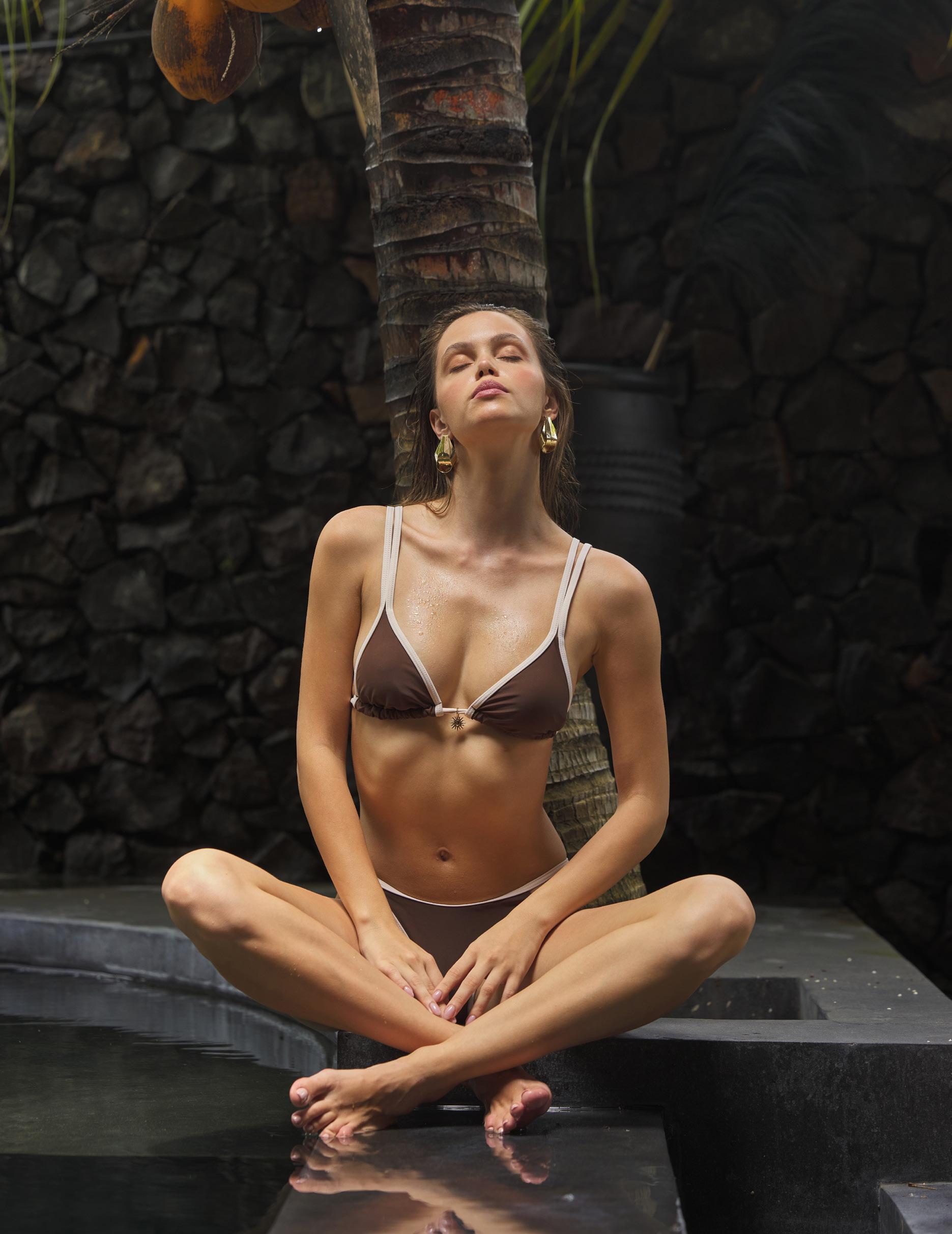
PHOTOGRAPHER: NICHOLAS BORSODI @njb3photo
BOBBLES & LACE
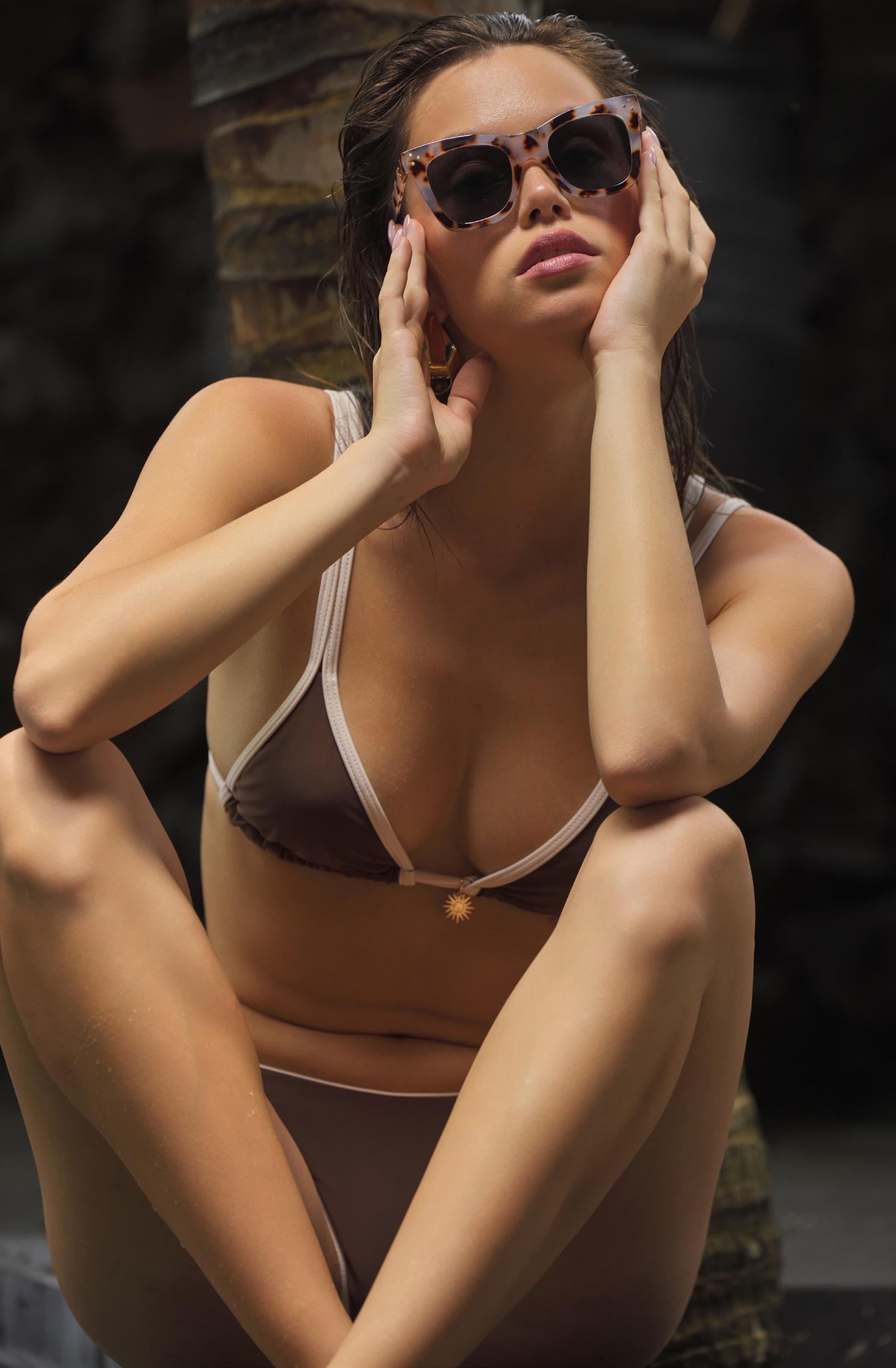
MODEL: PAULINE @pollinoma
AGENCY: CASTAWAY MODEL MANAGEMENT @castawaymodelmanagement
CREATIVE DIRECTOR & FASHION STYLIST: MAUREEN BORSODI @thelalook
MAKEUP ARTIST: VAL MURDOCH @valv_mua
Location: ADĒ LIVING @ade.living
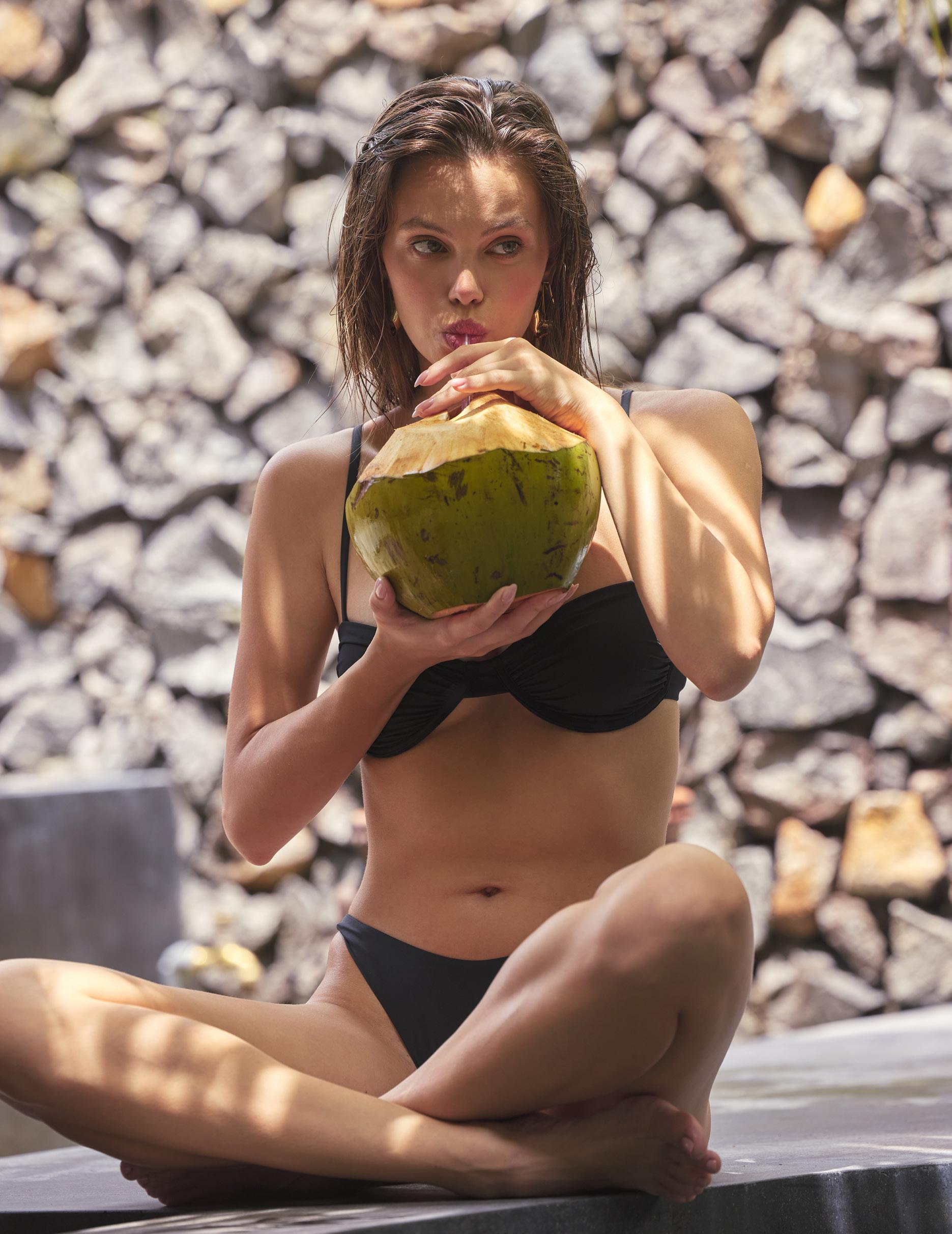
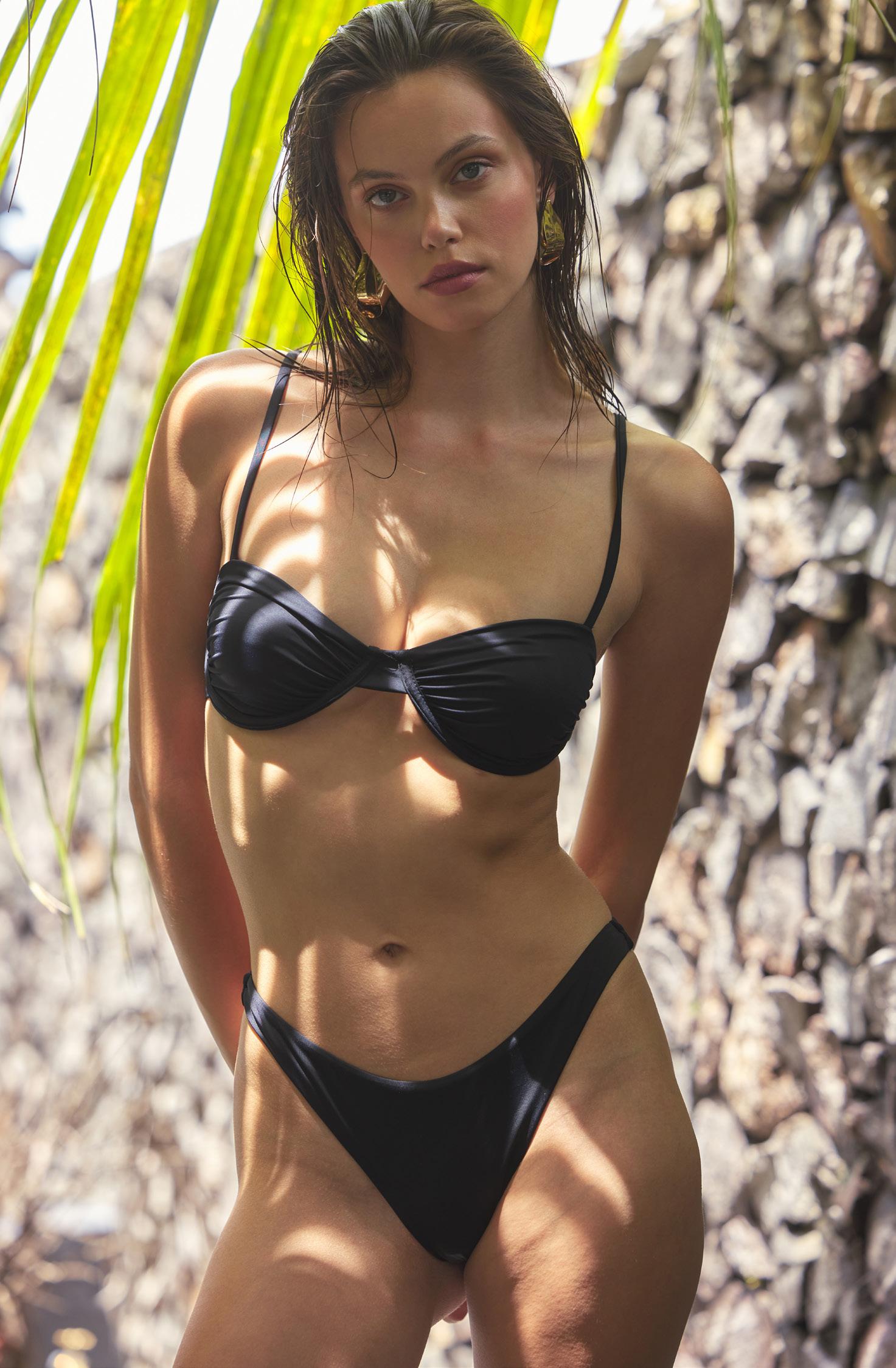


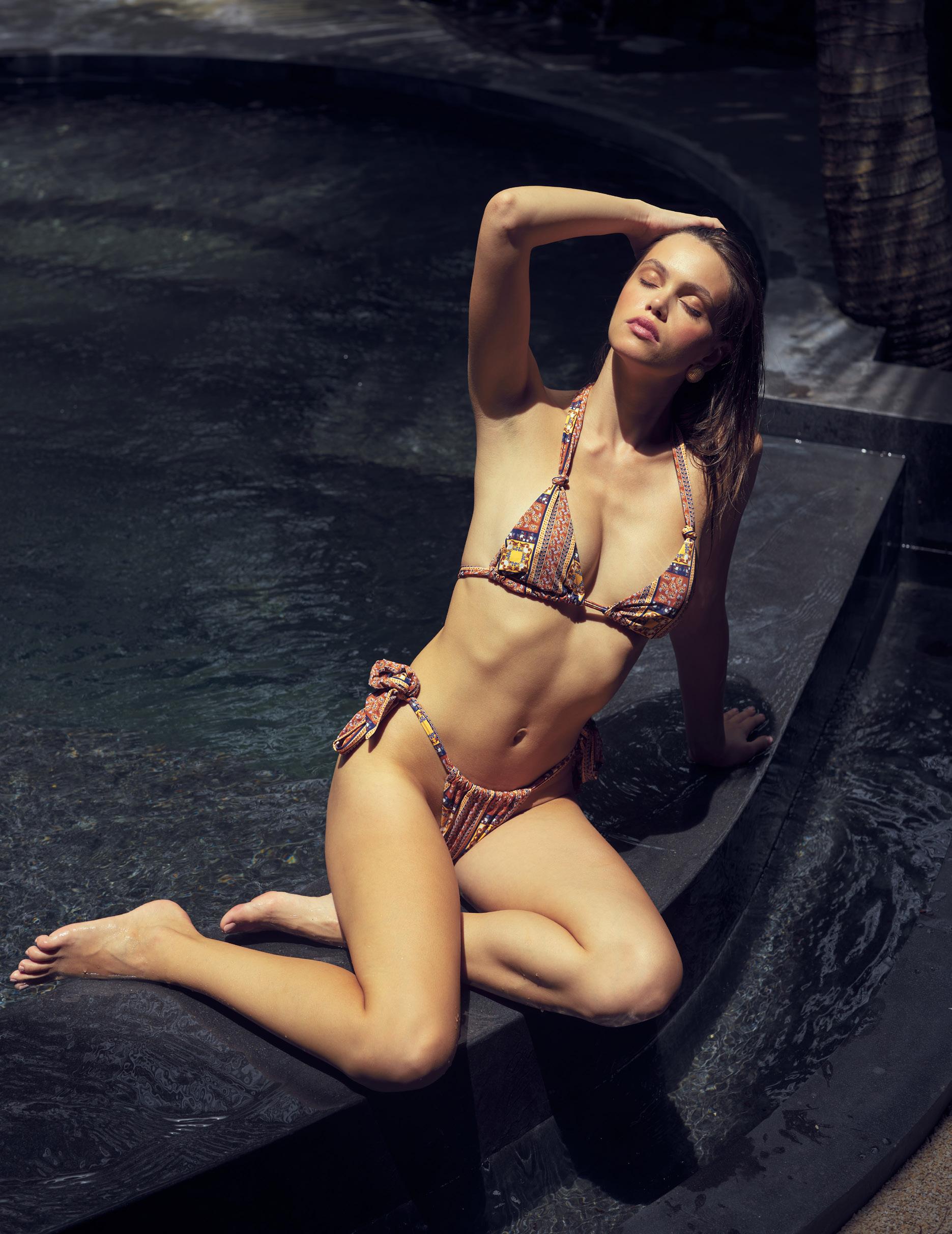
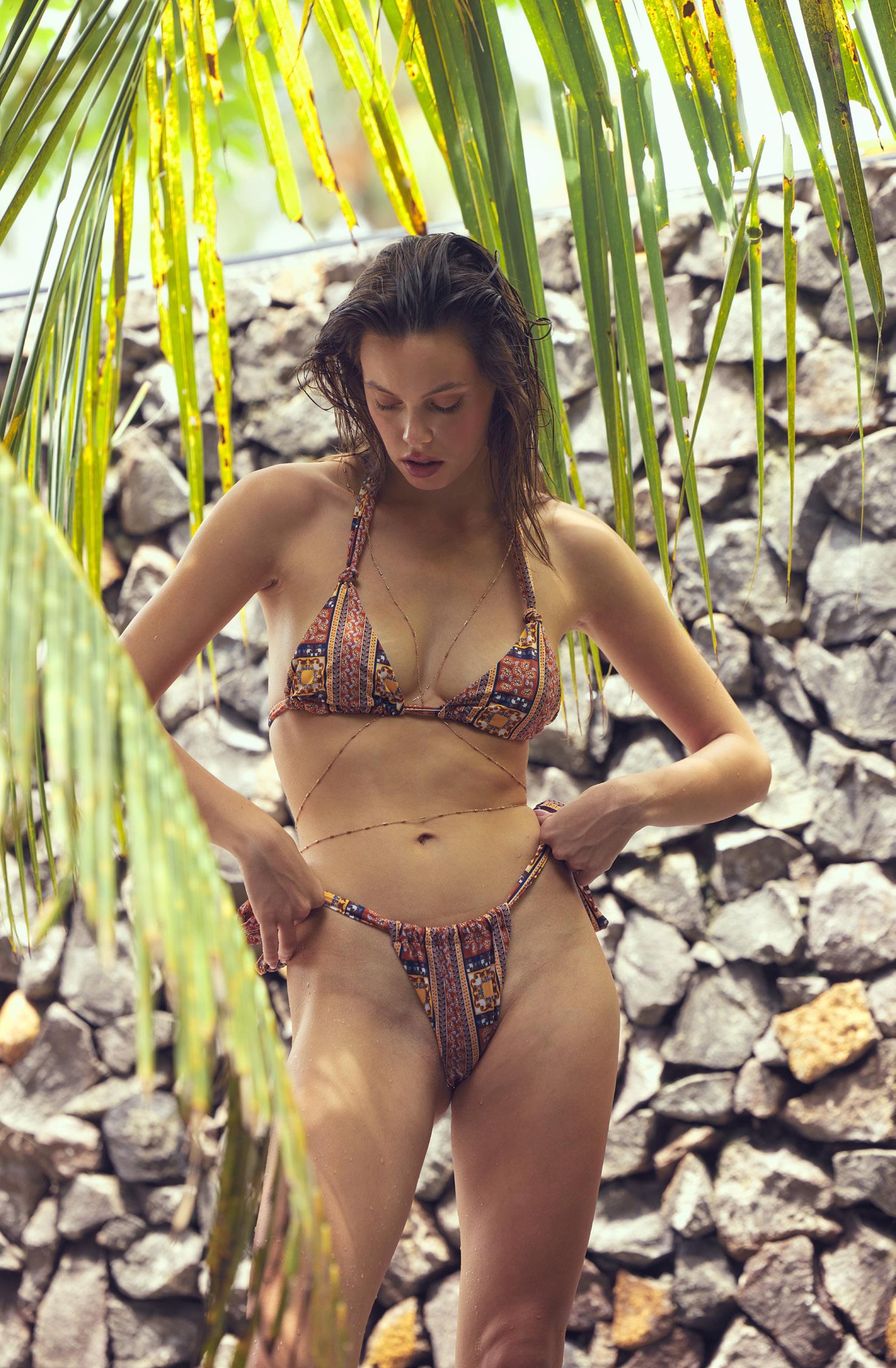
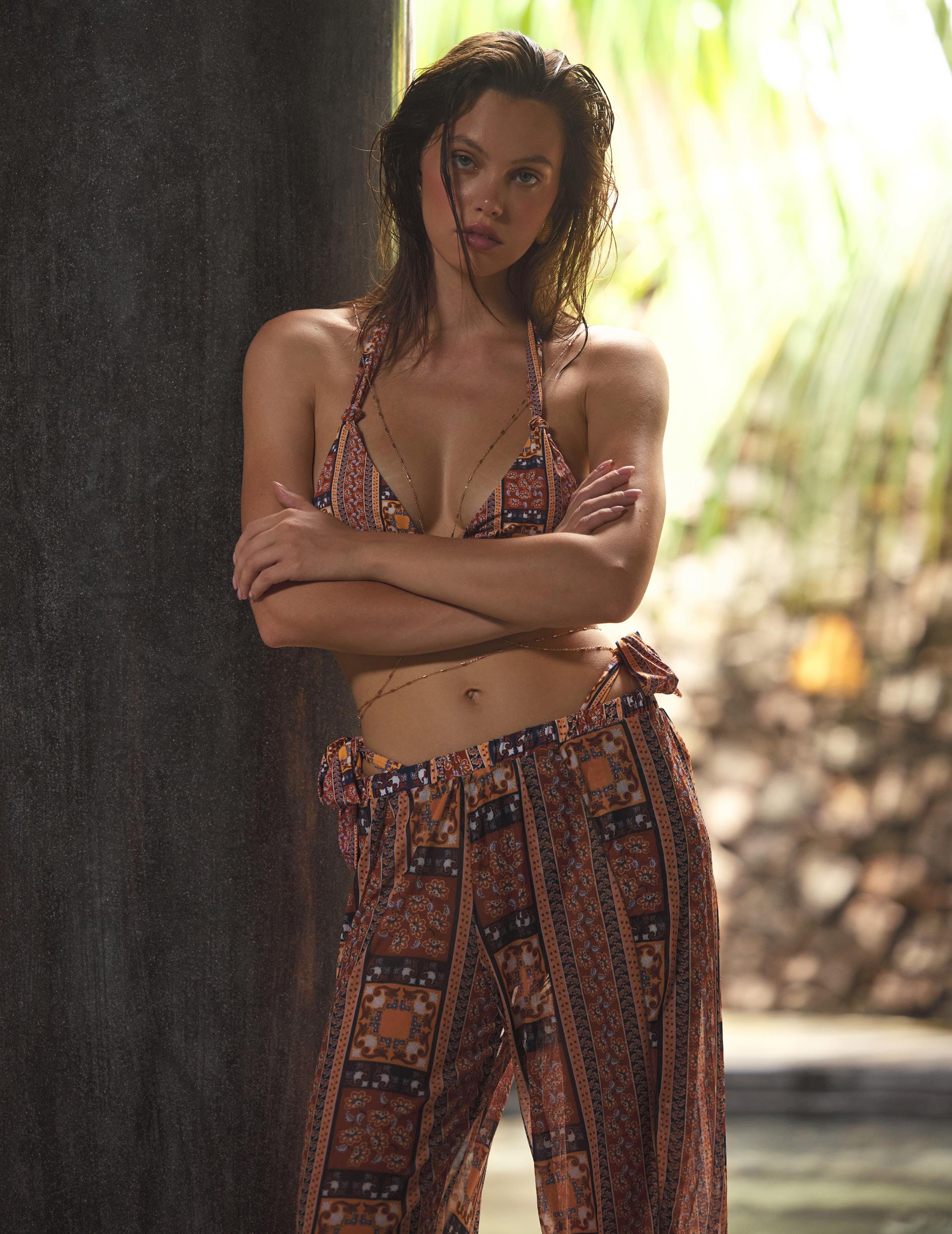
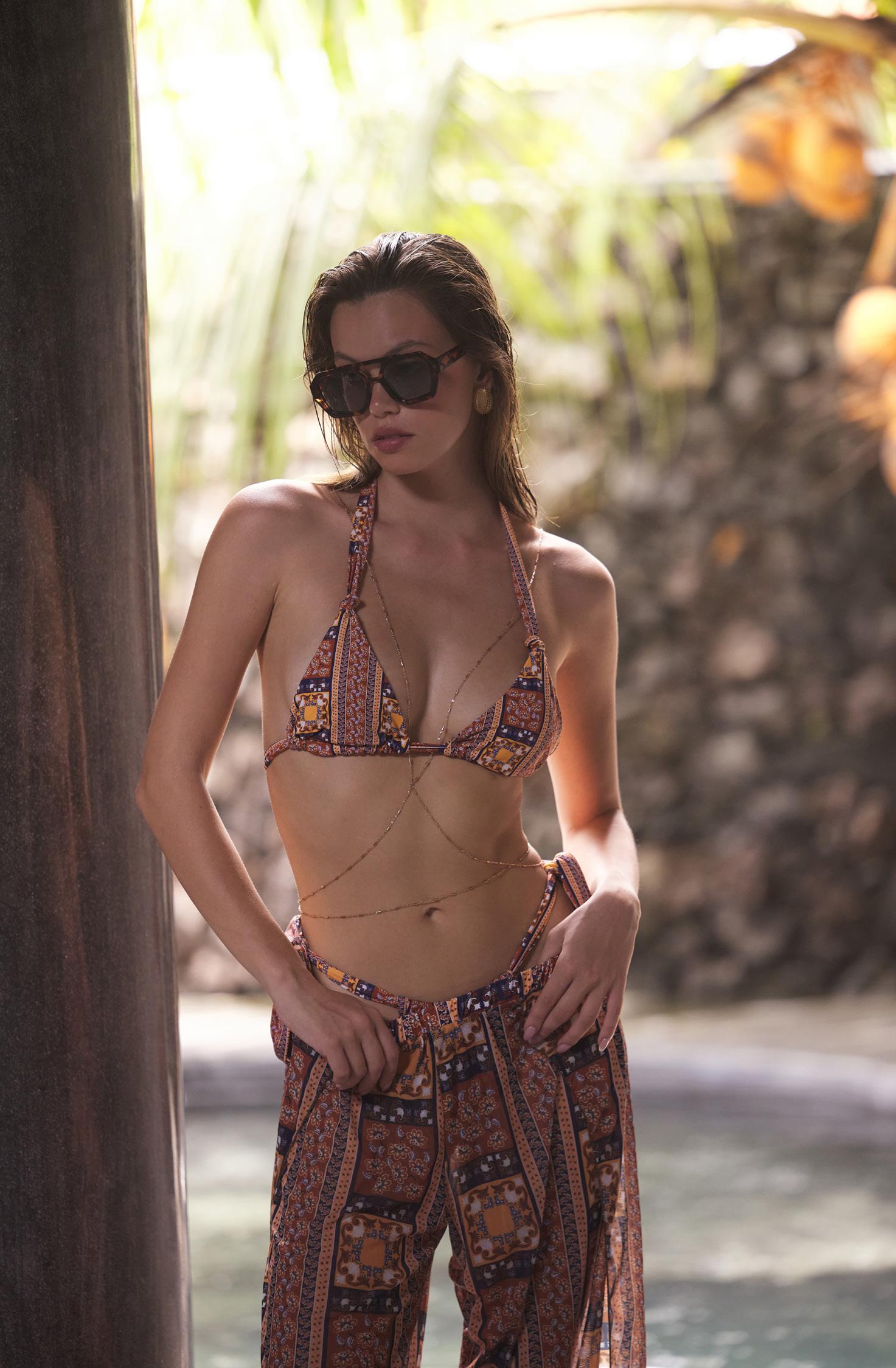
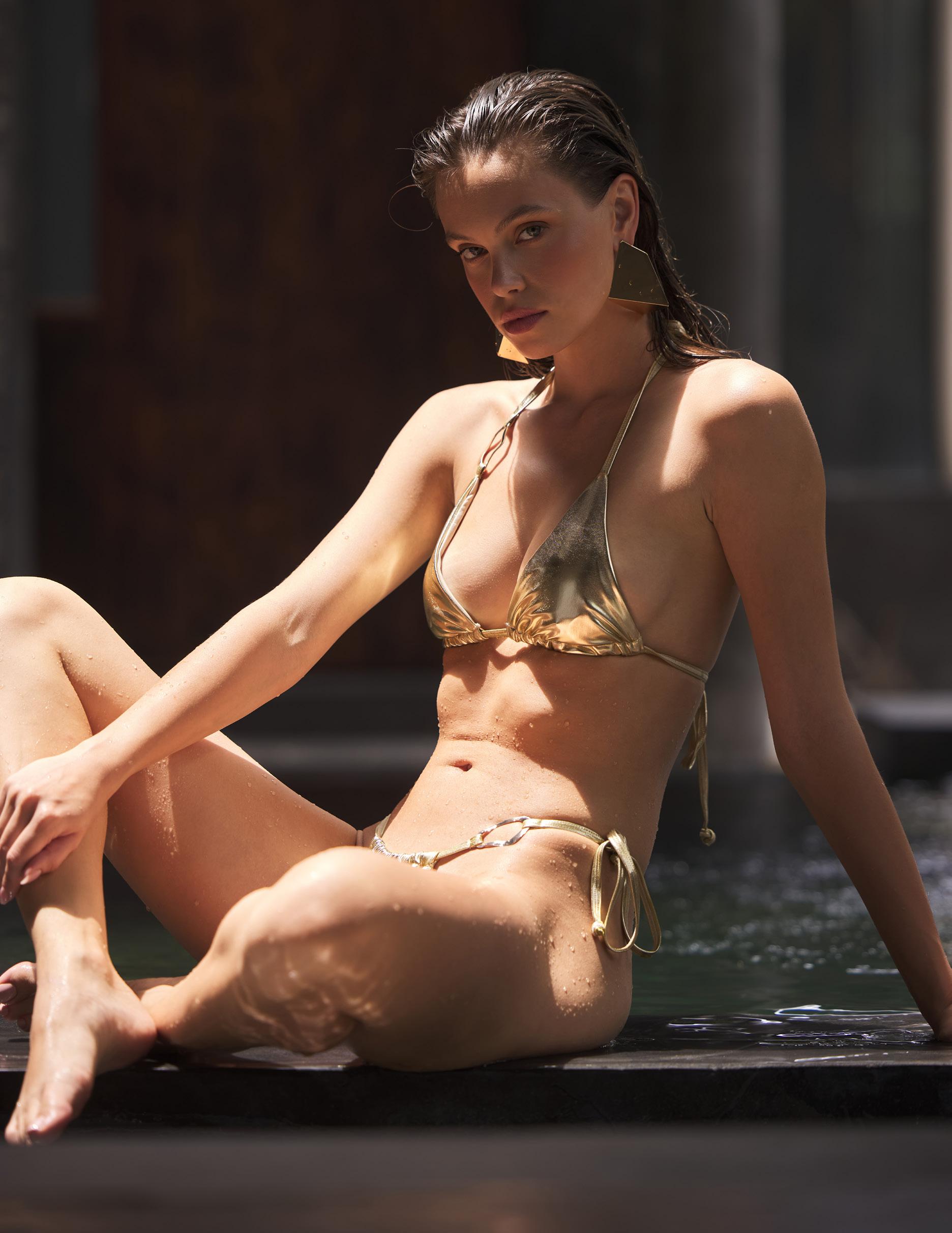
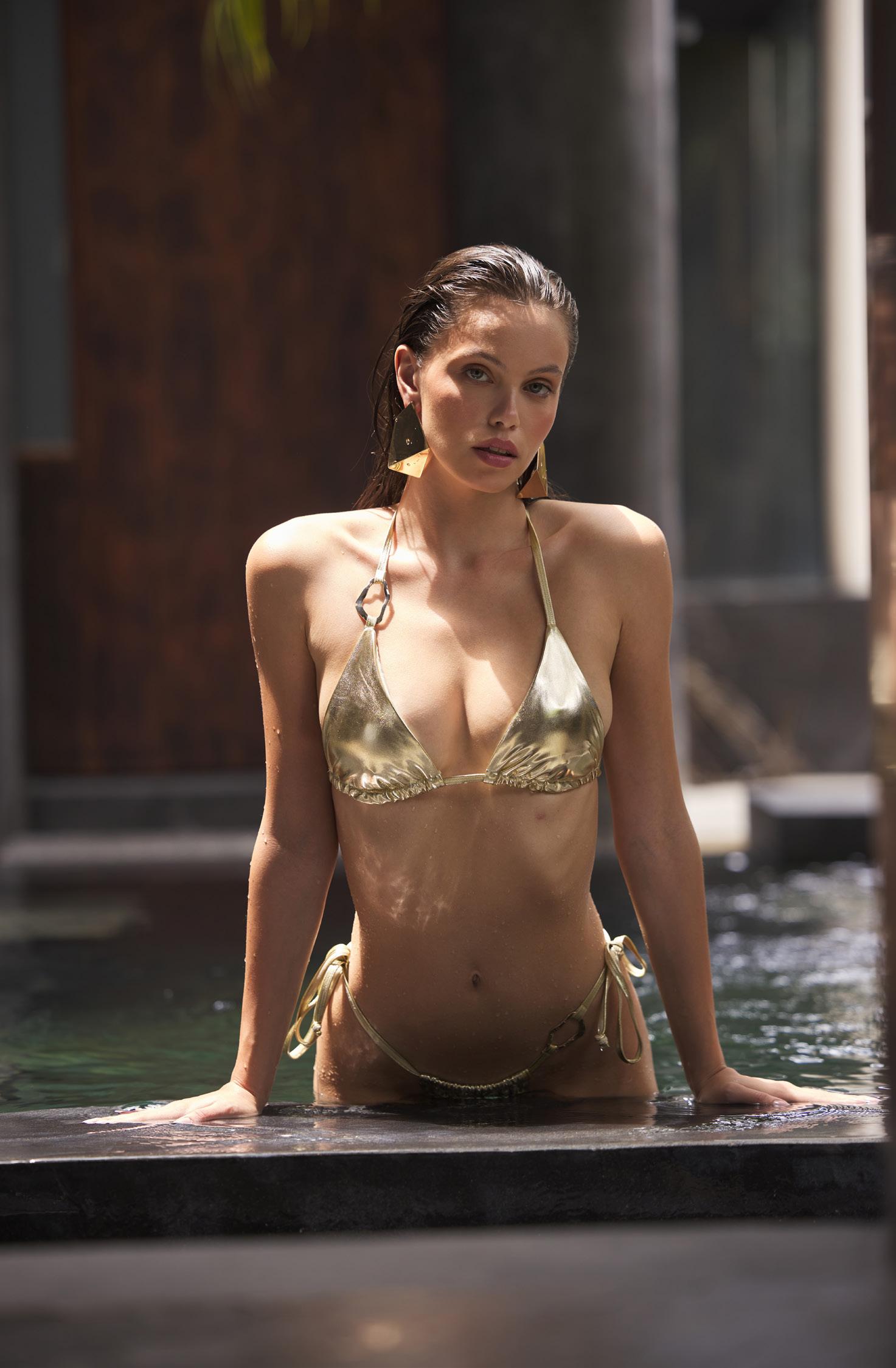


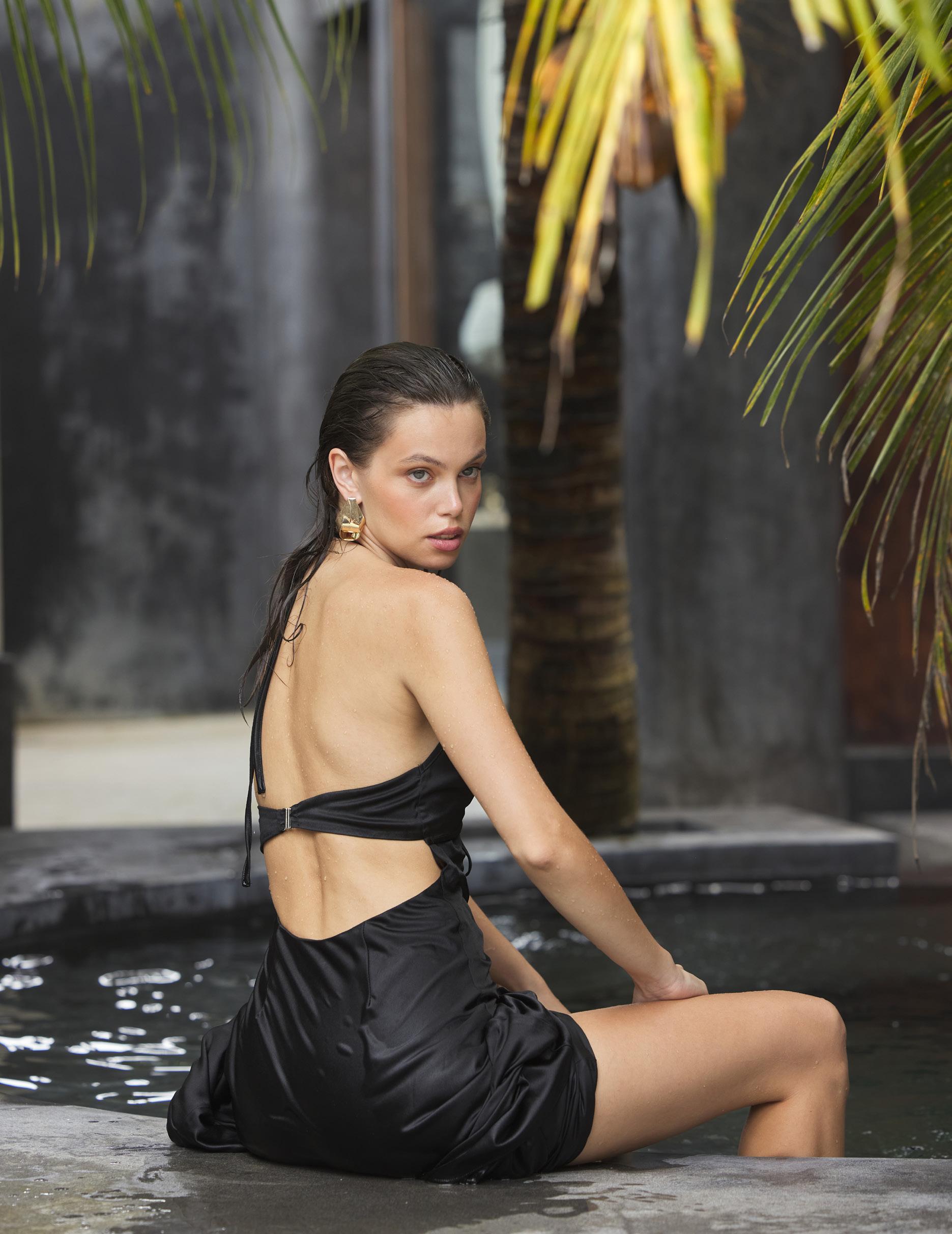
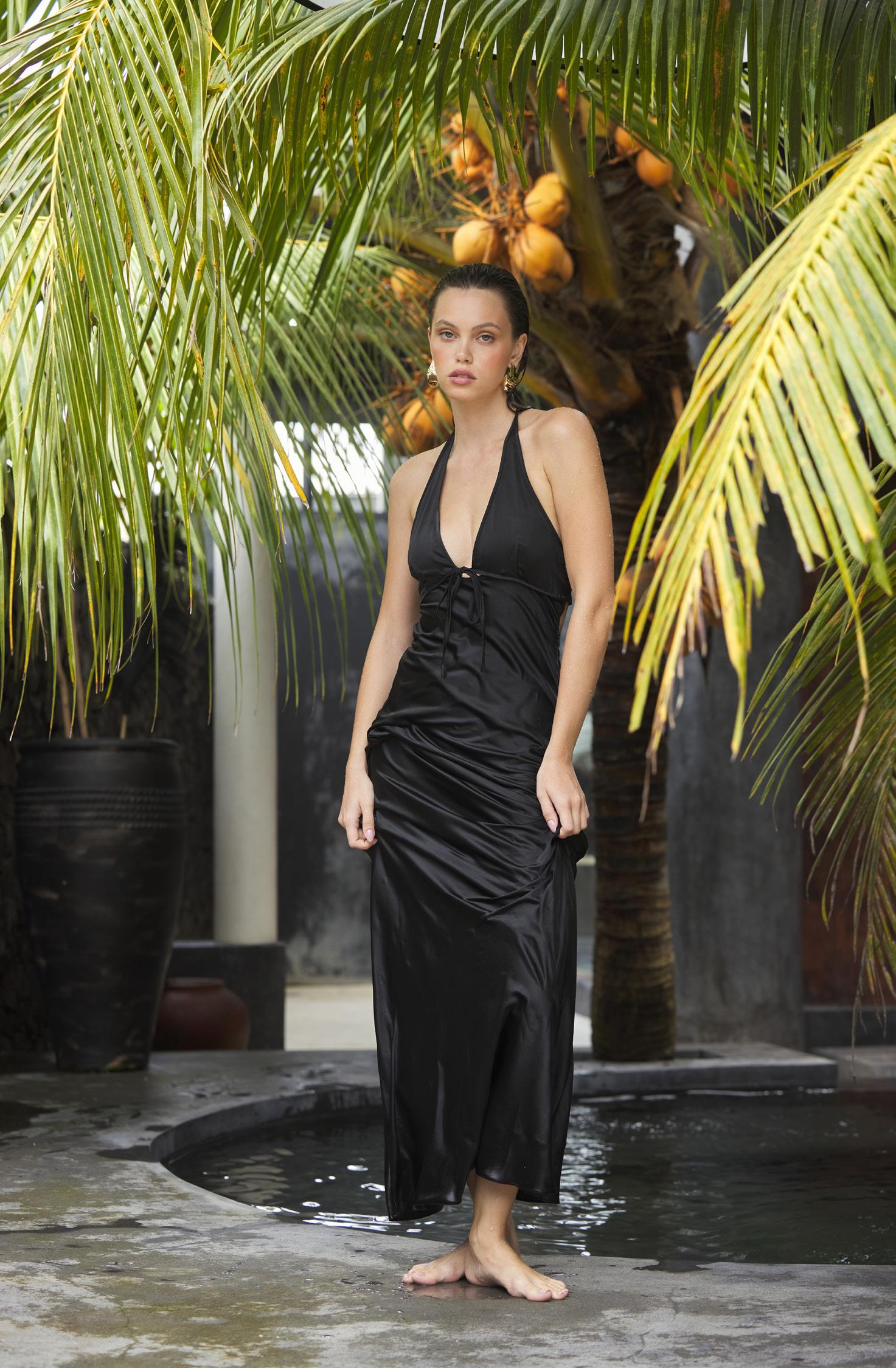


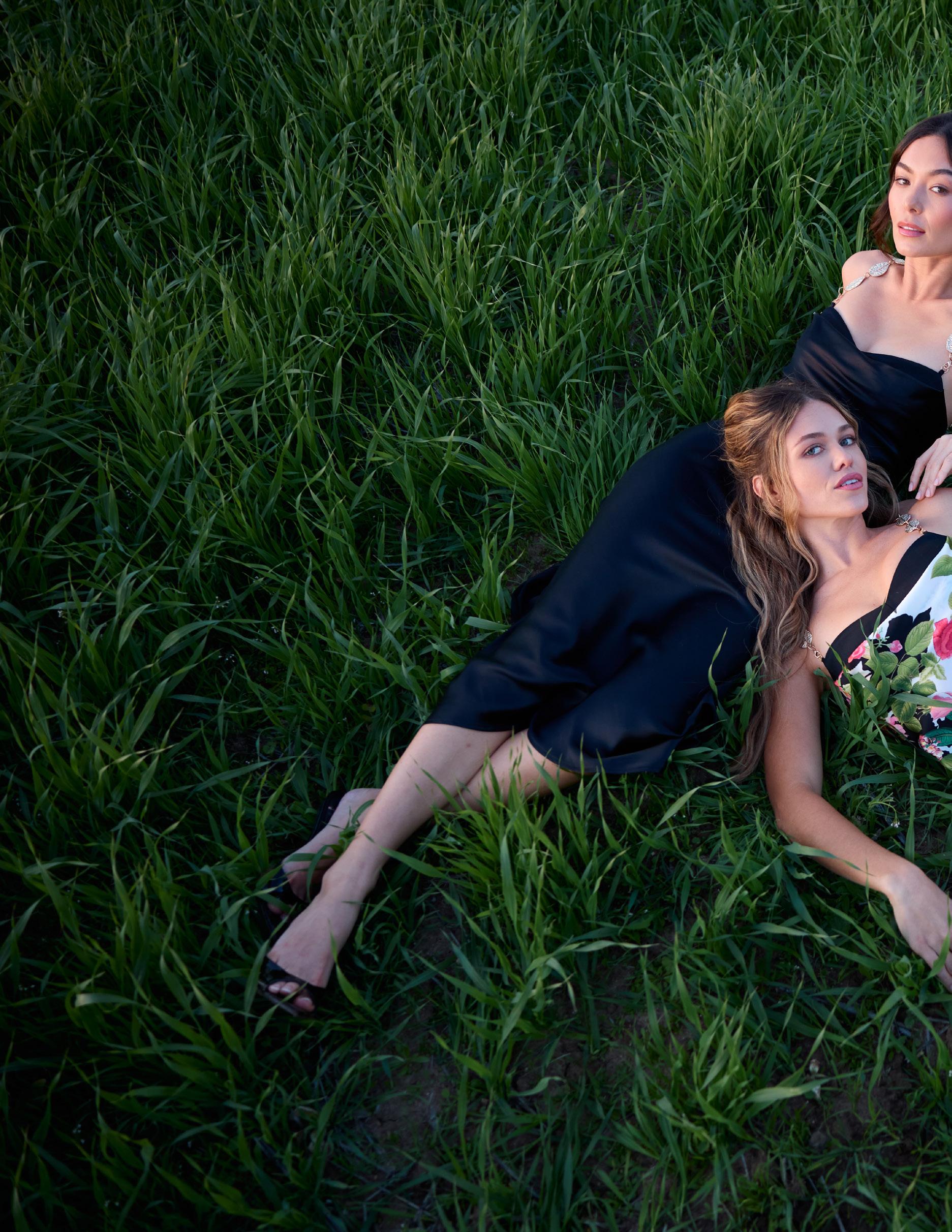
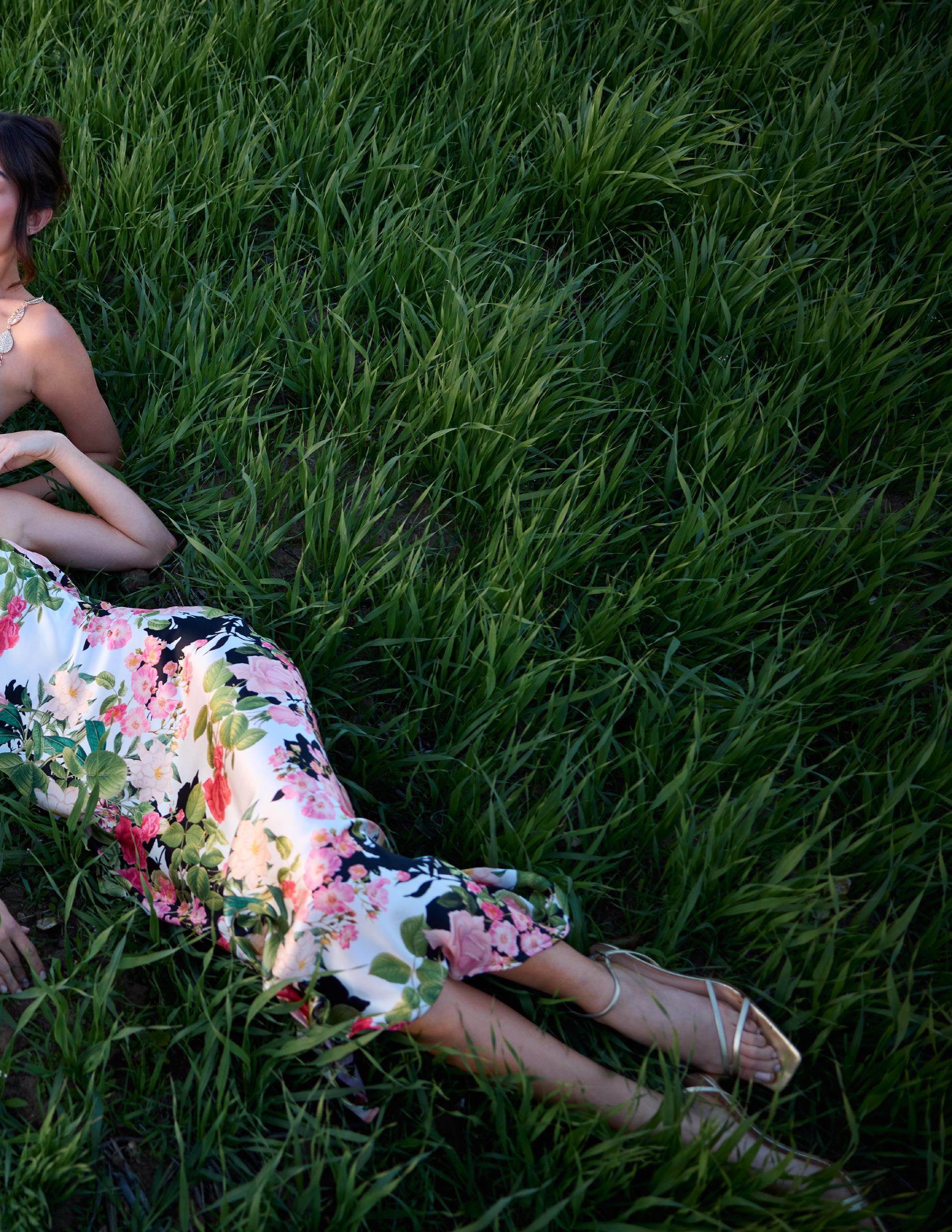
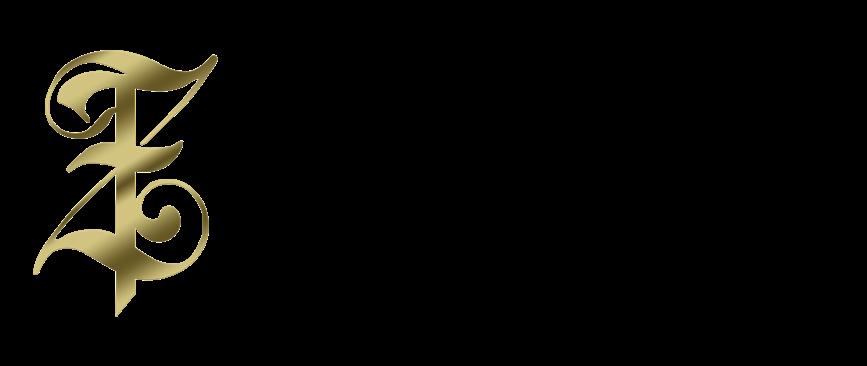

BY PEDRO TORRES